


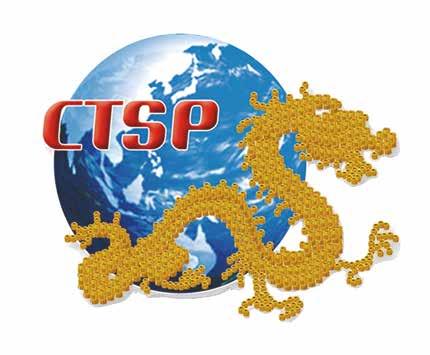



Hardware & Fastener Components no.58/2023 002






004 Hardware & Fastener Components no.58/2023





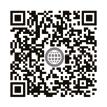

006 Hardware & Fastener Components no.58/2023



008 Hardware & Fastener Components no.58/2023













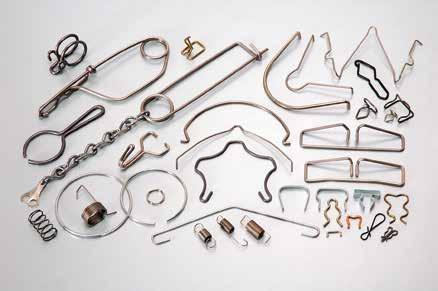
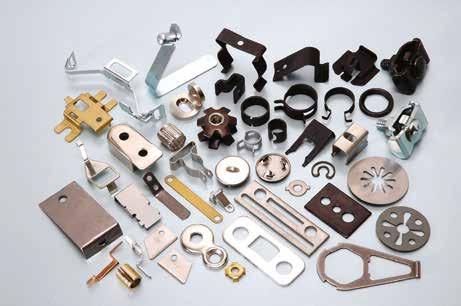






Hardware & Fastener Components no.58/2023 009
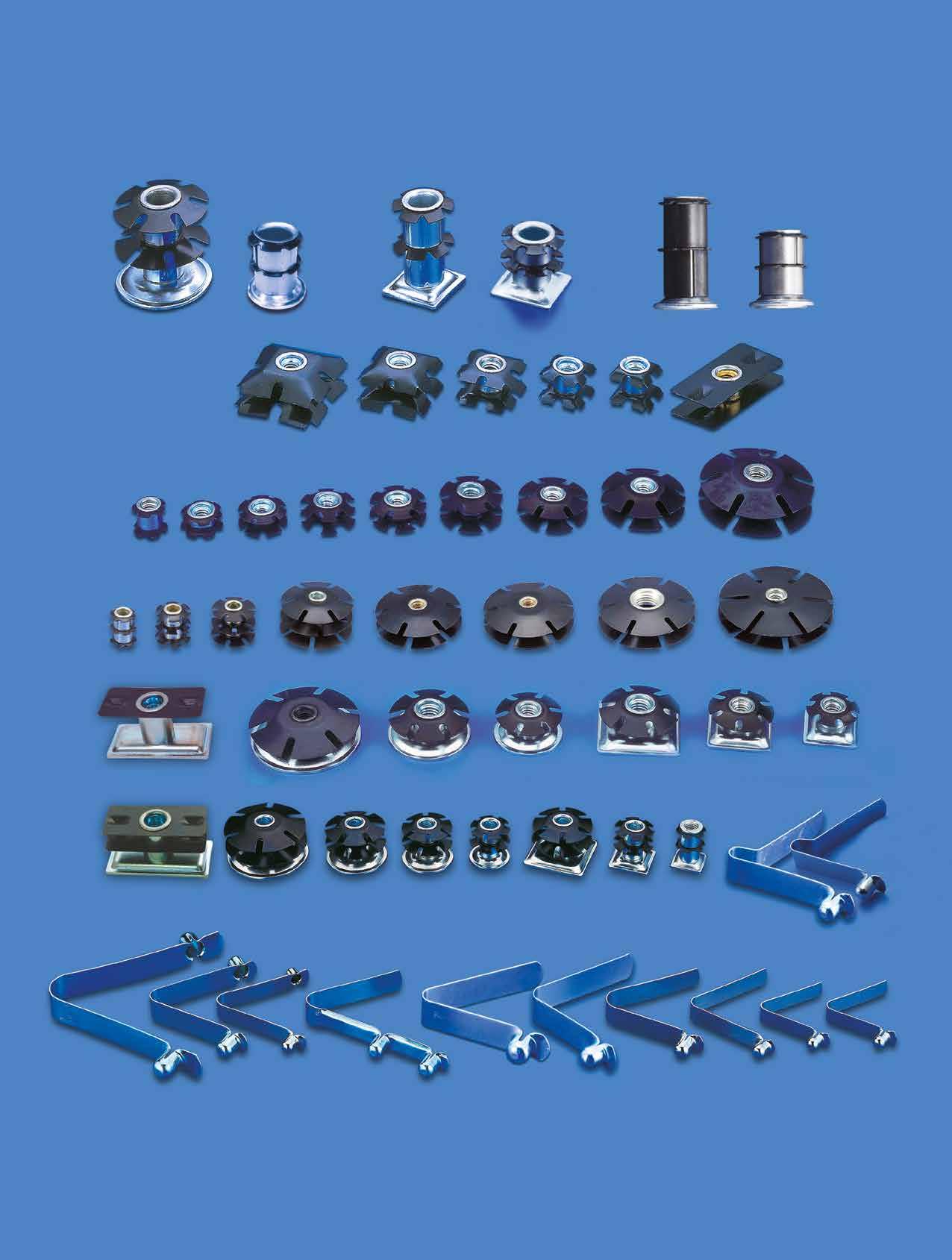
010 Hardware & Fastener Components no.58/2023





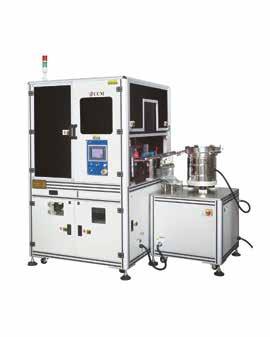



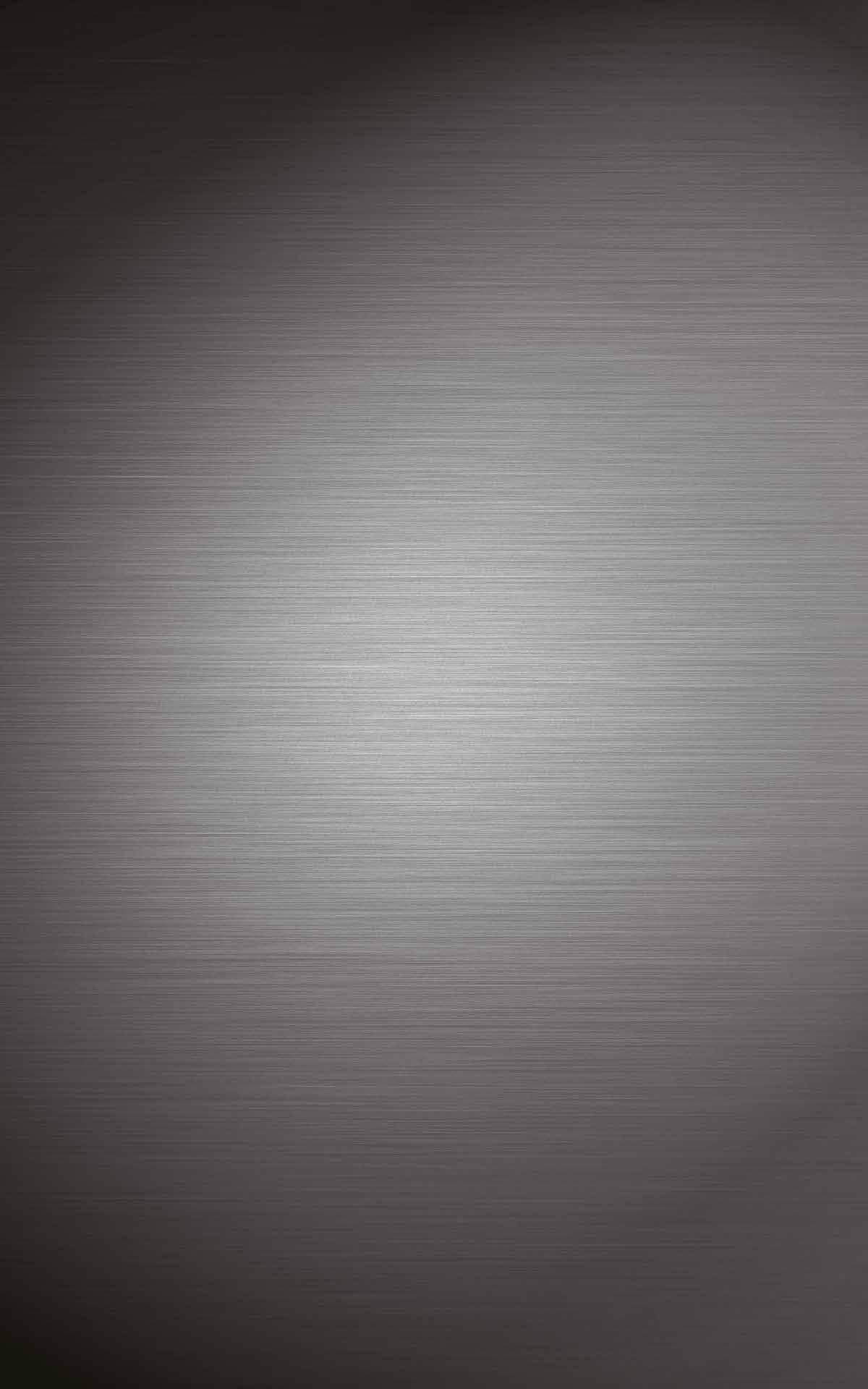















Hardware & Fastener Components no.58/2023 013



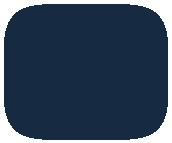


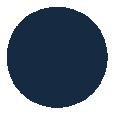








014 Hardware & Fastener Components no.58/2023













018 Hardware & Fastener Components no.58/2023

Hardware & Fastener Components no.58/2023 019





020 Hardware & Fastener Components no.58/2023



Hardware & Fastener Components no.58/2023 021

022 Hardware & Fastener Components no.58/2023



Hardware & Fastener Components no.58/2023 023
Multi-certified Brass
多認證黃銅螺套、壓鉚扣件——金泰興 精密
Three Mainstream Certificates, Preferred Choice for European and American Buyers
Chin Tai Sing has been supplying brass inserts, standard brass inserts, special brass inserts, self-clinching fasteners and custom parts to Europe, America and Japan for decades, and has become a top supplier in the global automotive and electronic parts supply market. Their attitude of pursuing American and European high quality standards and 0 PPM product yield requirement, has quickly led them to obtain certificates of two major international quality management systems— ISO 9001 and IATF 16949.

The world has recovered from many critical changes in the last three years, still under pressure from heightened costs, but progressing along the trend of higher environmental awareness. The European Union is pushing manufacturers in the automotive supply chain and suppliers of highly polluting components to upgrade and provide cleaner, higher quality products. In this regard, Chin Tai Sing has acquired the RoHS certificate and can provide PPAP documents, IMDS, and IISIR reports for automotive supply chains.
With mainstream certificates in the areas of quality, automotive supply chain, and environmental protection, their standard and custom products as well as parts made of stainless steel, aluminum, and various materials have gained the attention of customers in the global high-end market.
3 Pillars of Manufacturing Gain 100% Client Trust
Their technicians with over 20 years of experience are able to monitor and handle quality abnormalities immediately. They put experienced personnel in charge of quality control. With advanced equipment such as visual measuring instruments, optical sorting machines, and packaging machines, they are able to respond to a large number of orders from customers in the global market while providing high quality products that meet European and American certifications.
They are the first among the peers to have adopted Batch Number Based Manufacturing Management in the manufacturing process, allowing customers to track the progress of orders They handle every customer’s order on the basis of 0 PPM standard, covering from materials to final shipment. “We never compromise on quality, and we ask ourselves to put it into practice with our employees, equipment, and services. This is our core value,” said general manager Lee.
Their monthly capacity of 20 million pieces is attributed to rigorous “manufacturing and quality control process” and “automated high-end equipment”. Another important key is the establishment of Batch Number Based Manufacturing Management that systemizes the manufacturing process and increases clients’ trust to 100%.
Capacity & Tolerance Precision Upgrade
“High quality” and “high performance” are critical product requirements in the European and American markets, and these are also the focus of Chin Tai Sing team’s product development. Nowadays, the market is changing rapidly and customers’ needs are changing, but what remains the same is the strong customization ability of Chin Tai Sing to develop parts that meet customers’ needs and be their support.

As global demand gradually rebounds this year, they continue to increase capacity and quality steadily, and also develop higherprecision products within ± 0.01 tolerance. Looking through 2023, they will upgrade automated production and inspection equipment as needed to provide the world with top-quality threaded inserts, selfclinching fasteners and customized parts.
 by Dean Tseng, Fastener World
by Dean Tseng, Fastener World
024 Cover Story >> Hardware & Fastener Componentsno.58/2023
Contact:
Email: inquiry@ctsp-insert.com.tw
Threaded Inserts & Self-clinching Fasteners Chin Tai Sing Precision Manufactory
General manager Lee




Hardware & Fastener Components no.58/2023 025
Jiaxing Haina Fastener
2023 Sales Expected to Breach RMB 200 Million
Contact:
General Manager Tony Fang
Email:tony@hainafastener.com
嘉興海納緊固件
Focused On Stainless Steel Fasteners and Photovoltaic Parts
Established in 2012, Haina Fasteners is located in Jiaxing, a heartland of fasteners. They mainly produce stainless steel fasteners and photovoltaic parts, aluminum profiles and parts, and other products including automotive fasteners, mechanical fasteners, construction fasteners, power plant fasteners, railway fasteners, home appliance fasteners, and chemical fasteners, which are sold to Europe and South America. Their monthly sales volume is about 500 tons and annual production value has reached RMB 150 million.



They have advanced multi-station production equipment to achieve high speed, high quality and customized fastener production. With the management system certified to ISO 9000, SGS, BV International, as well as various quality inspection equipment including stainless steel spectrometers, hardness testers, polishing machines, projectors, and through gauges, they can provide fastener products of various specifications such as DIN, ISO, GB, ASME/ANSI, BS, JIS AS, etc. The products have been highly praised by famous enterprises at home and abroad. The stainless steel fasteners are available in SS201, SS304, SS316, and special stainless steel. They have sufficient stock, a complete range of products, and support fast delivery and various non-standard customization.
In the big market of fasteners, they have turned focus to the booming business opportunities in the photovoltaic industry and included hanging bolts and various solar panel fasteners into their product lineup. “We see the photovoltaic industry as a new energy industry with a promising future in the coming years,” said general manager Tony Fang. “We are able to provide one-stop sourcing and customized design and production for customers around the world who are in need of photovoltaic fasteners. We can supply all the parts used in photovoltaic mounting systems, whether they are fasteners or aluminum profiles and parts. We can offer competitive prices and set no restriction on minimum order quantity.”
High Tensile Strength Supporting Critical Infrastructures
Tony pointed out that the technical advantage of Haina Fasteners is that their large stainless steel threaded rods can reach 800-1000MPa tensile strength. The rods have been used in Hong Kong-Zhuhai-Macau Bridge, Tamburong
Bridge, Samsung Electronics’ Egypt plant, the new train station in Cairo of Egypt, and telecommunication towers in Vietnam, playing a role of undefeated supporter for critical large infrastructures that enable public transportation, as well as guarding the lives of the public. The future of Haina Fasteners’ technical development is bright.
Eyeing Europe and South America Sales to Grow 30%
In 2023, the world opens its doors to global business travelers. In addition to welcoming inquiries and collaboration, Haina Fasteners is taking the initiative to tap into the European and South American markets. “I am very excited about our target markets and believe these years will be a period of high growth,” said Tony. “Looking ahead to the end of this year, I believe we can increase our sales by an additional 30% to reach RMB 200 million. I look forward to potential customers and buyers from all over the world and they are welcome to contact us to create great business opportunities after the pandemic!”
by Dean Tseng, Fastener World
026 Company Focus >> Hardware & Fastener Componentsno.58/2023
2023銷售上看2億人民幣

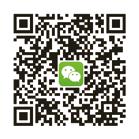

Hardware & Fastener Components no.58/2023 027








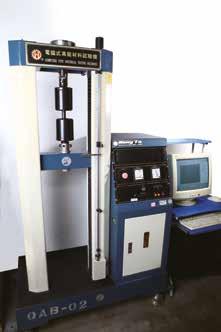
028 Hardware & Fastener Components no.58/2023
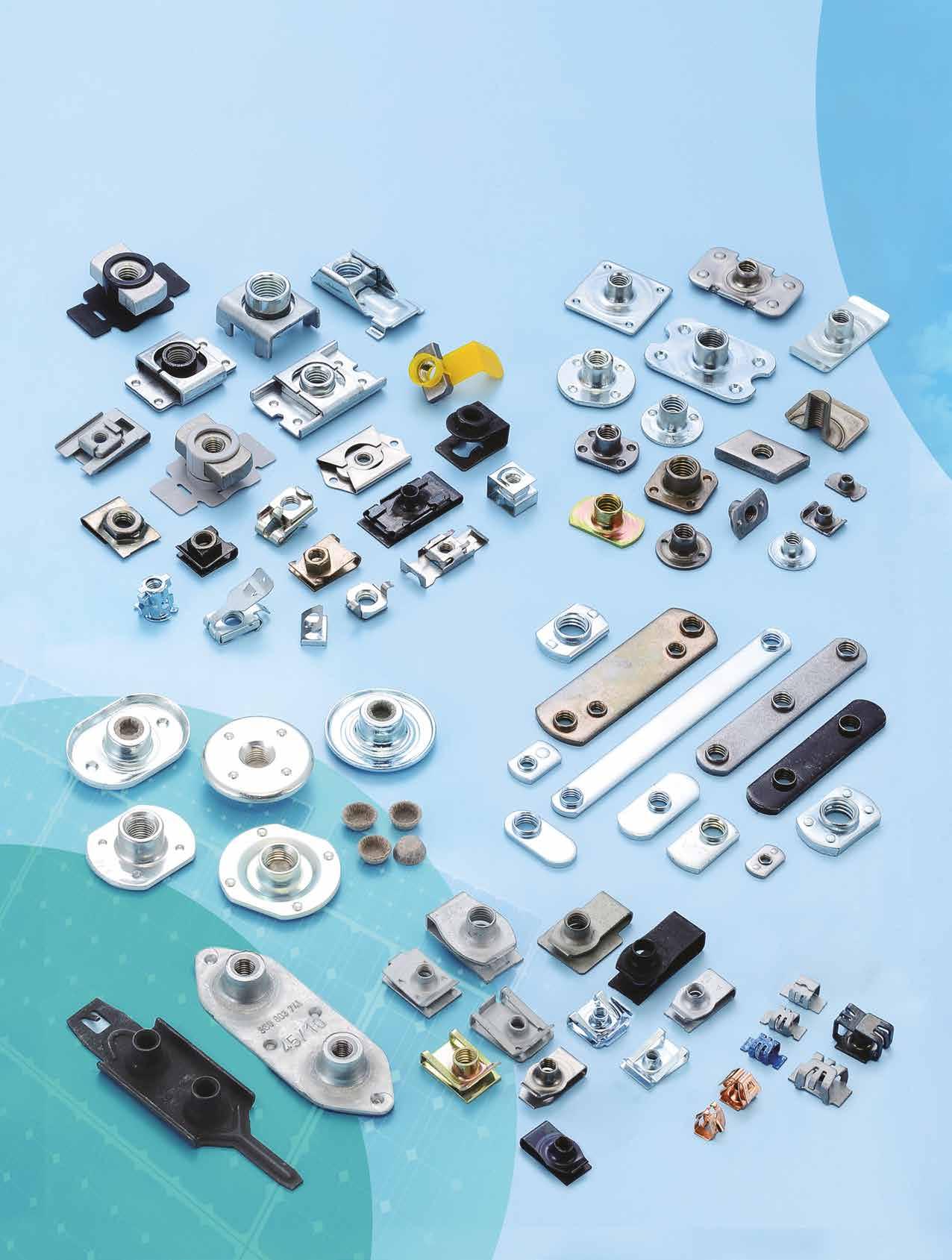


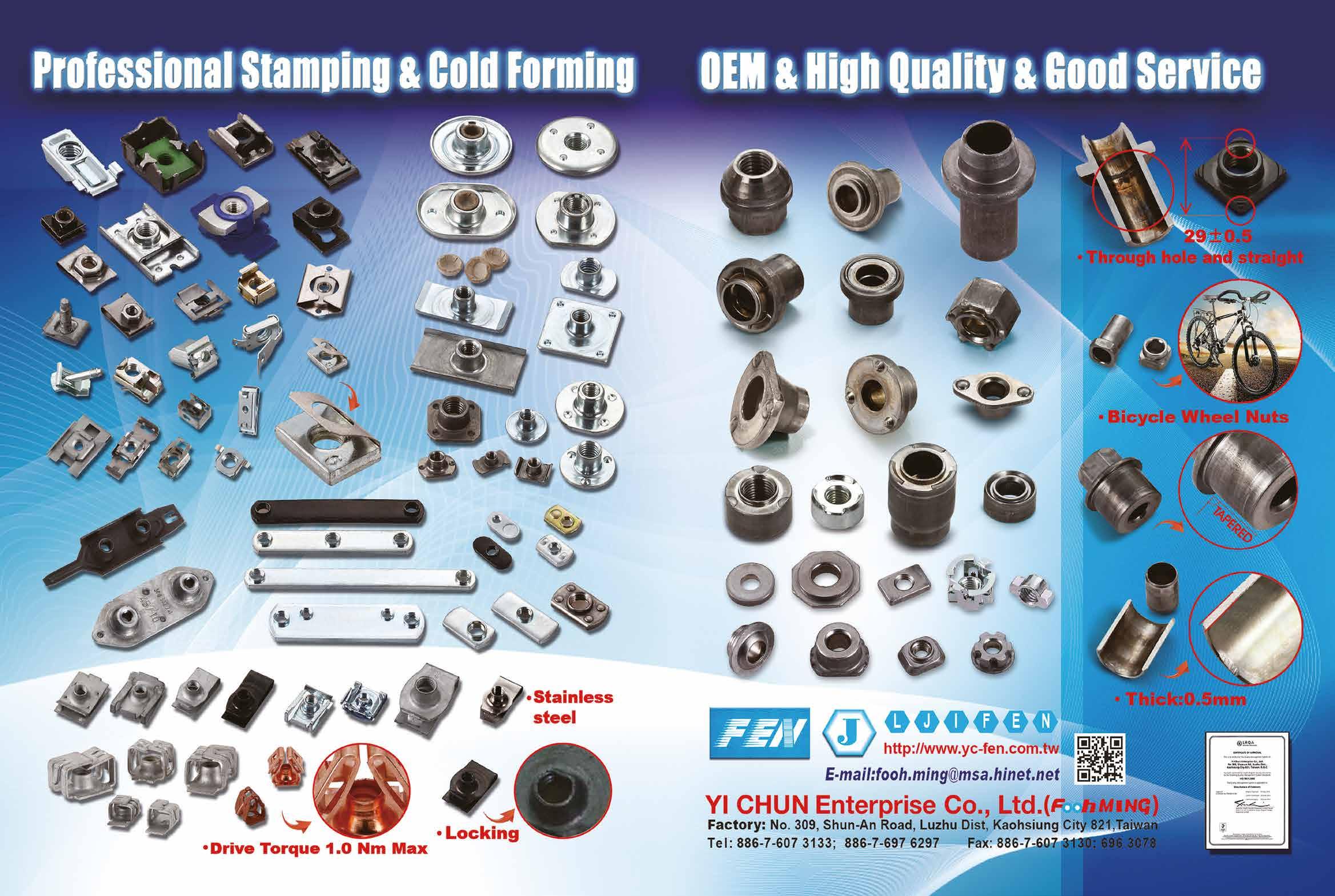


World News
compiled by Fastener World
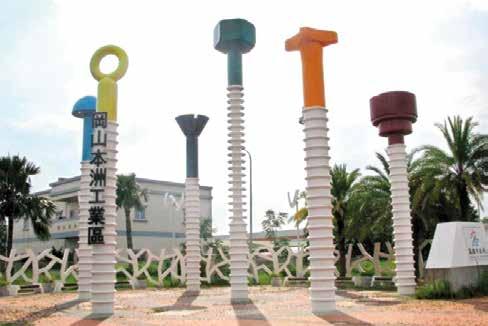
Association News
Fastener Training Institute Announces Würth Sponsorship

The Fastener Training Institute (FTI), has announced Würth Industry North America (WINA) continues as sustaining sponsor in 2023. This will mark the fifth year of partnership between the two organisations.
“Würth’s continued support is instrumental to our ability to offer frequent and robust educational opportunities which enhance knowledge, safety and reliability across the fastener industry,” said John Wachman, Managing Director for FTI. Thanks to Würth’s support, FTI will continue to offer an extensive menu of in-person fastener training classes taught by leading industry expert instructors.
“Our partnership demonstrates our ongoing commitment to the importance of quality fastener education. We are thrilled to move into our fifth year of partnering with the Fastener Training Institute and helping to support the education of seasoned and new professionals within the fastener industry,” said Tracy Lauder, Director of Marketing and Communications for Würth Industry North America.
Industry Development
Taiwan Fastener Companies Girding up Loins for Upcoming CBAM 歐盟碳關稅倒數 岡山「螺絲窟」 減碳備戰
The Carbon Border Adjustment Mechanism (CBAM) is expected to go on trial implementation this October. Taiwan fastener industry emits up to 750,000 tons of CO2e (carbon dioxide equivalent) a year, and it has to improve equipment and speed up on carbon inventory.
General manager of fastener manufacturer Chun Yu said carbon reduction is a huge work that the industry has to put focus
on. Each company’s products and processes are different, and the entire fastener industry processing chain is long, ranging from material source which is Taiwan CSC manufacturing steel billets, all the way down to a dozen processes such as pickling, annealing, heat treatment, electroplating, each causing carbon emissions. Therefore, the corresponding work on carbon inventory and carbon footprint requires professional assistance.
The director of Taiwan MIRDC (Metal Industries R&D Center) said that CBAM will soon be implemented on a trial basis and importers must report carbon emissions data, but currently there are no clearly specified specifications and form examples. One thing that is certain is that manufacturers should do carbon inventory and carbon footprint tracking as soon as possible.
MIRDC and private entities can help the industry on carbon inventory. The director pointed out that companies can do reports on their own, but if the supply chain requires reports to be verified by third-party labs, domestically it will have to be done by Taiwan Accreditation Foundation (TAF). Taiwan Ministry of Economic Affairs estimates that by the end of this year, there will be about 18 Taiwanese entities that can provide accreditation services. The director said that, in addition to reporting carbon emissions, importers will have to purchase CBAM certificates for products exported to Europe. Plus, Taiwan’s Climate Change Legislation is expected to charge carbon fees on those products. Taiwanese fastener companies hope for the government to make carbon fee regulations compatible with CBAM and provide a way to offset the fees to avoid being charged twice.
U.S. to Impose 200% Tariff on Russian Aluminum 美對俄鋁徵收200%關稅
Aluminum is often used in fuselage, bolts and window and door frames. In a thorough effort to combat Russian circumvention of sanctions, U.S. White House announced a 200% tariff on Russian aluminum and related aluminum products, which has
030 Hardware & Fastener Componentsno.58/2023
五金產業與協會新聞
美國扣件訓練協會宣布獲得伍爾特贊助
been effective since March 10. Russian aluminum accounts for about 1/10 of U.S. imports, and buyers range from the automotive to construction industries. The White House said it is planning to extend the sanctions to Russian metals and mining industries, but the move must be carefully planned to minimize the impact on the market.
Airbus Requests Aeronautical Certifications to Suppliers

of borders, as well as a gradual increase in aerospace customers’ demand. Its consolidated revenue reached NTD2.193 billion, a 53.76% increase compared to the same period last year, marking a three-year high and the third highest in its history, and close to the revenue level in 2018 before the pandemic. Profitability benefited from a higher utilization rate and the appreciation of the U.S. dollar, with gross profit margin of 23.33% last year, an increase of 11.68 percentage points; operating income was NTD127 million turning a loss into a profit, with operating profit margin of 5.78%; net profit after tax was NTD150 million.
Looking at this year, the company said that the demand for aerospace fasteners continues to be strong, with most orders visible for more than a year, and if market conditions do not change much, it is expected to maintain good growth in revenue and profitability this year, and the company will continue to increase production capacity in response to customer demand. In addition to aerospace fasteners, NAFCO has also been actively developing its automotive fastener business in recent years, and the parts and components designed in cooperation with Tier 1 car manufacturers are expected to gradually increase in volume and fuel revenue growth. The company recently announced its March 2023 revenue, which reached NTD263 million in a single month, an annual increase of 78.8%; the cumulative revenue for the first three months reached NTD 696 million, an annual increase of 64.02%.
Airbus is developing its local or regional materials platform for different strategic commodities, but suppliers will need to have the necessary certifications such as AS-9100. “Without those certifications it will be impossible to do business with an aeronautical company like Airbus. And it is very important to have suppliers mainly from Mexico, or from the United States and Canada,” said Carlos Rivera Villalba, the company’s Global Supply Chain Manager.
During the seminar “Be an Aerospace Supplier”, organized by Femia, at CETYS University, Mexicali campus, Rivera added that they are looking for aluminum suppliers in sheets, plates, rivets, nuts, screws and bolts, among others.
Airbus has a presence in Queretaro with a manufacturing plant and a training center in Mexico City and another in Merida. Today there are 150 Airbus aircraft in operation in the country and 200 in the order book and take up 60% of the Mexican market. “It was forecast to close 2022 with 354 aircraft for the different airlines in Mexico, which represents a 12% increase against 2021. The country is part of the top 20 markets,” he said.
Companies Development

Fastener Demand Drives
Q1 Revenue up 64%
Last year NAFCO benefitted from the easing of the pandemic and reopening

OFCO’s Fastener Business Sees Gradual Return of Demand 久陽螺絲本業逐步回溫

According to OFCO, a fastener manufacturer under Taiwan Steel Group, the demand for fasteners will begin to bounce up as customers gradually clear up their inventory. OFCO is also optimistic that the huge reconstruction demand after the Russian-Ukrainian war will trigger another wave of inventory replenishment. With the Group’s continuous integration, the fastener business outlook is promising.
OFCO’s revenue last year was NTD 4.817 billion, an annual increase of 28.1%; the net income after tax was NTD 284 million, an annual increase of 119%, and the EPS was NTD 3, a 10-year high. The revenue of the fastener business increased 87% year on year, and the gross margin came to 23.3%, an increase of 9.5%, boosting the operating profit to NTD 324 million, a YoY increase of nearly 7.6 times.
QST International and Boltun Raise Capital for Plant Expansion to Pursue Transformation 扣件大廠恒耀籌資擴廠 拚轉型
QST International and Boltun Corporation jointly commissioned 3 Taiwanese banks to co-sponsor a NT$12 billion worth ESG-linked syndicated loan project, which was completed on March 1, 2023. In the trend of environmental protection and energy saving, the companies have extended from conventional fasteners to new products combining light metal, engineering plastic and carbon fiber to meet the needs of vehicle manufactur-
031 Hardware & Fastener Components World News >> Hardware & Fastener Componentsno.58/2023
空巴要求對供應商進行航空認證
NAFCO’s
扣件需求強勁,豐達科第一季營收年增64%
Stronger
ers for lightweighting, automatic assembly, reduction of assembly process and energy saving and carbon reduction, and have continued to enhance the value of their products. Leveraging on their experience in EV fasteners and certification by international automakers, the companies are actively participating in customer-collaborative R&D and supplier orientation programs, gradually moving from OEM to ODM.
In view of their long-term development needs and to enhance global flexibility and competitiveness, the companies will set up an overseas production base in Vietnam, acquiring about 35 hectares of land in an industrial zone with an initial investment of US$100 million. Construction of the plant is expected to begin this year and production will begin in the first half of 2024.
Taiwanese Lamvien Winfull in Vietnam Provides High Quality Customized OEM Fasteners 越南台商Lamvien Winfull(林遠永福工業) 提供高品質的客製OEM扣件
Lamvien Winfull Co., Ltd., a Taiwanese manufacturer located in Vinh Phuc Province, Vietnam, serves an extensive list of clients including TOYOTA, Honda, YAMAHA, Kawasaki, Polaris, Vinfast, TOTO, Daikin, Ariston, Sumitomo, Pigaaio, … etc and related T1, T2 customers. It is an IATF16949 / ISO14001 / ISO50001 certified and authorized OEM manufacturer of various customized forging bolts, nuts, screws, pins and patching for worldwide major brands of the automotive, motorcycle, safety parts, heavy industry, home appliance, and electronic fields, and has been specialized in customized precision forging parts for nearly 60 years.


It provides one-stop and in-house manufacturing process including cold forging, threading, machining, heat treatment, de-phosphating, surface treatment, and dehydrogenation for worldwide leading customers. The capability to manufacture specialized fasteners effectively complements its value for achieving quality excellence. Obviously, its experience facilitates the abilities to fulfill more difficult orders, and clearly sets it apart from other fastener providers.
Suzhou Cheersson Sets up a New Branch in Shanghai 蘇州瑞瑪精密在上海設立分公司
Suzhou Cheersson Precision Metal Forming announced to set up a branch in Shanghai in order to meet its business development needs and further optimize its strategic deployment, making it more convenient to get closer to the market and the front
line of technology, and better collect industrial and technical intelligence.
The company’s name is Suzhou Cheersson Precision Metal Forming Co., Ltd. (Shanghai Branch). The scope of business includes: hardware products R&D; technical services, technology development, technology consultation, technical exchange, technology transfer, technology promotion; import & export of goods; sales of dies; sales of communication equipment; hardware products retailing; hardware products wholesaling; electronic components retailing; electronic components wholesaling; fasteners sales; mechanical parts and components sales; metal materials sales.

Zhejiang Mingtai Development Holding Plans to Trade on Shanghai Stock Exchange 浙江明泰控股擬在上交所上市

Zhejiang Mingtai intends to be listed on Shanghai Stock Exchange with a fund raising of RMB 920 million. The raised fund is intended to be used for the R&D and production of Ritai (Shanghai) Auto Standard Component, the annual production of 33,000 tons of new special high strength automotive fasteners, and the construction of the new material fastener R&D center for Ritai (Shanghai) Auto Standard Component.
The company focuses on the R&D, production and sales of fasteners, and has upgraded from supplying bicycle fasteners to motorcycle fasteners, and to automotive fasteners over the past 30 years. The products are mainly used in the automotive field, with high strength, high precision, corrosion-resistant and other high-end fasteners as the main products. The company provides customers with collaborative development, testing, after-sales service, etc.
BYD Japan Responds to the Use of Hexavalent Chromium
BYD uses a solvent containing hexavalent chromium to prevent rusting of bolts, nuts and other parts on its five electric buses, including the J6, a minibus sold in Japan. BYD Japan said it is working with BYD headquarters to investigate whether hexavalent chromium was used in the pure

032 Hardware & Fastener Components World News >> Hardware & Fastener Componentsno.58/2023
比亞迪日本法人回應使用六價鉻問題



Hardware & Fastener Components no.58/2023 033
electric passenger vehicles that went on sale in Japan at the end of January.
Hexavalent chromium is a chemical substance that is widely used in automotive parts for applications such as electroplating to prevent rusting of metal surfaces. It is considered to be highly toxic and harmful to humans. Although there is no domestic law prohibiting the use of chromium in automobiles, Japan Automobile Manufacturers Association has prohibited its use since 2008 as an industry-independent restriction. After the same year, hexavalent chromium is no longer used on new cars in general.
In order to provide greater safety and peace of mind for passengers, BYD Japan said the use of hexavalent chromium will be discontinued on the new models of J6 and K8 electric buses which will be launched by the end of 2023.
Packer Fastener Owner Named CEO
美國Packer Fastener公司人事異動
The Packer Fastener family of companies, including Green Bay-based Packer Fastener and Packer Freight and Chicago area-based Albolt Manufacturing, announced promotions of four key executives.

“Packer Fastener is well-known as having the biggest nuts in town, but our family of companies continues to grow beyond the nuts and bolts of industrial fasteners,” said CEO Terry Albrecht. “Today, we offer a comprehensive range of fasteners and industrial supplies through Packer Fastener, logistics and freight brokerage services through Packer Freight, and the production of customized fastener solutions through Albolt Manufacturing. By restructuring our leadership model and promoting talent from within, we’ve set the foundation for future growth and expansion.”
As part of these changes, Albrecht will continue in his role as principal owner and will now serve as the chief executive officer of the three sister companies. Albrecht was one of the original founding partners of Packer Fastener in 1998. He went on to found Packer Freight in 2019, and Albolt Manufacturing in 2022. His family of companies now employs 155 individuals in 11 different cities throughout the Midwest.
LISI Appoints New Chairman LISI集團任命新主席

Following LISI’s Annual General Meeting of Shareholders, the Board of Directors met today to acknowledge the non-renewal of Mr. Gilles Kohler’s mandate as Chairman due to the age limit set by the company’s bylaws, and to appoint his new Chairman. After 38 years as a member of the Board of Directors and 24 years as Chairman of the Board, the latter thanked Mr. Gilles Kohler for the immense task accomplished during all these years and expressed his gratitude to him. To succeed Mr. Gilles Kohler, the Board of Directors has appointed Mr. Jean-Philippe Kohler as Chairman for the duration of his 4-year term of office. His appointment is effective as of today.
Mr. Jean-Philippe Kohler joined LISI Group in 1991 and since 2016 has been the Deputy Chief Executive Officer of LISI Group in charge of Risk Management, Human Resources and Internal Audit.

In addition, the Board of Directors confirmed the renewal of Mr. Emmanuel Viellard’s mandate as Chief Executive Officer for a period of 4 years. In order to carry out his mission, Mr. Emmanuel Viellard relies on the LISI Group Executive Committee, which he chairs and is composed of:
• Mrs Anne-Delphine Beaulieu, Chief Sustainability Officer & Digital Transformation of LISI Group
• Mrs Cécile Le Corre, General Counsel of LISI Group
• Mr. Christophe Lesniak, Senior VP Industrial & Purchasing manager of LISI Group
• Mr. François Liotard, Chief Executive Officer of LISI AUTOMOTIVE
• Mr. Emmanuel Neildez, Chief Executive Officer of LISI AEROSPACE
• Mr. Alexis Polin, Chief HR Officer of LISI Group
• Mr. Lionel Rivet, Chief Executive Officer of LISI MEDICAL
• Mr. Raphaël Vivet, Chief Financial Officer of LISI Group
This new governance will continue the deployment of the LISI Group’s long-term strategy, which remains focused on innovation and operational excellence.
Acquisitions
Generational Equity
Advises Fasteners, Inc. in its Sale to Monroe Engineering
Generational Equity為Fasteners, Inc.出售給Monroe Engineering提供諮詢
Generational Equity, a leading mergers and acquisitions advisor for privately held businesses, is pleased to announce the sale of its client, Fasteners, Inc. to Monroe Engineering. The acquisition closed January 31, 2023.
Fasteners, Inc., located in Colorado, and founded in 1965, is a wholesale fastener distribution company. The Company’s extensive inventory is available for prompt, accurate delivery or shipment in materials ranging from aluminum to stainless to heat-treated steel.
Headquartered in Michigan Monroe Engineering (Monroe) is an ISO 9001:2015 & AS9100D certified global industrial manufacturing company offering a broad product line and has a diverse customer base of manufacturers and distributors across several vertical markets including aerospace/defense, automotive, medical, transportation and many more.

034 Hardware & Fastener Components World News >> Hardware & Fastener Componentsno.58/2023



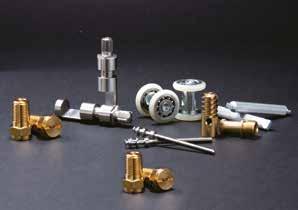



Hardware & Fastener Components no.58/2023 035
Good Design Award Winners of 2022 2022
Good Design 設計獎得主
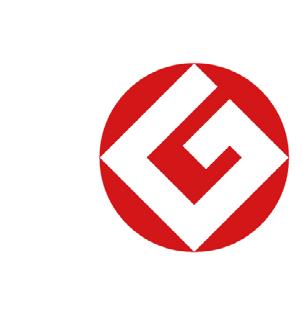
Screwdriver Bit [Slender and Hard Bit]

This product is an ultra-thin shaft driver bit. For example, it is easy to use in “narrow and obstaclesfilled” work places such as around sashes at construction sites, installing handrails, and installing outlet boxes for electrical work, and contributes to improved workability.
Manufacturer: Kaneko Mfg. Co., Ltd.
Standard Ratchet [nepros 3/8”sq. Ratchet Handle NBR390A]
This product is intended for use in automobile maintenance and machine maintenance. Recently, in the workplace where obstacles are increasing due to auxiliary equipment, products with compact and lightweight heads are required. It is necessary to develop a ratchet handle that will satisfy professional mechanics who do not choose working conditions such as tight spaces and heavy loads.
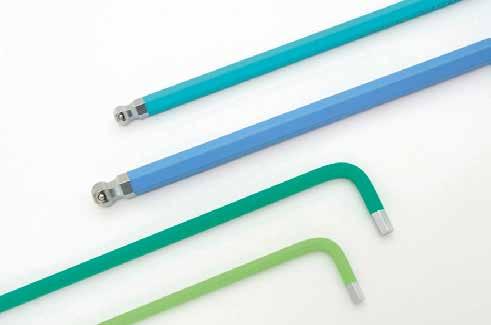
Manufacturer: Kyoto Tool Co., Ltd.
Hexagon Key Wrench With Retaining Ball Type

A colored hexagon key wrench that can hold hexagon socket head bolts. The bolt is held by the action of the spring and the steel ball embedded in the tip. Since it is not necessary to hold the bolt by hand, it contributes to the improvement of work efficiency when the bolt is brought into the screw hole in a deep place or when it is loosened and removed.
Manufacturer: Asahi Metal Industry Co., Ltd.
Compiled by Fastener World
036 Special Feature >> Hardware & Fastener Componentsno.58/2023
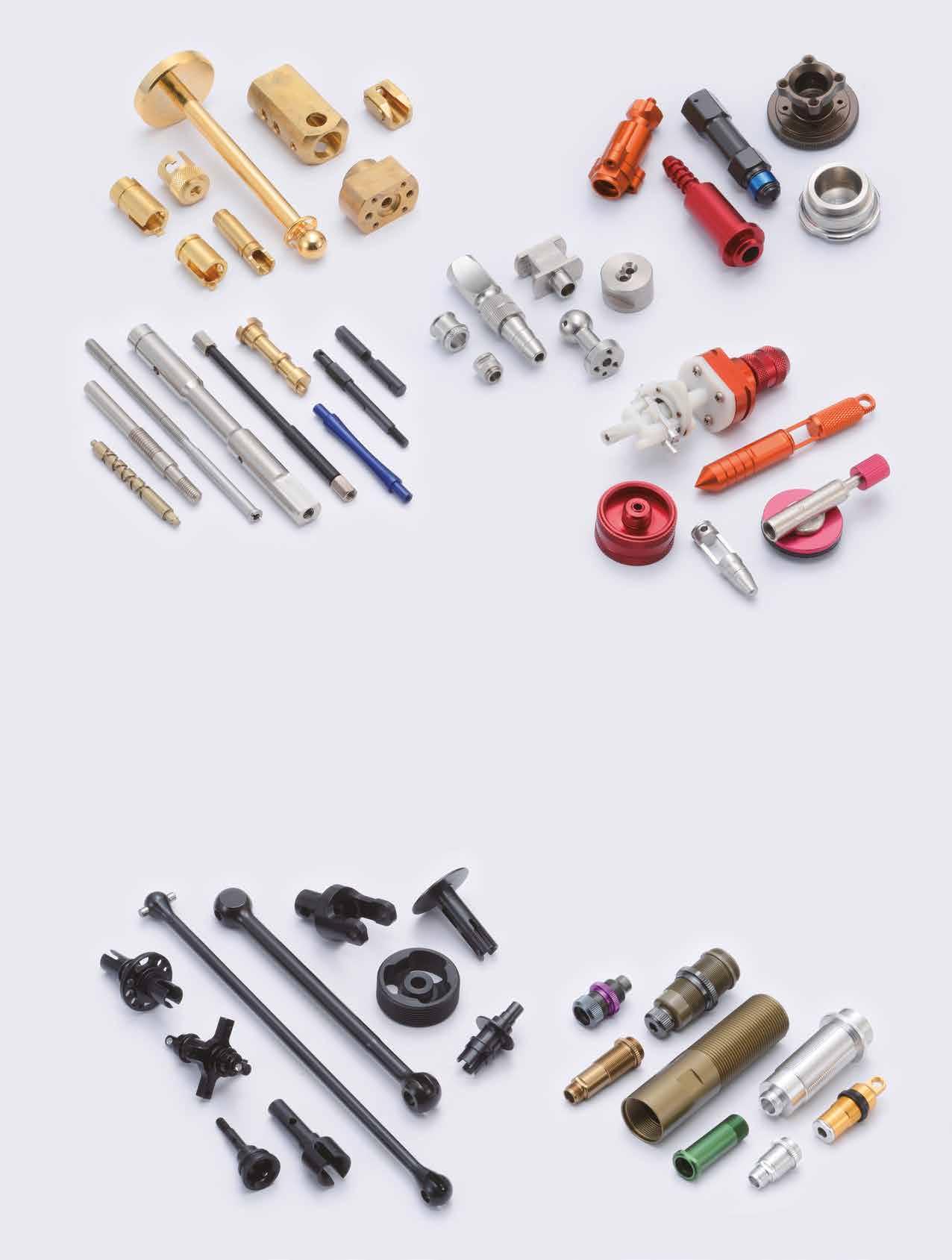




Hardware & Fastener Components no.58/2023 037
Round Swivel Head Ratchet [3/8”sq. Round Swivel Head Ratchet]
This product is intended for use in automobile maintenance and machine maintenance. Featuring a compact head that rotates freely in the workplace where obstacles are increasing with modern auxiliary equipment, the small head can be used for work in tight spaces or for quick rotation like a screwdriver. A utility hand tool that can be used for loading and fast-forwarding tasks.
Manufacturer: Kyoto Tool Co., Ltd.

Dust Collection Circular Saw

This electric power tool is mainly for cutting wood and metal materials. Even as a stand-alone product it keeps the work environment clean with extremely high-efficiency dust collection, and its mode to suppress cutting noise is considerate to others nearby. Thorough safety features prevent job-related accidents such as from kickback. The product lets workers safely focus on high-quality results.
Manufacturer: Koki Holdings Co., Ltd.
Pipe Hangers [RAKU-TSURI X]
Raku-Tsuri X achieves manpower and installation time reduction. Comparing with traditional pipe hangers, RakuTsuri X saves about 70% installation man-hours with electrical tools. In Japan construction workers decreased 30% in the last 20 years, and as the aging population progresses, its age composition of over 55 is 34%. Raku-Tsuri X contributes significantly to building equipment business.
Manufacturer: Nichiei Intec Co., Ltd.
Pipe Fitting [TL joint]
(1) A zigzag-design nut has been adopted with the aim of reducing the weight of the material and the rigidity that can withstand wrenching during piping construction work. (2) For high temperature piping, the end face of the nut is designed in red so that it can be identified as heat resistant. (3) The washer, which is the loosening prevention mechanism of the main body, is designed in blue.

Manufacturer: CK Metals Co., Ltd.

038 Special Feature >> Hardware & Fastener Componentsno.58/2023


Hardware & Fastener Components no.58/2023 039
Taiwan Fastening Tools Industry’s 2022 Review and Future Prospects

Foreword
2022年台灣扣件緊固工具產業回顧與未來展望
2022 will be a year of tremendous changes in the global political and economic situation. The major economies around the world have adopted loose monetary policies since 2020, and the low interest rate environment has stimulated the growth of the real estate and durable property markets. In 2021, the global supply chain was tight due to the impact of the epidemic, and China took measures to protect the supply and stabilize the price of coal due to the power shortage crisis, which affected the demand and prices of metal materials. The global economy was expected to continue to recover in 2022, but the military conflict between Russia and Ukraine broke out at the beginning of the year, which led to a sharp rise in global energy and raw material prices, and China took strict control measures due to the epidemic, causing the global supply chain to suffer another blow. Demand from the U.S., Europe and China has declined significantly, and Taiwan’s export growth has slowed, resulting in conservative investment by manufacturers. In the second half of 2022, as the pandemic slowed down, domestic demand and related industries’ export performance improved and shifted from export to domestic demand, maintaining the economic performance for the whole year.

The EU’s proposed Carbon Border Adjustment Mechanism (CBAM) in 2021 reached a provisional agreement in December 2022, which expanded the scope of regulated products from steel, cement, aluminum, fertilizer and electricity, as proposed by the EU Executive Committee, to include hydrogen, some indirect emissions and downstream products (including fasteners). Although fastening tools have not yet been directly included in the list, the relevant industries in Taiwan still need to pay attention to the subsequent development. This article will review the development trend of the fastening tools industry in and outside of Taiwan in 2022 and present the industry development outlook for 2023 as a reference for Taiwan’s fastening toolsrelated industries to respond to the global political and economic changes in the future.
Review and Analysis of Economic and Trade Development Trends of the Global Fastening Tools Industry Import Analysis:
Table 1 shows the main importing countries and import trends of global fastening tools from 2018 to 2021. The import value of global fastening tools products in 2021 was about USD 8.496 billion (about NTD 253.011 billion), and the import value of the top 20 importing countries was USD 6.141 billion, accounting for 72.3% of the global import value. The top five importing countries in order of import value and share were: the U.S. (US$1.433 billion/16.9%), Germany (US$767 million/9.0%), China (US$335 million/3.9%), France (US$332 million/3.9%), and U.K. (US$319
040 Industry Focus >> Hardware & Fastener Componentsno.58/2023
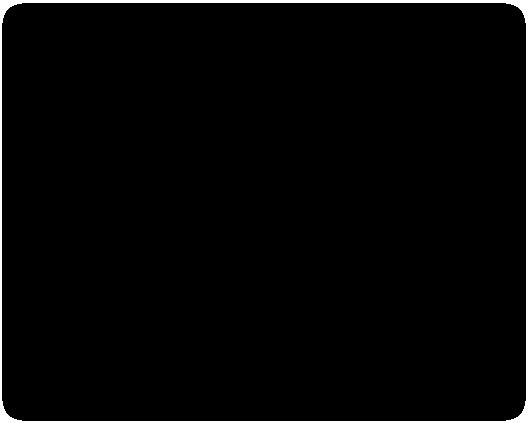


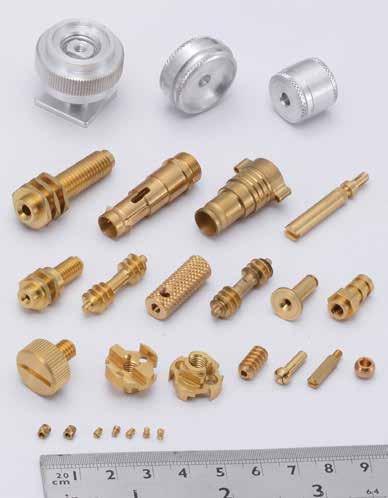


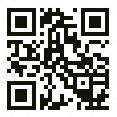






million/3.8%). Although imports are not equal to demand, and the country’s own production must still be considered, the ups and downs of imports also reflect the trend of certain countries’ demand for products, the top 20 importers’ import compound growth rate in the past five years averaged 4.1%, slightly higher than the global CAGR of 3.7%. The U.S. remains the world’s leading fastening tool importer, with the highest import value (US$1.433 billion) and stable compound growth rate (5.6%), playing the role of driving the global fastening tool demand market.
Table 1. Major Fastening Tools Importing Countries and Trends in 2018-2021
Note: The base exchange rate of USD to NTD in 2022 is 29.78
Export Analysis:
Table 2 shows the major exporting countries and export trend of global fastening tools from 2018 to 2021. The export value of global fastening tools in 2021 was about USD 8.016 billion (TWD 238.716 billion), the export value of top 20 exporting countries was USD 7.268 billion, which accounted for 90.7% of the global total export value, and was a highly concentrated export market structure. The top five exporting countries in order of export value and share were: China (US$2.269 billion/28.3%), Germany (US$1.135 billion/14.2%), Taiwan (US$1.033 billion/12.9%), the United States (US$492 million/6.1%), Italy (US$274 million/3.4%). Taiwan is the third largest fastening tool exporter in the world, with a compound growth rate of 9.1% in the past four years, a remarkable performance.
The compound growth rate of the top 20 exporters in the world in the past five years was 5.2% on average, slightly higher than the global compound growth rate of 4.6%. China is still the world's leading fastening tool exporter, and even under the multiple impacts of the U.S.-China trade war, the Russia-Ukraine war and the epidemic, it still ranks first with the highest export value (US$2.269 billion) and a stable compound growth rate (11.1%). It is difficult to shake the fastening tool industry in China under the production advantage of economy of scale and various global variables, while German tools, known for their craftsmanship and quality, are in second place. It is worth mentioning that in recent years, Vietnam's fastening tool exports have grown significantly, although the export amount is not high, the compound growth rate reached 49.6% in the past four years, which is presumed to be related to China's relevant manufacturers in response to the impact of the U.S.-China trade war and the transfer of production bases to Vietnam by the relevant manufacturers in China, therefore, the subsequent development of the Vietnamese market deserves the continuous attention of Taiwanese manufacturers.
Unit: 0.1 bn USD;% Ranking Country 2018 2019 2020 2021 % in 2021 CAGR 1 USA 12.16 12.30 11.01 14.33 16.9% 5.6% 2 Germany 6.57 6.34 5.99 7.67 9.0% 5.3% 3 China 2.70 2.57 2.50 3.35 3.9% 7.5% 4 France 3.63 3.25 2.59 3.32 3.9% -2.9% 5 UK 2.95 2.69 2.47 3.19 3.8% 2.6% 6 Canada 2.52 2.73 2.53 2.90 3.4% 4.8% 7 Netherlands 2.05 2.12 2.14 2.66 3.1% 9.1% 8 Thailand 2.59 2.53 2.10 2.57 3.0% -0.2% 9 Poland 1.96 1.76 1.70 2.35 2.8% 6.1% 10 Russia 1.88 1.98 1.83 2.32 2.7% 7.2% 11 Italy 1.99 1.98 1.88 2.26 2.7% 4.4% 12 Mexico 2.22 2.18 1.72 2.26 2.7% 0.5% 13 Japan 1.72 1.73 1.52 1.79 2.1% 1.2% 14 Spain 1.62 1.41 1.30 1.75 2.1% 2.6% 15 Belgium 1.52 1.49 1.38 1.75 2.1% 4.7% 16 Australia 1.35 1.26 1.28 1.67 2.0% 7.2% 17 India 1.83 1.72 1.26 1.55 1.8% -5.3% 18 Austria 1.54 1.31 1.09 1.49 1.8% -1.1% 19 Luxembourg 0.56 0.38 0.45 1.14 1.3% 26.6% 20 Switzerland 1.01 1.03 0.91 1.10 1.3% 2.9% Subtotal of top 20 54.38 52.77 47.65 61.41 72.3% 4.1% Subtotal of other importing countries 21.86 20.95 19.25 23.56 27.7% 2.5% Total 76.23 73.72 66.90 84.96 100.0% 3.7%
Source: ITC/Compiled by MIRDC
042 Industry Focus >> Hardware & Fastener Componentsno.58/2023




Hardware & Fastener Components no.58/2023 043
Table 2. Major Fastening Tools Exporters and Trends in 2018-2021
Review and Analysis of Economic and Trade Development Trends of Taiwan Fastening Tools Industry
Import & Export Analysis
Table 3 shows the global import & export trend of fastening tools of Taiwan in 2017-2022. In 2022, the fastening tools imported from the world was US$72 million (about NT$2.156 billion), representing a compound import growth rate of 6.4% over the six years, and the fastening tools exported to the world was US$1.070 billion (about NT$31.865 billion). The export compound growth rate was 7.4%, and the surplus amounted to US$998 million, making it an important export product for China to generate foreign exchange.
Table 3. Development Trend of Taiwan Fastening Tools Import and Export from 2017 to 2022
Taiwan's Top 20 Fastening Tools Export Destinations
Table 4 is an analysis of the top 20 export destinations of fastening tools from Taiwan in 2022; the export amounts and shares of the top 5 export destinations of fastening tools from Taiwan were: the United States (NT$14.299 billion/44.9%), China (NT$2.364 billion/7.4%), Germany (NT$1.782 billion/5.6%), Australia (NT$1.195 billion/3.7%), and the Netherlands (NT$1.186 billion/3.7%). The main export desitination was the United States, accounting for almost half of the export market, and the compound growth rate of exports to the United States reached 13.8% in the past four years. In addition to the U.S., the top 20 export destinations with a
Unit: 10,000 USD;% Ranking Country 2018 2019 2020 2021 % in 2021 CAGR 1 China 16.54 16.65 17.08 22.69 28.3% 11.1% 2 Germany 10.37 9.77 9.31 11.35 14.2% 3.1% 3 Taiwan 7.96 8.31 8.04 10.33 12.9% 9.1% 4 USA 5.29 5.22 4.16 4.92 6.1% -2.4% 5 Italy 2.50 2.41 2.05 2.74 3.4% 3.2% 6 India 1.87 1.71 1.52 2.25 2.8% 6.2% 7 France 2.22 2.44 1.74 1.99 2.5% -3.5% 8 Netherlands 1.79 1.82 1.64 1.92 2.4% 2.3% 9 Switzerlands 1.72 1.61 1.41 1.78 2.2% 1.1% 10 Japan 1.42 1.30 1.19 1.44 1.8% 0.7% 11 Belgium 1.19 1.19 1.17 1.43 1.8% 6.1% 12 UK 1.57 1.48 1.25 1.42 1.8% -3.2% 13 Singapore 1.89 1.56 1.52 1.42 1.8% -9.2% 14 Poland 0.95 0.85 1.01 1.37 1.7% 13.0% 15 Czech Rep. 1.12 1.04 1.05 1.33 1.7% 6.1% 16 Spain 1.32 1.24 1.00 1.24 1.6% -2.0% 17 Austria 0.68 0.64 0.53 0.84 1.0% 7.0% 18 Vietnam 0.23 0.36 0.60 0.79 1.0% 49.6% 19 S. Korea 1.15 0.93 0.65 0.73 0.9% -13.9% 20 Thailand 0.72 0.75 0.59 0.70 0.9% -1.0% Subtotal of top 20 62.50 61.30 57.48 72.68 90.7% 5.2% Subtotal of other exporting countries 7.52 6.84 6.40 7.48 9.3% -0.2% Total 70.02 68.14 63.88 80.16 100.0% 4.6%
Note: The base exchange rate of USD to NTD in 2022 is 29.78
Source: ITC/Compiled by MIRDC
Unit: 0.1 bn USD;% Year 2017 2018 2019 2020 2021 2022 CAGR Import 0.53 0.53 0.61 0.70 0.86 0.72 6.4% Export 7.48 7.96 8.31 8.04 10.33 10.70 7.4% Surplus 6.95 7.43 7.70 7.34 9.47 9.98 7.5%
Source: ITC/Taiwan Customs/Compiled by MIRDC
044 Industry Focus >> Hardware & Fastener Componentsno.58/2023
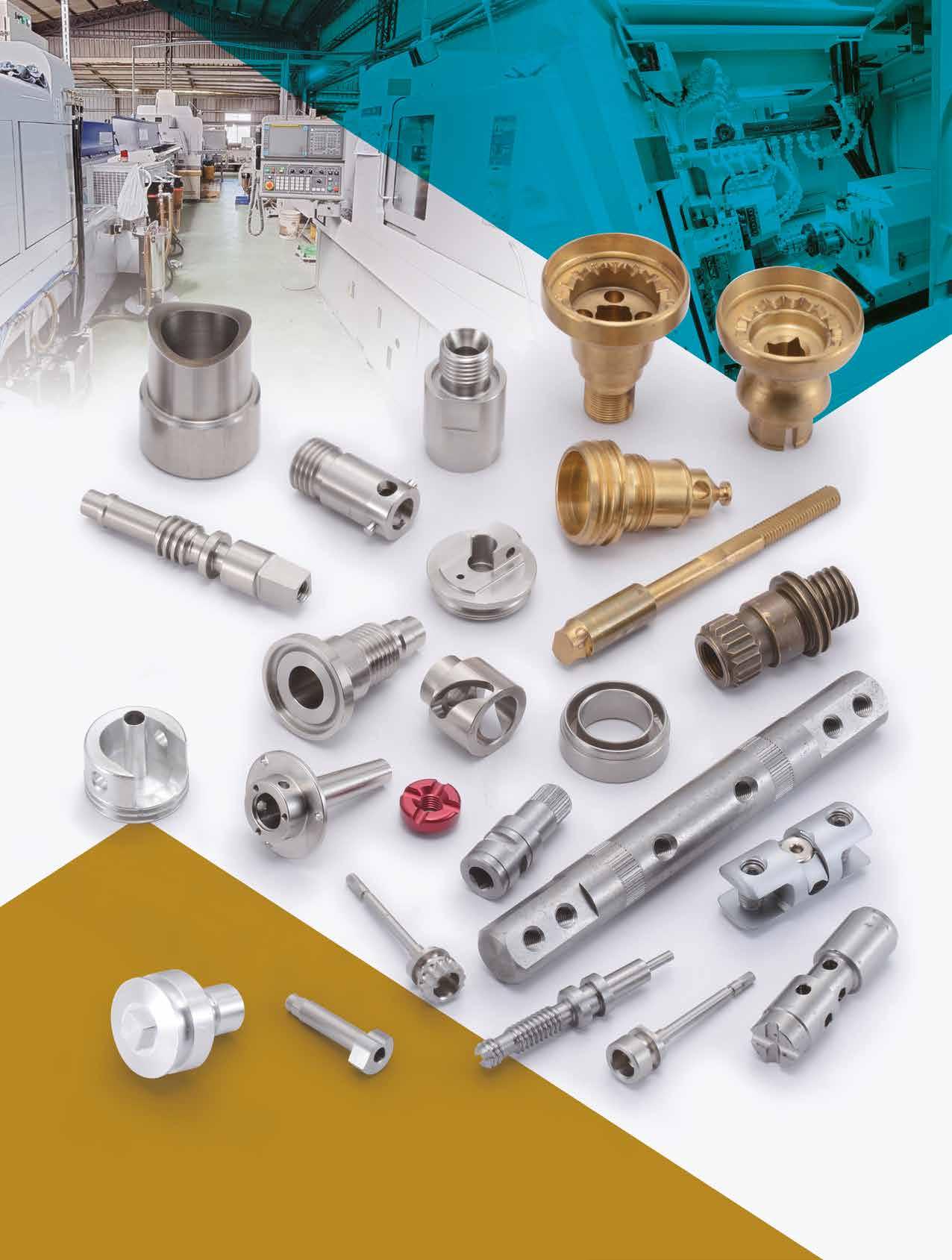

Hardware & Fastener Components no.58/2023 045
compound growth rate of over 10% in the past four years included Australia (19.7%), Russia (16.4%), and Belgium (12.6%), all of which are potential countries for sustainable market expansion.
Table 4. Taiwan's Top 20 Fastening Tools Export Destinations by 2022
Structure Analysis of Various Fastening Tools Export from Taiwan in Recent Years
Table 5 is a structural analysis of Taiwan's exports of various types of fastening tools from 2018 to 2022; the export value and share of Taiwan's fastening tools were: interchangeable socket wrenches (NT$13.838 billion/43.4%), non-adjustable hand operated wrenches (NT$7.363 billion/23.1%), adjustable hand-operated wrenches (NT$3.969 billion/12.5%), other interchangeable tools (NT$3.380 billion/10.6%), screwdrivers (NT$3.323 billion/10.4%), and screwdrivers (NT$2.5 billion/10.4%). The highest export value and share of interchangeable socket wrenches have a stable position in the global export market and are the main fastening tools exported by Taiwan. In the past five years, the compound growth rate of Taiwan's exports of various types of fastening tools was 7.4%, showing a stable growth trend.
Table 5. Structure Analysis of Various Types of Fastening Tools Export in Taiwan in 2018-2022
Unit: 0.1 bn NTD;% Ranking by Year 2022 Country 2019 2020 2021 2022 Share in 2022 CAGR 1 USA 96.91 99.51 123.46 142.99 44.9% 13.8% 2 China 20.75 22.42 27.04 23.64 7.4% 4.4% 3 Germany 16.47 15.20 17.07 17.82 5.6% 2.6% 4 Australia 6.97 6.67 9.24 11.95 3.7% 19.7% 5 Netherlands 10.17 9.14 11.82 11.86 3.7% 5.2% 6 Russia 6.88 5.40 8.63 10.85 3.4% 16.4% 7 Japan 9.61 8.48 9.20 10.31 3.2% 2.4% 8 France 10.48 6.51 9.98 10.06 3.2% -1.4% 9 UK 6.49 5.04 6.05 6.57 2.1% 0.4% 10 Italy 4.78 3.41 5.07 5.68 1.8% 5.9% 11 Sweden 6.42 4.30 4.94 5.27 1.7% -6.3% 12 Canada 4.64 4.27 4.01 5.07 1.6% 3.0% 13 Belgium 2.79 3.07 3.27 3.99 1.3% 12.6% 14 Poland 3.13 2.54 3.15 3.68 1.2% 5.6% 15 Indonesia 2.90 1.61 2.13 2.73 0.9% -2.0% 16 Brazil 2.37 2.09 1.91 2.66 0.8% 3.9% 17 S. Korea 2.34 2.27 2.56 2.61 0.8% 3.7% 18 Vietnam 2.68 3.84 3.62 2.43 0.8% -3.2% 19 Spain 3.04 2.04 1.73 2.40 0.8% -7.6% 20 India 1.94 1.23 1.53 2.05 0.6% 1.8% Subtotal of top 20 221.78 209.06 256.42 284.61 89.3% 8.7% Subtotal of other countries 34.54 27.17 31.66 34.12 10.7% -0.4% Total 256.31 236.23 288.08 318.73 100.0% 7.5%
Source: Taiwan Customs/Compiled by MIRDC
Unit: 0.1 bn NTD;% Product HS Code 2018 2019 2020 2021 2022 % of Export CAGR Non-adjustable Hand Operated Wrenches (Pliers) 820411 54.08 57.56 51.10 61.22 73.63 23.1% 8.0% Adjustable Hand Operated Wrenches (Pliers) 820412 28.23 30.91 29.95 35.05 39.69 12.5% 8.9% Interchangeable Socket Wrenches 820420 107.79 112.74 101.31 129.52 138.38 43.4% 6.4% Screwdrivers 820540 21.97 23.54 23.13 28.45 33.23 10.4% 10.9% Other Interchangeable Tools 820790 27.16 31.56 30.74 33.83 33.80 10.6% 5.6% Total Export Value (0.1 bn NTD) 239.22 256.31 236.23 288.08 318.73 100.0% 7.4%
046
Hardware & Fastener Componentsno.58/2023
Source: Taiwan Customs/Compiled by MIRDC
Industry Focus >>


Hardware & Fastener Components no.58/2023 047
Review of Fastening Tool Issues in China and Measures to Address Them

In 2022, the pandemic stimulus program of 2021 and the transfer effect of the U.S.-China trade war on Taiwan drove the export value of fastening tools in Taiwan to grow significantly by 10.6%, which, of course, covers the factors of inflation and rising raw materials. Overall, it is clear that the U.S. and China are the world’s leading importer and exporter of hand tools, respectively. The U.S. government has provided various incentives to encourage U.S. businesses to return to the U.S. in order to revitalize the local economy and employment. For example, the U.S. government passed the US$1.2 trillion Infrastructure Act in 2021 to strengthen and rebuild the U.S. rail, highway, air, maritime, power and broadband networks, which are important growth drivers for Taiwan, a major exporter to the U.S. The following is a review of the key issues for Taiwan in 2022 and proposes measures to address them:
Geopolitical Impact - Impact of Russia-Ukraine War
The main raw material for the production of fastening tools in Taiwan is steel, mostly sourced domestically, and the main suppliers include Taiwan CSC, Feng Hsin Steel, Yusco, etc. In 2021, Taiwan’s upstream steel industry imported 17.6% and 0.004% of the total steel products (including steel billets and steel materials) from Russia and Ukraine respectively, and the steel billets are 85% self-produced, with Brazil, Vietnam, and Japan as alternative sources. Therefore, there is a low chance of shortage of domestic steel supply due to the conflict between Russia and Ukraine. In addition, Taiwan CSC gives priority
to domestic steel demand in response to market variables, so the supply of steel raw materials required by the fastening tool industry is not yet in shortage, but the industry can continue to introduce new technologies to improve material utilization rates and other technologies to reduce costs and respond to the variables in the global raw material market.
The Impact of Low Carbon Transformation Issues on the Fastening Tool Industry



At present, there is a global consensus of net zero emissions by 2050. In addition to the aforementioned CBAM, carbon control regulations continue to be introduced in various countries, such as the U.S. and Japanese carbon tariff system, etc. Although Taiwan’s fastening tools are mainly exported to the U.S. market and tool products have not yet been included in the list of controls, fastening tool manufacturers are mostly traditional industries, they cannot be ruled out as the U.S. will still fight with the EU for the right to speak about global carbon emission

048 Industry Focus >> Hardware & Fastener Componentsno.58/2023
standards, and Stanley Black & Decker, a major hand tool manufacturer, will achieve the goal of no carbon emission by 2030, and will directly include carbon in the evaluation index of suppliers in the future. It is recommended that the domestic industry respond by carrying out carbon inventory ASAP, expanding the utilization rate of green energy & materials, setting up energy-saving equipment and waste heat and water recycling, and strengthening forging precision to reduce waste.
Trends in the Flexible Industry Supply Chain
In recent years, the U.S.-China trade war and the impact of the epidemic have accelerated the restructuring of the global supply chain, with suppliers reconfiguring their sources of raw material procurement and the layout of their production bases. For instance, Stanley Black & Decker in the U.S. has invested some of its companies in China to set up new factories in Mexico, and U.S. Techtronics Industries has shifted its original focus in China to the U.S, Mexico, Vietnam, etc. Although the fastening tool industry is highly localized in manufacturing and raw material sources, the risk of material breakage is low, especially Taiwan has advantages in technology and quality, which is one of the options for foreign manufacturers to disperse manufacturing risks, strengthen the existing industrial advantages, expand the fastening tool industry chain to resist, withstand and recover from various variables.
China’s Fastening Tools Industry Outlook for 2023

Looking ahead to 2023, in addition to the continuation of the weakness of the global economy in the 2nd half of 2022, the U.S. continues to raise interest rates and drive other countries to follow suit, making economic fluctuations continue and expanding to more countries, also affecting the economic trends of various countries; in addition, it will continue to face global geopolitics, trade conflicts, financial fluctuations (inflation and interest rate increases), climate anomalies, green economy, emerging technologies and other intertwined variables, also making the timing of economic recovery more difficult. In addition, the war between Russia and Ukraine has not yet stopped. Whether the secondary impact on the global supply and demand of raw materials will also affect Taiwan’s economic and trade performance, which is worthy of prior study and attention. Observing the trend of industrial ups and downs in the past 10 years, Taiwan fastening tool industry has been able to overcome several global political and economic variables and impacts smoothly because of its excellent and stable strong industrial structure. Looking ahead to 2023, Taiwan fastening tool industry should be able to steadily face global political and economic variables and show stable and optimistic results.
Article by: Dr. Arthur Hsu
Copyright owned by Fastener World

049 Industry Focus >> Hardware & Fastener Componentsno.58/2023










Hardware & Fastener Components no.58/2023 051
















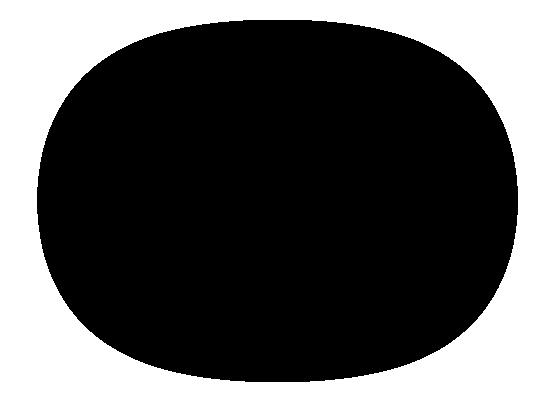










Hardware & Fastener Components no.58/2023 057








058 Hardware & Fastener Components no.58/2023
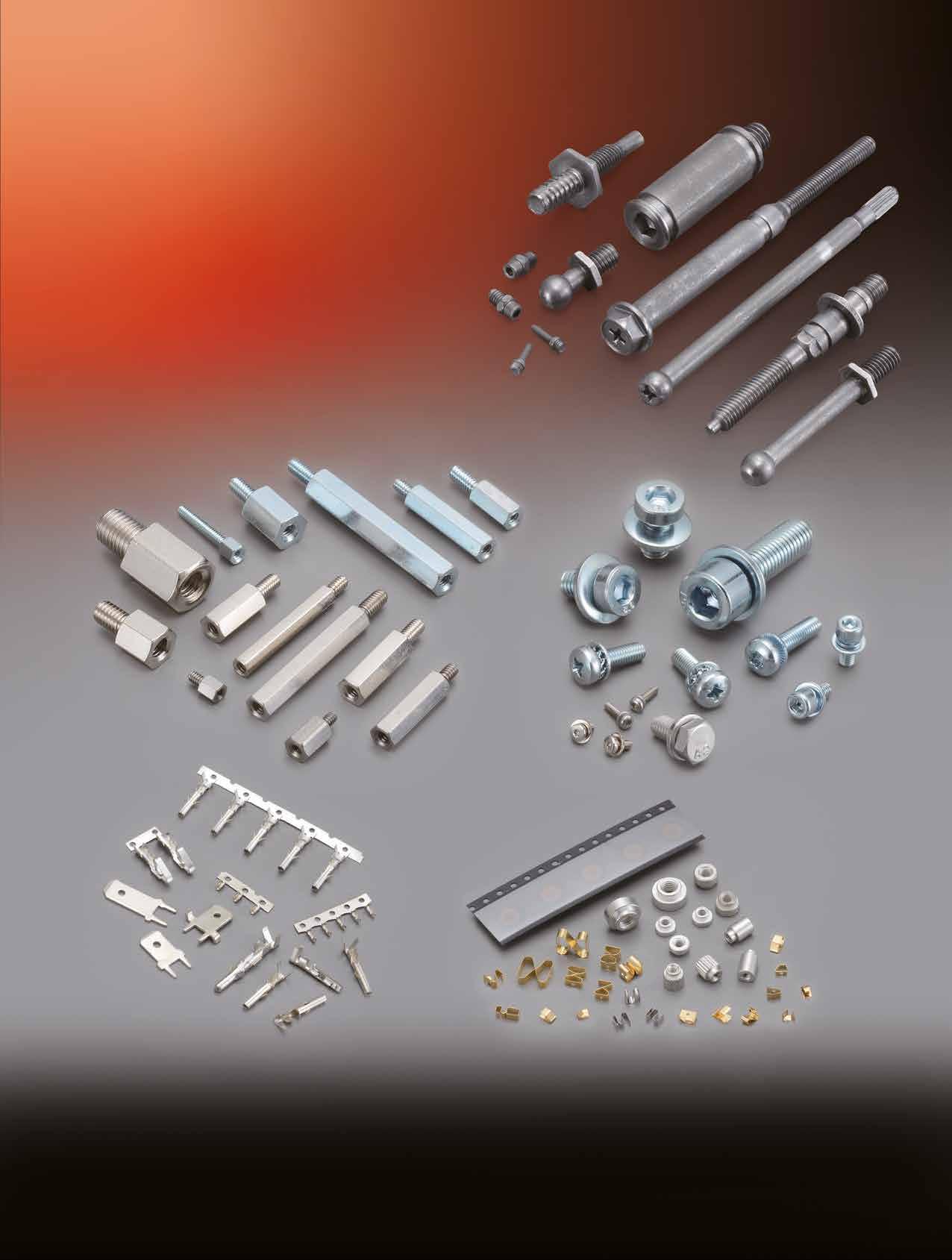



Hardware & Fastener Components no.58/2023 059





060 Hardware & Fastener Components no.58/2023

Hardware & Fastener Components no.58/2023 061
2022 Global Automobile Production and Model Comparison

Automobile production is one of the reference indicators for evaluating market development momentum, and it is also an important basis for predicting future demand for automotive fasteners and components. In addition, in recent years, the research and development focus of the world's major automakers has gradually moved towards electrification and modularization, which has led to changes in the market's demand for fasteners and demand types. This has also made many fastener manufacturers who focus on the development of automotive fasteners start to seriously think about whether the advent of the electric vehicle era will completely rewrite the layout of the fastener industry. In the following, the author will lead readers to have a glimpse of the current status and future of the automotive industry from the total output of automobiles in major countries around the world and the changes and growth in the output of various mainstream models (including passenger cars, light commercial vehicles, heavy trucks and heavy buses) in each country.
Comprehensive Output
First of all, judging from the latest data released by the International Organization of Motor Vehicle Manufacturers, OICA (see Table 1), global automobile production seems to have maintained a steady growth in the past three years despite the impact of major environmental factors such as the epidemic. From approximately 77.65 million vehicles in 2020, approximately 80.2 million vehicles in 2021, and a substantial increase to approximately 85.01 million vehicles in 2022, an increase of 6% year-on-year. Analyzed by continent, the automobile production in the Asia-Pacific region ranks
by Gang Hao Chang, Vice Editor-in-Chief of Fastener World
first in the world, reaching 50.02 million vehicles in 2022, followed by the Americas with 17.75 million vehicles, and Europe with 16.21 million vehicles. The total production of Europe, America and Asia alone accounts for more than 98% of the world. In the African region, due to the small scale of the automobile manufacturing industry, it only maintains about 1 million vehicles per year.
The top five auto-producing countries in the AsiaPacific region are: China, Japan, India, South Korea, and Thailand. China's record of 27 million vehicles accounts for more than half of the region's share and is growing every year. Japan's sound automobile manufacturing chain will continue to keep it in second place, reaching nearly 8 million vehicles in 2022. It is worth noting that in 2020, South Korea briefly surpassed India to become the third largest automobile producer in the region, but it was overtaken by India to rank fourth in the following two years. India currently ranks third with approximately 5.45 million vehicles. South Korea's production scale is roughly maintained at around 3.5-4 million vehicles. Thailand's production also shows that it is picking up year by year, reaching 1.88 million in 2022. If the market economy gradually improves, it is expected to return to the level of 2 million in 2023.
The top five producing countries in the Americas are, in that order: the United States, Mexico, Brazil, Canada, and Argentina. The United States accounted for more than 56% of the total production in the Americas,
062 Industry Focus >> Hardware & Fastener Componentsno.58/2023
2022全球汽車生產及車型比較



Hardware & Fastener Components no.58/2023 063
Industry Focus >>
Table 1. World Motor Vehicle Production By Country/Region
064
Hardware & Fastener Componentsno.58/2023
All Vehicles Units 2019 2020 2021 2022 Variation 2022/2019 Variation 2022/2020 Variation 2022/2021 Europe 21,531,339 16,904,429 16,338,165 16,216,888 European Union 27 Countries + UK 17,978,353 13,781,659 13,129,583 13,801,210 -23% 0% 5% Germany, Cars and LCV Only 4,947,316 3,742,570 3,308,692 3,677,820 -26% -2% 11% Spain 2,822,632 2,268,185 2,098,133 2,219,462 -21% -2% 6% France, Cars and LCV Only 2,172,515 1,315,997 1,352,226 1,383,173 -36% 5% 2% Czech Republic 1,433,961 1,159,151 1,111,432 1,224,456 -15% 6% 10% Slovakia 1,107,902 990,598 1,030,000 1,000,000 -10% 1% -3% United Kingdom 1,381,405 987,044 932,488 876,614 -37% -11% -6% Italy 915,291 777,057 797,243 796,394 -13% 3% 0% Romania 490,412 438,107 420,755 509,465 4% 16% 21% Poland 649,864 451,382 439,421 483,840 -26% 7% 10% Hungary 498,158 406,497 416,725 441,729 -11% 9% 6% Portugal 345,688 264,236 289,954 322,404 -7% 22% 11% Belgium 285,797 267,293 261,038 276,554 -3% 4% 6% Sweden, Yearly Only 279,000 249,000 258,023 238,955 -14% -4% -7% Austria 179,400 125,000 136,700 107,500 -40% -14% -21% Netherlands, Yearly Only 176,113 127,058 107,021 101,670 -42% -20% -5% Finland, Cars Only 114,785 86,270 85,934 73,044 -36% -15% -15% Slovenia 199,114 141,714 95,797 68,130 -66% -52% -29% Serbia 35,120 23,375 21,263 4,498 -87% -81% -79% CIS (Excluding Belarus) 2,056,631 1,801,527 1,911,188 1,058,532 -49% -41% -45% Belarus 30,494 31,273 29,891 N/A Russia 1,720,487 1,435,551 1,567,007 608,460 -65% -58% -61% Uzbekistan 277,967 284,885 242,104 333,569 20% 17% 38% Kazakhstan 49,400 74,831 92,417 112,540 128% 50% 22% Azerbaijan 2,523 2,058 2,318 2,473 -2% 20% 7% Ukraine 7,266 4,951 8,153 1,490 -80% -70% -82% Turkey 1,461,244 1,297,878 1,276,140 1,352,648 -7% 4% 6% America 20,160,401 15,692,927 16,190,835 17,756,263 -12% 13% 10% NAFTA 16,822,606 13,374,404 13,467,065 14,798,146 -12% 11% 10% USA 10,892,884 8,821,026 9,157,205 10,060,339 -8% 14% 10% Mexico 4,013,137 3,177,251 3,194,858 3,509,072 -13% 10% 10% Canada 1,916,585 1,376,127 1,115,002 1,228,735 -36% -11% 10% South America 3,337,795 2,318,523 2,723,770 2,958,117 -11% 28% 9% Brazil 2,944,988 2,014,055 2,248,253 2,369,769 -20% 18% 5% Argentina, Cars and LCV Only 314,787 257,187 434,753 536,893 71% 109% 24% Colombia 78,020 47,281 40,764 51,455 -34% 9% 26% Asia-Oceania 49,333,841 44,276,549 46,768,800 50,020,793 1% 13% 7% China 25,750,650 25,225,242 26,121,712 27,020,615 5% 7% 3% Japan 9,684,507 8,067,943 7,836,908 7,835,519 -19% -3% 0% India 4,524,366 3,381,819 4,399,112 5,456,857 21% 61% 24% South Korea 3,950,614 3,506,774 3,462,404 3,757,049 -5% 7% 9% Thailand 2,013,710 1,427,074 1,685,705 1,883,515 -7% 32% 12% Indonesia 1,286,848 690,176 1,121,967 1,470,146 14% 113% 31% Iran, Yearly Only 821,060 880,997 894,298 1,064,215 30% 21% 19% Malaysia 571,632 485,186 481,651 702,275 23% 45% 46% Taiwan 251,304 245,615 265,320 261,263 4% 6% -2% Pakistan 186,751 117,375 238,702 235,454 26% 101% -1% Vietnam, Yearly Only 176,203 165,568 167,799 232,410 32% 40% 39% Philippines, Yearly Only 95,094 67,297 85,874 92,223 -3% 37% 7% Australia, Yearly Only 5,606 4,730 5,391 6,077 8% 29% 13% Myanmar, Yearly Only 15,496 10,753 1,957 3,175 -80% -71% 62% Africa (Excluding Egypt) 1,095,151 776,247 907,302 1,022,783 -7% 32% 13% Egypt, Yearly Only 18,500 23,754 N/A N/A South Africa 631,921 447,213 499,087 555,889 -12% 24% 11% Morocco 403,218 328,280 403,007 464,864 15% 42% 15% Algeria 60,012 754 5,208 2,773 -95% 268% -47% Total 92,120,732 77,650,152 80,205,102 85,016,728 -8% 10% 6% Estimate / N/A : Not Available / Source:OICA

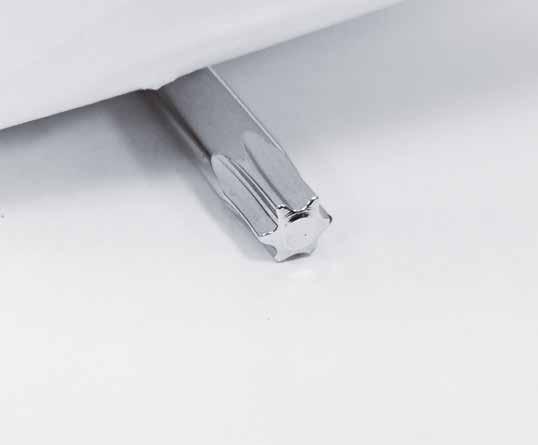


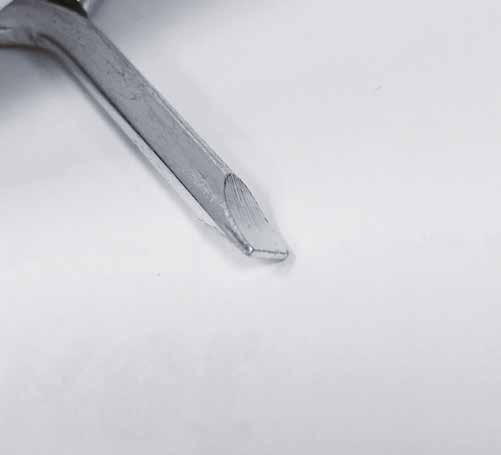

Hardware & Fastener Components no.58/2023 065
amounting to 10.06 million vehicles. Mexico, which ranks second, also has 3.5 million vehicles, and Brazil also has 2.37 million vehicles. It can be observed that the focus of car production in North America is still dominated by the United States and Mexico, and Brazil's position in car manufacturing in South America remains unshakable. The data also shows that compared with 2021, the automobile production in the United States, Mexico and Canada has a significant growth of about 10%. Regardless of whether it is North America or South America, its automobile production has shown a trend of increase year by year in the past three years. Originally, the Americas region was the third largest automobile production region in the world, but it successfully overtook Europe to be promoted to second place last year.
The top five producing countries in Europe (including the UK) are: Germany, Spain, France, Czech Republic and Slovenia. Germany, which ranks first, had 3.67 million vehicles in 2022. Although it is lower than 2020, it is still higher than 2021. Spain, which ranks second, also had more than 2 million vehicles in 2022. France, the Czech Republic and Slovenia also roughly maintained the level of 1 million vehicles. Except for several typical automobile production countries in Western Europe, it can be seen that the development of the automobile manufacturing industry in Central and Eastern Europe can be described as blooming everywhere, and there is a trend of gradually catching up from behind. For car manufacturers, the Czech Republic, Slovakia, Romania, Poland, Hungary and Portugal are all attractive investments. Especially in Romania, Poland and Portugal, their performance in 2022 increased by 21%, 10% and 11% respectively compared to 2021. In addition, if Turkey is also counted in Europe, there is also a production scale of about 1.3 million vehicles, which can also set off a certain influence in the European auto supply chain.
The main producing countries in Russia and Central Asia are: Russia, Uzbekistan, Kazakhstan, Belarus and Ukraine. In the past, Russia's average annual production volume was about 1.5 million vehicles, which shrank sharply to 608,000 vehicles in 2022, which may be related to the factors of international economic sanctions and the embargo of raw materials from Western countries. On the contrary, although the production scale of Uzbekistan and Kazakhstan is not large compared with other countries, the production in 2022 showed a significant growth of 38% and 22% respectively compared with
2021. The automobile industries in Belarus, Ukraine, and Azerbaijan are relatively underdeveloped in terms of data, with only a few thousand or tens of thousands of vehicles.
On the whole, if you don't look at the African part (too small), the car production in the Americas has the most significant growth year-on-year, reaching 10%. The AsiaPacific region followed closely behind, also growing by 7%. The European region is roughly the same as in 2021, with only a slight decrease of 1% (if you only look at the part of the EU 27 + the United Kingdom, there will also be a 5% growth).
Passenger Cars

Passenger cars are the mainstream purchases of general car consumers, and global passenger car production has grown year by year in the past three years. Passenger car production in 2022 increased by 8% compared to 2021 to approximately 61.59 million units, accounting for more than 72% of the total global car production. It can be seen that passenger cars are still the largest type of automobile production (see Table 2).
Benefiting from the demographic dividend in the region, about 68% of the passenger car production in the AsiaPacific region reached 42.32 million units, accounting for 84% of the total automobile production in the Asia-Pacific region. Passenger vehicle production in the Asia-Pacific region is highly concentrated in China, Japan, India, South Korea and Indonesia, with 23.83 million, 6.56 million, 4.43 million, 3.43 million and 1.21 million vehicles respectively. In 2022, except for Japan, which experienced a 1% decline, the other five countries had a growth rate of more than 10% compared to 2021, especially Indonesia's 37% growth rate is the most obvious.
The second largest production center for passenger cars is Europe, whose production of passenger cars in 2022 reached 13.72 million units, accounting for about 84% of the total car production in Europe. The top five passenger car producing countries in the region are Germany, Spain, Czech Republic, France and Slovakia, with 3.48 million, 1.78 million, 1.21 million, 1.01 million and 1 million vehicles respectively. Among them, Germany, France and Czech Republic all showed a performance of 10% compared with the previous year.
As for the Americas, which is currently the second largest automobile production region in the world, the production data of passenger vehicles has a very unexpected performance. The production of passenger vehicles in the Americas region in 2022 was approximately 4.83 million units, accounting for less than 30% of its

066 Industry Focus >> Hardware & Fastener Componentsno.58/2023

45488-004 45488-004 63647-001 63647-001 45488-004 45488-004 23258-005 23258-005 Hardware & Fastener Components no.58/2023 067
Industry Focus >>
Table 2. World Passenger Cars Production By Country/Region
total vehicle production (17.75 million units) in the same year, which is a relatively low proportion. The top 5 passenger car producing countries are Brazil, the United States, Mexico, Canada and Argentina in order, with 1.82 million, 1.75 million, 650,000, 289,000 and 257,000 vehicles respectively. Brazil has even surpassed the United States to become the most important passenger car production center in the Americas.
Light Commercial Vehicle

The production of light commercial vehicles is also a very important part of global automobile production. In 2022, the global production of light commercial vehicles reached 19.86 million units, an increase of 7% year-on-year, accounting for about 23% of the total global vehicle production in that year. (See Table 3)
Unlike passenger car production, which is mostly concentrated in the Asia-Pacific region, more than 60% of light commercial vehicle production is concentrated in the Americas (about 12.19 million units in 2022, an increase of 10% compared to 2020, and more than 87 % are concentrated in the United States and Mexico).
Production in the Asia-Pacific region also accounted for more than 26% (about 5.23 million vehicles), and
068
Hardware & Fastener Componentsno.58/2023
Pessenger Cars Units 2019 2020 2021 2022 Variation 2022/2019 Variation 2022/2020 Variation 2022/2021 Europe 18,700,957 14,534,879 13,822,390 13,725,107 -27% -6% -1% European Union 27 Countries + UK 15,835,919 12,045,025 11,338,938 12,025,961 -24% -0.2% 6% Germany 4,663,749 3,515,488 3,096,165 3,480,357 -25% -1% 12% Spain 2,248,291 1,800,664 1,662,174 1,785,432 -21% -1% 7% Czech Republic 1,427,563 1,152,901 1,105,223 1,217,787 -15% 6% 10% France 1,662,963 927,344 918,825 1,010,466 -39% 9% 10% Slovakia 1,107,902 990,598 1,030,000 1,000,000 -10% 1% -3% United Kingdom 1,303,135 920,928 859,575 775,014 -41% -16% -10% Romania 490,412 438,107 420,755 509,465 4% 16% 21% Italy 542,472 451,718 443,819 473,194 -13% 5% 7% Hungary 498,158 406,497 416,725 441,729 -11% 9% 6% Portugal 282,142 211,281 229,221 256,018 -9% 21% 12% Poland 434,700 278,900 260,800 255,100 -41% -9% -2% Sweden 279,000 249,000 258,023 238,955 -14% -4% -7% Belgium 247,020 237,057 224,180 232,100 -6% -2% 4% Austria 158,400 109,500 124,700 107,500 -32% -2% -14% Netherlands 176,113 127,058 107,021 101,670 -42% -20% -5% Finland 114,785 86,270 85,934 73,044 -36% -15% -15% Slovenia 199,114 141,714 95,797 68,130 -66% -52% -29% Serbia 34,985 23,272 21,109 4,358 -88% -81% -79% CIS 1,847,411 1,611,539 1,679,508 883,899 -52% -45% -47% Belarus 20,427 21,295 29,891 N/A - -Russia 1,523,607 1,260,518 1,352,740 448,897 -71% -64% -67% Uzbekistan 271,113 280,080 236,668 328,118 21% 17% 39% Kazakhstan 44,077 64,790 80,679 103,345 135% 60% 28% Azerbaijan 2,360 1,949 2,079 2,049 -13% 5% -1% Ukraine 6,254 4,202 7,342 1,490 -76% -65% -80% Turkey 982,642 855,043 782,835 810,889 -18% -5% 4% America 7,004,767 4,967,015 4,491,915 4,832,901 -31% -3% 8% NAFTA 4,369,893 3,219,558 2,559,194 2,699,108 -38% -16% 6% USA 2,511,711 1,924,398 1,562,717 1,751,736 -30% -9% 12% Mexico 1,396,812 967,479 708,242 658,001 -53% -32% -7% Canada 461,370 327,681 288,235 289,371 -37% -12% 0% South America 2,634,874 1,747,457 1,932,721 2,133,793 -19% 22% 10% Brazil 2,448,490 1,607,175 1,707,851 1,824,833 -26% 14% 7% Argentina 108,364 93,001 184,106 257,505 138% 177% 40% Colombia 78,020 47,281 40,764 51,455 -34% 9% 26% Asia-Oceania 40,650,626 35,822,949 38,188,956 42,324,447 4% 18% 11% China 21,389,833 19,994,081 21,444,743 23,836,083 11% 19% 11% Japan 8,329,130 6,960,411 6,619,245 6,566,356 -21% -6% -1% India 3,629,008 2,836,534 3,631,095 4,439,039 22% 57% 22% South Korea 3,612,587 3,211,706 3,162,727 3,438,355 -5% 7% 9% Indonesia 1,045,666 551,426 889,756 1,214,250 16% 120% 37% Iran, Yearly Only 770,000 826,210 838,251 997,519 30% 21% 19% Malaysia 534,115 457,755 446,431 650,190 22% 42% 46% Thailand 795,254 537,633 594,690 594,057 -25% 11% 0% Taiwan 189,549 180,967 196,749 191,409 1% 6% -3% Pakistan 156,623 95,504 193,991 190,555 22% 100% -2% Vietnam, Yearly Only 129,006 125,235 123,482 162,491 26% 30% 32% Philippines 57,238 37,141 46,278 41,663 -27% 12% -10% Myanmar, Yearly Only 12,617 8,346 1,519 2,480 -80% -70% 63% Australia 0 0 0 0 - -Africa 777,220 538,723 582,814 716,195 -8% 33% 23% Egypt, Yearly Only 18,500 23,754 N/A N/A - -Morocco 368,543 299,753 338,339 404,742 10% 35% 20% South Africa 348,665 238,216 239,267 309,423 -11% 30% 29% Algeria 60,012 754 5,208 2,030 -97% 169% -61% Total - 55,863,566 57,086,075 61,598,650 -8% 10% 8% Estimate / N/A : Not Available

it was mainly concentrated in China and Thailand, with 1.84 million and 1.28 million vehicles respectively.
In contrast, the production of light commercial vehicles in Europe in 2022 was only about 2.14 million, a decrease of 2% from 2021, accounting for only about 10% of the world. Judging from the published data, the most important manufacturers of light commercial vehicles in Europe are Spain, France, Italy, Poland and Germany. The Turkish part has maintained a production scale of 400,000 to 500,000 vehicles in the past few years.
Heavy Truck
The total production of heavy trucks in the world reached more than 4 million units per year from 2019 to 2021, but dropped sharply by 23% to 3.3 million units in 2022, mainly due to the performance of the AsiaPacific region (data showed that in 2022, the heavy-duty trucks in the Asia-Pacific region production fell sharply by 32% year-on-year). See Table 4.
The production of heavy trucks in the Asia-Pacific region in 2022 was 2.28 million units, accounting for nearly 70% of the total global heavy truck production in that year, with China, Japan and India as the main production centers.
The Americas is the second largest production base for heavy trucks. In 2022, the region produced a total of about 680,000 heavy trucks, accounting for about 21% of the global heavy truck production in the same year. Different from the Asia-Pacific region, the production of heavy trucks in the Americas shows
070 Industry Focus >> Hardware & Fastener Componentsno.58/2023
Estimate / N/A : Not Available
Light Units Commercial Vehicle 2019 2020 2021 2022 Variation 2022/2019 Variation 2022/2020 Variation 2022/2021 Europe 2,524,134 2,110,169 2,181,987 2,148,379 -15% 2% -2% European Union 27 Countries + UK 1,953,385 1,590,962 1,605,118 1,580,918 -19% -1% -2% Slovenia N/A N/A N/A N/A - -Finland Confidential Confidential Confidential Confidential - -Netherlands Confidential Confidential Confidential Confidential - -Sweden Confidential Confidential Confidential Confidential - -Hungary Confidential Confidential Confidential Confidential - -Spain 524,504 430,616 383,736 377,779 -28% -12% -2% France 509,552 388,653 433,401 372,707 -27% -4% -14% Italy 312,377 277,067 290,021 268,430 -14% -3% -7% Poland, All CVS 207,802 166,445 173,417 223,680 8% 34% 29% Germany 283,567 227,082 212,527 197,463 -30% -13% -7% United Kingdom 57,442 51,244 55,644 80,210 40% 57% 44% Portugal 58,141 49,855 56,372 60,649 4% 22% 8% Serbia 126 93 145 140 11% 51% -3% Austria 0 0 0 0 - -Belgium 0 0 0 0 - -Czech Republic 0 0 0 0 - -Romania 0 0 0 0 - -Slovakia 0 0 0 0 - -CIS (Only Russia) 122,749 109,468 129,776 83,813 -32% -23% -35% Ukraine 136 51 43 N/A - -Russia 122,749 109,468 129,776 83,813 -32% -23% -35% Azerbaijan 0 0 0 0 - -Belarus 0 0 0 0 - -Kazakhstan 0 0 0 0 - -Uzbekistan 0 0 0 0 - -Turkey 447,874 409,646 446,948 483,508 8% 18% 8% America 12,444,040 10,225,219 11,055,411 12,197,931 -2% 19% 10% NAFTA 11,882,266 9,763,494 10,442,053 11,567,376 -3% 19% 11% USA 8,036,106 6,656,572 7,307,551 7,988,565 -1% 20% 9% Mexico 2,414,256 2,072,699 2,320,239 2,650,345 10% 28% 14% Canada 1,431,904 1,034,223 814,263 928,466 -35% -10% 14% South America 561,774 461,725 613,358 630,555 12% 37% 3% Colombia N/A N/A N/A N/A - -Brazil 355,351 297,539 362,711 351,167 -1% 18% -3% Argentina 206,423 164,186 250,647 279,388 35% 70% 12% Asia-Oceania 5,255,384 4,668,333 5,108,390 5,238,222 0% 12% 3% China 2,002,284 2,151,347 2,174,102 1,846,256 -8% -14% -15% Thailand, All Cvs 1,218,456 889,441 1,091,015 1,289,458 6% 45% 18% Japan 839,582 697,423 708,524 752,774 -10% 8% 6% India 542,860 385,691 486,911 617,398 14% 60% 27% South Korea 258,534 229,040 227,673 245,547 -5% 7% 8% Indonesia 146,150 95,295 157,890 160,171 10% 68% 1% Vietnam 47,197 40,333 44,317 69,919 48% 73% 58% Taiwan 55,896 57,362 58,791 60,758 9% 6% 3% Iran, Yearly Only 40,800 43,778 44,785 53,295 31% 22% 19% Malaysia, All CVs 37,517 27,431 35,220 52,085 39% 90% 48% Philippines, All CVs 37,856 30,156 39,596 50,560 34% 68% 28% Pakistan 25,373 18,629 39,128 39,306 55% 111% 1% Myanmar 2,879 2,407 438 695 -76% -71% 59% Australia 0 0 0 0 - -Africa 289,092 214,218 296,834 275,594 -5% 29% -7% South Africa 254,417 185,691 232,166 215,472 -15% 16% -7% Morocco 34,675 28,527 64,668 60,122 73% 111% -7% Algeria N/A N/A 0 743 - -Egypt 0 0 0 0 - -Total 20,512,650 17,217,939 18,642,622 19,860,126 -3% 15% 7%
Table 3. World Light Commercial Vehicle Production By Country/Region





Hardware & Fastener Components no.58/2023 071
Industry Focus >>
Table 4. World Heavy Truck Production By Country/Region
a trend of annual growth. After a substantial growth of 44% in 2021, it will continue to grow by 11% by 2022. The United States, Mexico and Brazil are the top three major producers of heavy trucks in the region.
The production scale of heavy trucks in Europe is less than half of that in the Americas. In 2022, the production volume of heavy trucks in this region was about 300,000 units, a slight increase from 2021. Compared with the performance in 2020 and 2021, the growth performance of heavy truck production in Europe has a clear slowdown trend. At present, the most important heavy truck production bases in Europe are Spain, Italy, Belgium and the United Kingdom. Türkiye also has a production scale of nearly 40,000 vehicles.
Heavy Buses
Compared with the aforementioned models, the production scale of heavyduty buses is the smallest. In 2022, the global production of heavy-duty buses exceeded 250,000 units, a year-on-year increase of 28%. It also grew by 15% year-on-year before 2021 (see Table 5 ).

The Asia-Pacific region is the most important production base of heavy-duty buses. The output of heavy-duty buses in this region reached more than 170,000 in 2022, a substantial increase of 27% from the previous year, accounting for nearly 70% of the total global heavy-duty bus production in the same year. China and India are the main production centers.
The scale of production in the Americas and Europe
072
Hardware & Fastener Componentsno.58/2023
Heavy Truck Units 2019 2020 2021 2022 Variation 2022/2019 Variation 2022/2020 Variation 2022/2021 Europe 263,013 220,927 298,553 305,319 16% 38% 2% European Union 27 Countries + UK 174,018 133,062 174,154 182,675 5% 37% 5% Austria 21,000 15,500 12,000 N/A - -Slovenia N/A N/A N/A N/A - -Finland Confidential Confidential Confidential Confidential - -France Confidential Confidential Confidential Confidential - -Germany Confidential Confidential Confidential Confidential - -Netherlands Confidential Confidential Confidential Confidential - -Sweden Confidential Confidential Confidential Confidential - -Spain 49,837 36,905 52,223 56,251 13% 52% 8% Italy 60,294 47,937 63,167 54,499 -10% 14% -14% Belgium 38,434 30,070 36,785 44,357 15% 48% 21% United Kingdom 18,883 13,931 16,379 20,507 9% 47% 25% Portugal 5,389 3,039 4,338 5,714 6% 88% 32% Czech Republic 1,181 1,180 1,262 1,347 14% 14% 7% Hungary 0 0 0 0 - -Poland, See LCV 0 0 0 0 - -Romania 0 0 0 0 - -Slovakia 0 0 0 0 - -Serbia 9 10 9 0 - -CIS 69,992 64,615 85,825 76,074 9% 18% -11% Belarus 8,798 8,629 N/A N/A - -Ukraine Confidential Confidential Confidential Confidential - -Russia 60,262 52,103 70,506 63,723 6% 22% -10% Kazakhstan, All CVs 4,247 8,240 10,647 7,833 84% -5% -26% Uzbekistan 5,320 4,163 4,433 4,094 -23% -2% -8% Azerbaijan 163 109 239 424 160% 289% 77% Turkey 19,003 23,250 38,574 46,570 145% 100% 21% America 677,275 479,180 621,087 688,717 2% 44% 11% NAFTA 563,799 388,244 462,277 526,725 -7% 36% 14% USA, Including Buses 345,067 240,056 286,937 320,038 -7% 33% 12% Mexico 195,421 133,965 162,836 195,789 0% 46% 20% Canada 23,311 14,223 12,504 10,898 -53% -23% -13% South America 113,476 90,936 158,810 161,992 43% 78% 2% Argentina Confidential Confidential Confidential Confidential - -Brazil 113,476 90,936 158,810 161,992 43% 78% 2% Colombia N/A N/A N/A N/A - -Asia-Oceania 3,160,164 3,626,520 3,331,219 2,280,468 -28% -37% -32% Philippines N/A N/A N/A N/A - -Thailand N/A N/A N/A N/A - -Vietnam N/A N/A N/A N/A - -China 2,217,847 2,976,459 2,408,249 1,249,268 -44% -58% -48% Japan 506,541 405,451 506,938 512,809 1% 27% 1% India 254,165 122,576 246,407 327,369 29% 167% 33% Indonesia 91,757 41,379 72,983 93,679 2% 126% 28% South Korea 64,758 55,583 65,895 64,896 0% 17% -2% Iran 9,600 10,301 10,538 12,540 31% 22% 19% Taiwan 5,859 7,286 9,780 9,096 55% 25% -7% Australia, Yearly Only 5,606 4,730 5,391 6,077 8% 29% 13% Pakistan 4,031 2,755 5,038 4,734 17% 72% -6% Malaysia 0 0 0 0 - -Myanmar 0 0 0 0 - -Africa 27,840 22,567 26,969 30,249 9% 34% 12% Algeria N/A N/A N/A N/A - -Egypt 0 0 0 0 - -Morocco N/A N/A N/A N/A - -South Africa 27,840 22,567 26,969 30,249 9% 34% 12% Total 4,128,292 4,349,194 4,277,828 3,304,753 -20% -24% -23%
Estimate / N/A : Not Available

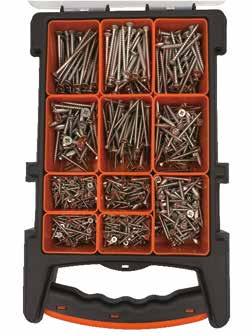


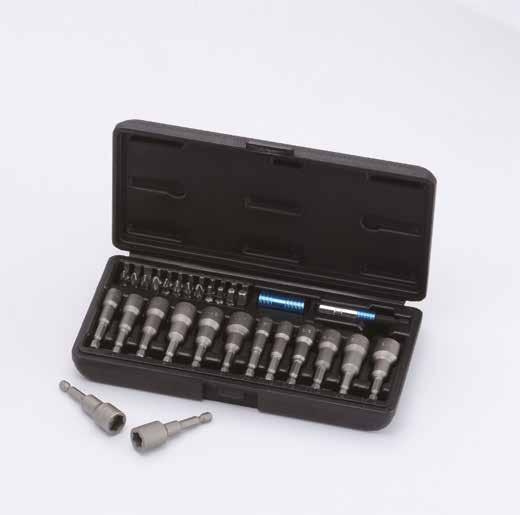

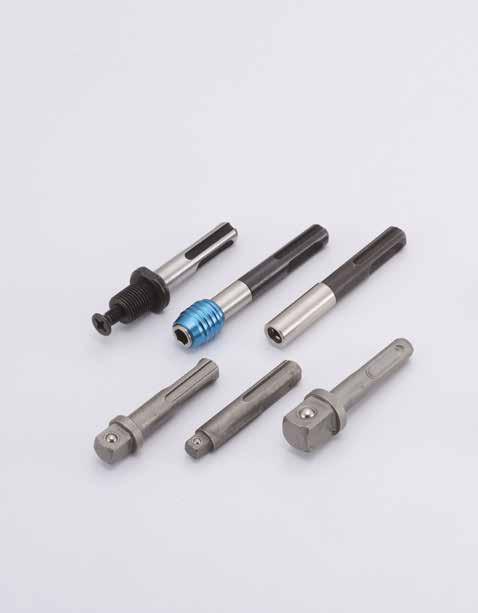



Hardware & Fastener Components no.58/2023 073
is similar, probably accounting for nearly 40,000 vehicles. It is worth noting that the production scale of heavy-duty buses in the Americas increased by 71% and 64% in 2021 and 2022, respectively. In particular, Mexico and Brazil almost cover the production of heavyduty buses in the Americas. In Europe, the Czech Republic and Poland are the main production bases for heavy-duty buses.
Summary
Judging from the data in the above tables, the overall global vehicle production volume has not shown a significant downward trend due to the epidemic in the past four years, but has increased year by year. This result may make many previous analysts who were pessimistic about the auto market surprised. However, on the other hand, it may also mean that the demand for cars from global consumers is still strong, which in turn will boost the production willingness of various car manufacturers. Asia (especially China), the United States, Mexico, Brazil, Western European countries and major Central and Eastern European countries will continue to play very critical roles in global automobile production (whether it is passenger cars, light commercial vehicles, heavy trucks, or heavy buses).
This may also be good news for many manufacturers that focus on the production of automotive fasteners. Coupled with the continuous technological improvement of the automobile industry, if the automotive fastener industry can actively strengthen cooperation with customers in major automobile production markets to establish distribution channels, and at the same time grasp the changes and trends in the application of automotive fasteners in the future, automotive fasteners, I believe, will still be a profitmaking shortcut full of business opportunities.
074 Industry Focus >> Hardware & Fastener Componentsno.58/2023
Heavy Buses Units 2019 2020 2021 2022 Variation 2022/2019 Variation 2022/2020 Variation 2022/2021 Europe 43,235 38,454 35,235 38,083 -12% -1% 8% European Union 27 Countries + UK 15,031 12,610 11,373 11,656 -23% -8% 3% Austria N/A N/A N/A N/A - -Finland N/A N/A N/A N/A - -Hungary N/A N/A N/A N/A - -Slovenia N/A N/A N/A N/A - -France Confidential Confidential Confidential Confidential - -Germany Confidential Confidential Confidential Confidential - -Netherlands Confidential Confidential Confidential Confidential - -Sweden Confidential Confidential Confidential Confidential - -Czech Republic 5,217 5,070 4,947 5,322 2% 5% 8% Poland 7,362 6,037 5,204 5,060 -31% -16% -3% United Kingdom 1,945 941 890 883 -55% -6% -1% Italy 148 335 236 271 83% -19% 15% Belgium 343 166 73 97 -72% -42% 33% Portugal 16 61 23 23 44% -62% 0% Spain 0 0 0 0 - -Romania 0 0 0 0 - -Slovakia 0 0 0 0 - -Serbia 0 0 0 0 - -CIS 16,479 15,905 16,079 14,746 -11% -7% -8% Belarus 1,269 1,349 N/A N/A - -Ukraine 876 698 768 N/A - -Russia 13,869 13,462 13,985 12,027 -13% -11% -14% Kazakhstan 1,076 1,801 1,091 1,362 27% -24% 25% Uzbekistan 1,534 642 1,003 1,357 -12% 111% 35% Azerbaijan 0 0 0 0 - -Turkey 11,725 9,939 7,783 11,681 0% 18% 50% America 34,319 21,513 22,422 36,714 7% 71% 64% NAFTA 6,648 3,108 3,541 4,937 -26% 59% 39% Canada, See LCV & HCV N/A N/A N/A N/A - -Mexico 6,648 3,108 3,541 4,937 -26% 59% 39% USA, See LCV & HCV 0 0 0 0 - -South America 27,671 18,405 18,881 31,777 15% 73% 68% Argentina Confidential Confidential Confidential Confidential - -Brazil 27,671 18,405 18,881 31,777 15% 73% 68% Colombia N/A N/A N/A N/A - -Asia-Oceania 267,667 158,747 140,234 177,657 -34% 12% 27% Malaysia N/A N/A N/A N/A - -Thailand N/A N/A N/A N/A - -Vietnam N/A N/A N/A N/A - -China 140,686 103,355 94,618 89,008 -37% -14% -6% India 98,333 37,018 34,699 73,051 -26% 97% 111% South Korea 14,735 10,445 6,109 8,251 -44% -21% 35% Japan 9,254 4,658 2,201 3,580 -61% -23% 63% Indonesia 3,275 2,076 1,338 2,046 -38% -1% 53% Iran, Yearly Only 660 708 724 862 31% 22% 19% Pakistan 724 487 545 859 19% 76% 58% Australia 0 0 0 0 - -Myanmar 0 0 0 0 - -Philippines 0 0 0 0 - -Taiwan 0 0 0 0 - -Africa 999 739 685 745 -25% 1% 9% Algeria N/A N/A N/A N/A - -South Africa 999 739 685 745 -25% 1% 9% Egypt 0 0 0 0 - -Morocco 0 0 0 0 - -Total 346,220 219,453 198,576 253,199 -27% 15% 28% Estimate / N/A : Not Available
Table 5. World Heavy Buses Production By Country/Region

Global EV Sales for 2022 & EV Fastening on the Front Line
2022全球電動車廠產銷表現
Global Sales Growth was Slower in 2022 But Remained High
Electric vehicles mainly include pure electric vehicles and plug-in hybrids. Global EV sales (Figure 1) grew from 2.276 million vehicles in 2019 (up 9%) before the pandemic, went on to 3.244 million vehicles in 2020 (up 43%), then doubled to 6.768 million vehicles in 2021 (up 109%), and jumped to 10.522 million vehicles in 2022 (up 55%) approaching the end of the pandemic.

In terms of EV market share in global vehicle sales, from 2019 to 2022, the EV share went from 2.5% to 4.2%, 8.3% and 13% respectively. Here we can tell that
EV sales doubled during the pandemic years. Although the market share growth slowed down to 56% in 2022, it still shows the strength of the demand for electric vehicles.
Astounding EV Demand in China Regardless of Economic Crisis
As shown in Figure 2, European EV sales surged 151% in 2020. Then, the growth began to slow down, dropping to 66% in 2021 and only 15% in 2022, mainly because the war between Russia and Ukraine exacerbated parts shortage at the time. China’s EV sales soared 155% in 2021, then the growth slowed to 82% in 2022. However, China’s astounding
2,276 3,244
0 2,000 4,000 6,000 8,000 10,000 12,000 2019 2020 2021 2022 E V S a l e s
6,768 10,522
Fig 1. Global EVs Sales 2019 - 2022
Vehicles Sold (Unit: thousand)
076 Industry Focus >> Hardware & Fastener Componentsno.58/2023

demand for EVs is evident in the fact that China’s sales in 2022 were 2.3 times higher than Europe’s and 5.5 times higher than the U.S. and Canada’s. The U.S. grew just 11% in 2020, then accelerated to 111% growth in 2021 and slowed to 48% growth in 2022.
Norway and Indonesia Show Strong Potential for EVs
Other regions’ EV sales (Figure 2) grew 161% from the beginning to the end of the pandemic. Notably, Norway’s domestic EV market share was high at 78%. It was 27% for China, 20% for Europe, and 7% for the US. In terms of growth rate, Indonesia grew the fastest, up 10 times to 10,000 vehicles; India grew twice as fast to 50,000 vehicles; New Zealand grew 1.5 times as fast to 23,000 vehicles.
Most Global Automakers Achieved Double-Digit Sales Growth
In terms of EV sales by major carmakers in 2022 (Figure 3), BYD was up 211% to 1.85 million vehicles, followed by Tesla with 40% growth to 1.3 million vehicles, VW Group in third place with 10% growth to 850,000 vehicles, GM Wuling in fourth place with 13% growth to 600,000 vehicles, and Stellantis in fifth place with 34% growth to 500,000 vehicles, followed by Hyundai by a small gap.
The rest of the carmakers included BMW, up 32% to 450,000 vehicles, Geely up 251% to 350,000 vehicles, Changan Automobile up 134% to 250,000 vehicles, Ford up 55% to 200,000 vehicles, and Nio up 33% to 150,000 vehicles. Global EV sales continued to grow throughout 2022, with the exception of Great Wall Motor which dropped 4 percent and Toyota which dropped 13 percent.
BYD Taking up Most of the Top 10 Chart and Eyeing Tesla
In terms of EV models(Figure 4), Tesla and BYD series are arguably the most sought-after vehicles in the world. Tesla’s Model Y and Model 3 are the top two in the 10 most popular EV models. Model Y sales grew from 410,000 vehicles in 2020 to 770,000 vehicles worldwide, while Model 3 sales dropped from 500,000 vehicles to 470,000. Adding these two
EV Sales 2019 - 2022 by Regions
models together, Tesla’s sales increased from 910,000 vehicles in 2020 to 1.24 million vehicles in 2022, a 36% increase.
BYD is Tesla’s biggest rival, with as many as six models in the top 10, accounting for more than half of the rankings. Adding up the global sales of the six models in 2022, the total reached 1.28 million vehicles up 178 percent and exceeded Tesla’s total. BYD’s growth rate in the past year was nearly 5 times that of Tesla!
Future EV Demand is Still Growing
China rolled out multiple incentive policies in 2022 that stimulated EV sales to grow 82%. Europe, the second largest EV market, has been hit by geopolitics and seen its growth shrink significantly. In the U.S., EV sales were up 48% due to subsidies for vehicle owners and the rollout of consumer-preferred vehicle models.
Based on the data by several market research firms, global EV sales are expected to grow about 30 percent to 14 million vehicles by 2023. Although global EV sales are expected to grow at a slower rate this year than in the past two years, they still make a significant momentum for growth. If political tensions in Europe subside, and if countries make efforts to reduce inflationary pressures, the potential for EV demand is still worth looking forward to.
Europe China U S /Canada Other Regions 2019 558 1,206 301 211 2020 1,401 1,331 354 158 2021 2,332 3,396 748 291 2022 2,683 6,181 1,108 551 0 1,000 2,000 3,000 4,000 5,000 6,000 7,000 ( U n i t : 1 , 0 0 0 V e h i c l e s )
2019 2020 2021 2022 1,850 1,300 850 600 500 450 350 250 200 150 0 200 400 600 800 1,000 1,200 1,400 1,600 1,800 2,000 ( U n i t : 1 , 0 0 0 v e h i c l e s )
Fig 2.
Fig 3. Global EV Sales By OEM in 2022
078 Industry Focus >> Hardware & Fastener Componentsno.58/2023
EV Fastening on the Front Line
The differences between electric and fuel vehicles have changed the design of automotive fasteners. Instead of using traditional transmissions, EVs use motors with electronic controllers, increasing the need for circuit boards. These circuit boards are often set into a light aluminum casting, which require micro-screws for fastening. These thread-forming screws must deliver performance in a miniaturized setting to replace welding, gluing and clipping. Some threaded self-forming screws also have the function of heat sinks and vibration resistance.

Carmakers have adopted boron steel as a core material for lightweighting vehicle bodies, allowing for thinner and stronger materials. It requires corresponding technology to bond alloys to the car bodies. Some carmakers have signed confidentiality agreements with fastener suppliers to provide fasteners for the assembly of power electronics systems (including circuit boards, electrical contacts, DC adaptors, HV/LV filters, battery packs, on-board charger circuit boards, sealing covers for internal cooling device and housing covers). It is worth noting that the use of recycled plastics is emerging among carmakers, and the performance design of corresponding fasteners has changed due to the different material combinations from the original ones.

A final point of interest is the charging station for EVs. A home wall-mounted EV charging station uses about 50 fastening elements. If the charging station is mounted to a wooden wall, wood screws or drywall anchors are often used. If installed on a concrete wall, expansion anchors, cement screw or chemical anchors would be used. If the station is installed outdoors, stainless steel screws or coated screws are used. The need for fasteners that will come with charging stations should not be overlooked.
by Dean Tseng, Fastener World

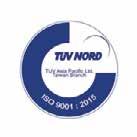
771 476 424 410 205 202 195 174 145 129 0 100 200 300 400 500 600 700 800 900 ( U n i t : 1 , 0 0 0 v e h i c l e s )
079 Industry Focus >> Hardware
Fig 4. EV Models Global Sales in 2022
& Fastener Componentsno.58/2023

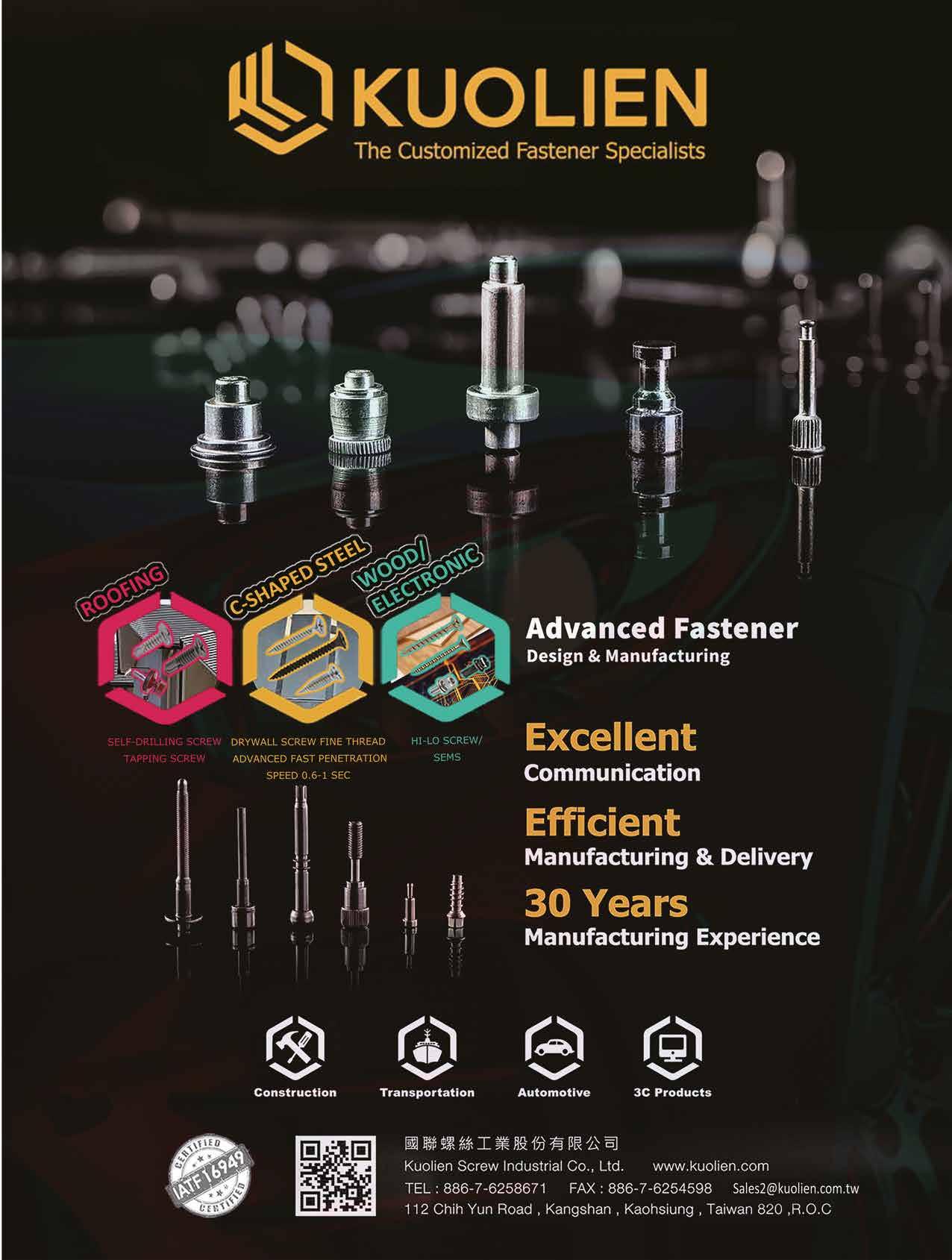
The event will take place from 6 to 8 June at the Bilbao Exhibition Centre.
NEARLY 500 EXHIBITING FIRMS CONFIRMED TO THE DATE TO PARTICIPATE IN +INDUSTRY 2023
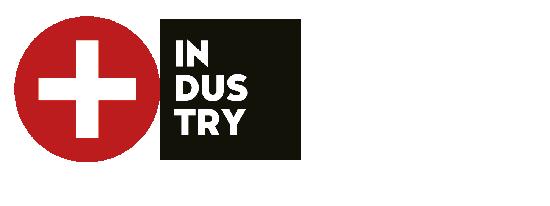
The main players in the Smart Manufacturing value chain will gather from 6 to 8 June at +INDUSTRY 2023, the major industrial platform, which will simultaneously host the ADDIT3D, BeDIGITAL, MAINTENACE, PUMPS&VALVES and SUBCONTRATACIÓN trade fairs, as well as the specific section focused on the industrial supplies and hardware sector. So far, more than 489 exhibitor companies have confirmed their participation in the event.
+INDUSTRY will feature sectorised displays of the main innovations and advances in manufacturing processes and supplies for industry, digitalisation, and additive manufacturing, as well as equipment for industrial processes and the latest products and technologies for maintaining assets and facilities in Halls 1 and 3 of the BEC.
It will be a comprehensive and attractive promotional showcase in commercial and technological terms, and will feature companies such as JG AUTOMOTIVE, ALBERDI MEKANIZATU LANAK SL, KL-KATEALEGAIA, EGA MASTER, VICINAY, HEICO FASTENER, ABBYY, ZUCHETTI, CEGID, PIXEL SISTEMAS, DELTECO, MAQUINSER, PEKOS GROUP, TÉCNICA DE FLUID OS, MEI VALVOLE, BOSCH, ROSMIMAN and GENERAL DRIVER MOTOR.

Thanks to the participation of these and other companies and entities, which will offer commercial solutions and proposals to open the way to new markets and products, representatives of large firms such as ACCIONA, ACITURRI, AIRBUS, AMPO, ARCELORMITTAL, ARTECHE, BRIDGSTONE, CAF, EDP, GAMESA, GESTAMP, HENKEL, IBERDROLA, ITP AERO, MERCEDES-BENZ, PEPSICO, PETRONOR, RENFE, SIDENOR, SIEMENS, SOLVAY, TUBACEX, UNILEVER y VOLKSWAGEN GROUP have already registered to attend the fair.
In an industry, such as the advanced one, that is in constant development, it is essential remain at the forefront of innovation to offer competitive and innovative products. This is why +INDUSTRY has enhanced its profile as a space for business and knowledge transfer thanks to amulti-sector conference programme that will address the key aspects related to 4.0 solutionsfor industry with more than fifty specialists from around the world.
Moreover, the programme of activities will include live demonstrations, Innovation Workshops, networking activities and B2B meetings. The latter will include the 20th European Industrial Subcontracting Meeting, one of Spain’s largest forums for B2B meetings, which will feature around a thousand sessions.
Department of Communication, 14 March 2023
082 Exhibitions Preview >> Hardware & Fastener Componentsno.58/2023
近500家企業確定參與2023西班牙畢爾包五金工具展







Hardware & Fastener Components no.58/2023 083
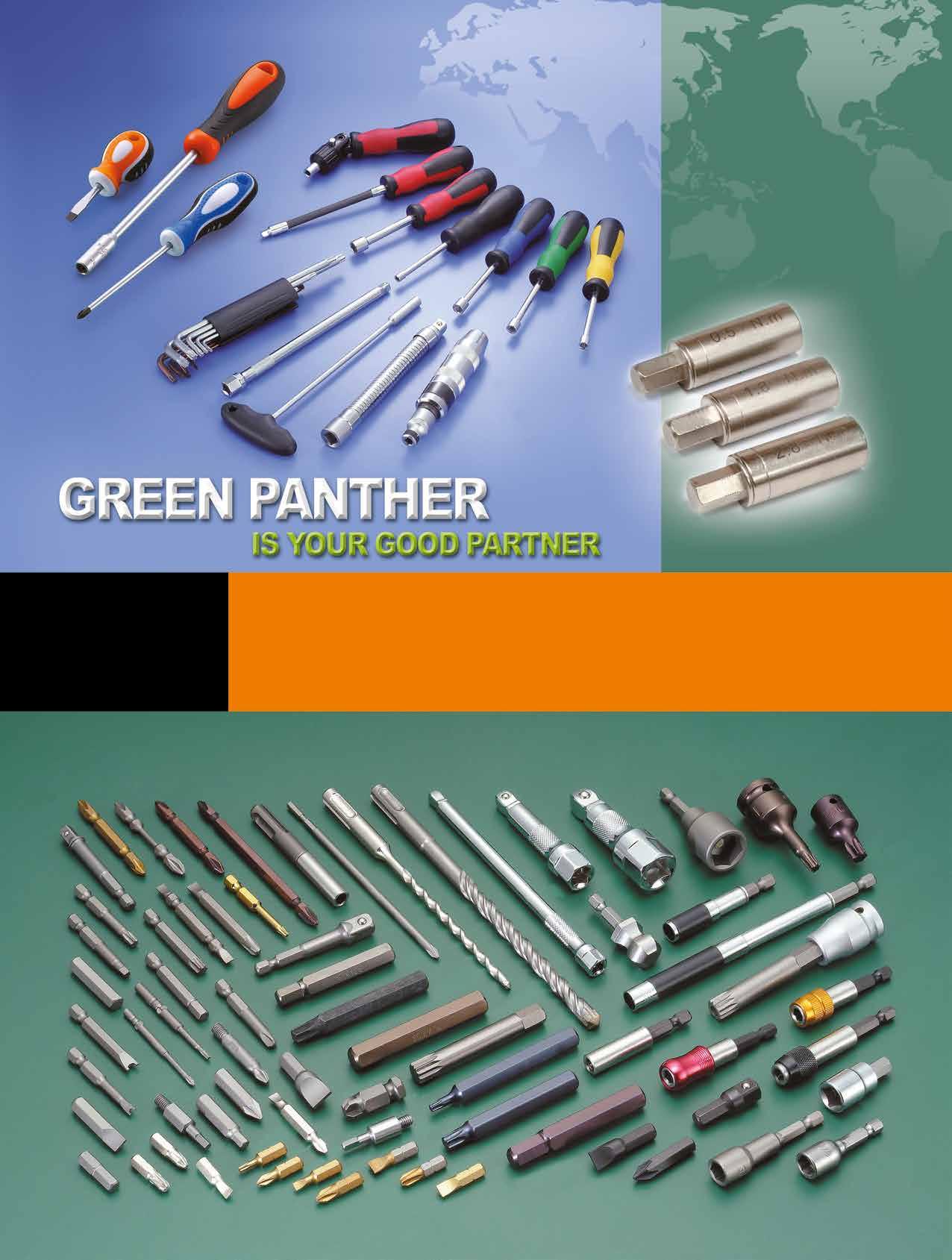



Hardware & Fastener Components no.58/2023 084
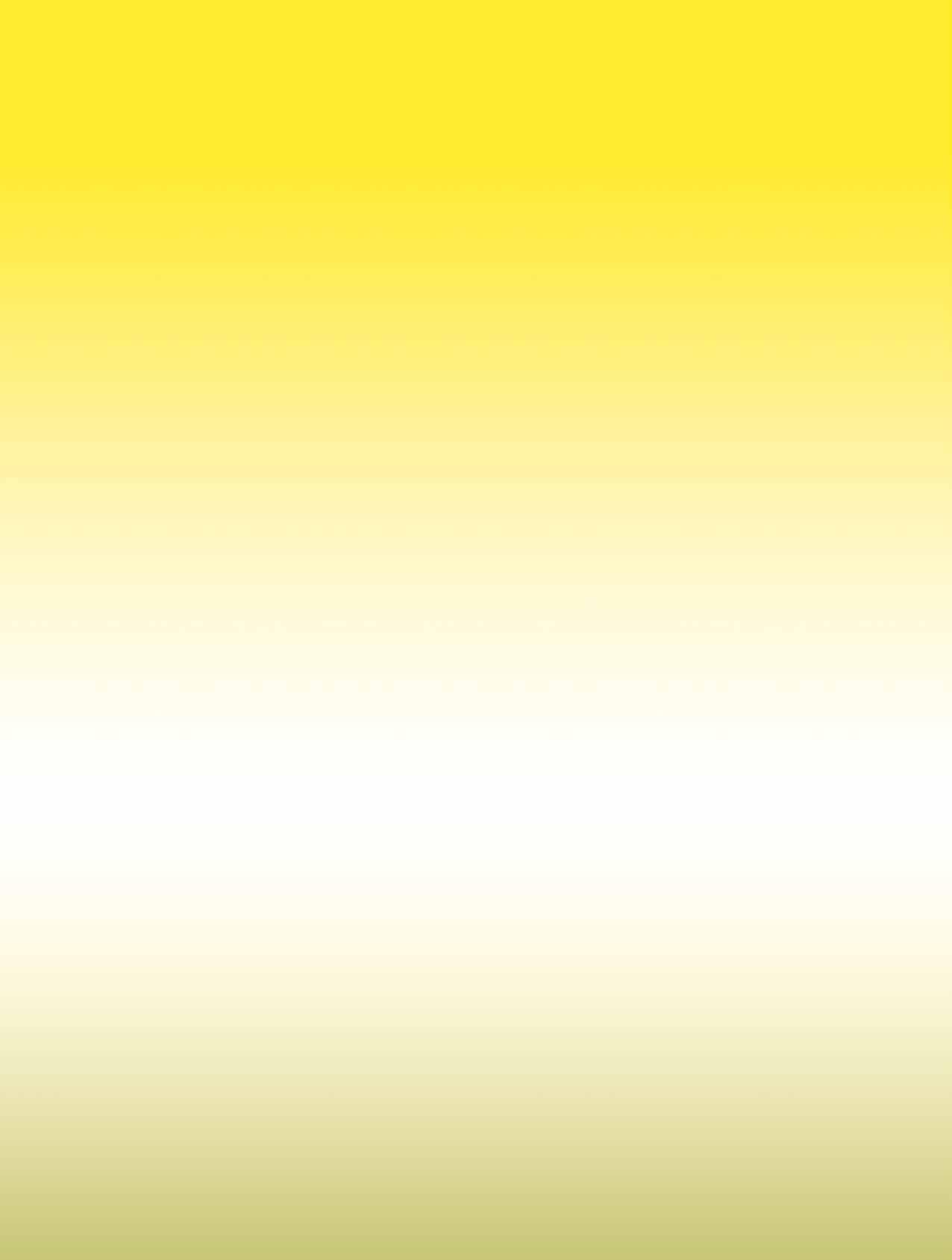





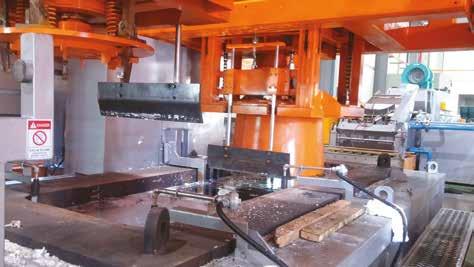


TAIPEI AMPA Taiwanese
Automotive Parts OEM Capability Satisfies Global Demand
台北國際汽機車零配件展 車用零部件代工能力滿足世界需求
Taipei International Automobile & Motorcycle Parts & Accessories Show (TAIPEI AMPA) was held from April 12 to 15, 2023 in Hall 1 of Taipei Nangang Exhibition Center. For the first time the show combined 3 sub-fairs including TAIPEI AMPA, AUTOTRONICS TAIPEI, 2035 E-Mobility Taiwan. Across 4 days, it attracted nearly 4,000 global buyers, 830 companies, 2,200 booths, over 50,000 professionals, and 4,000 domestic and overseas buyers from 103 countries. The majority of the buyers were from Japan, while others included Malaysia, the U.S., Singapore and South Korea.
During the show, the organizers arranged full-day forums, with electric vehicles being a major focus of discussion. Global EV sales have soared from 2.276 million units to 10.522 million units in the past three years, creating a huge demand for parts and components. Taiwan provides automotive fasteners and parts OEM production technology that is equal to the world standard, so naturally it has become a hot spot for buyers from over 100 countries to come and purchase. At the Fastener World booth, we met domestic and foreign buyers who came to inquire about automotive fasteners, professional-grade fastening tools and other high-end fastening products, expecting to find high quality sources of supply through our matching services. Judging from the post-show matchmaking result, the future potential of the automotive parts OEM market in Taiwan is still huge.
With this year's show coming to an end, the organizer announced the next TAIPEI AMPA, AutoTronics Taipei, and E-Mobility Taiwan 2035 will be held from April 17 to 20, 2024.




086 Exhibitions >> Hardware & Fastener Componentsno.58/2023
2023 M-Tech Nagoya
Increased Demand for Automotive Parts and Project Fasteners
2023 M-Tech名古屋工業展 車用五金與專案計畫扣件需求增加
The 8th M-Tech Nagoya was successfully held from April 12 to 14, 2023 in Hall 1 of the Port Messe Nagoya. A Japanese exhibitor at the show told Fastener World that the venue was packed with people on the first day of the show, and remained heavily patronized for three consecutive days. According to the data of the organizer, 8,044 people came on the first day, 9,093 on the second day, and 10,363 on the third day, increasing day by day for three consecutive days, reaching 275,000 people in total. In fact, Fastener World’s booth saw more visitors coming to seek matchmaking services on the third day.




One visitor to Fastener World shared a new trend that is brewing in the international market— titanium alloy powder. This is a high precision material that can be used as a raw material for the production of high-end products such as medical grade, aerospace grade, and automotive grade fasteners, and is gradually attracting the interest of many fastener manufacturers. Due to high plasticity and machinability, powdered titanium alloy is very suitable for forming high precision and highly customized fastener products. Even when customers request specific fastener shapes, powdered titanium alloy can handle. Therefore, the production using titanium alloy powder is very flexible and suitable for manufacturers who are upgrading to high value-added products. The potential of titanium alloy powder in the future is considerable.
The organizer announced that the next M-Tech Nagoya will be unveiled again on April 10-12, 2024.
087 Exhibitions >> Hardware & Fastener Componentsno.58/2023
Fastener

Fair Global 2023: Inpour of People and Purchase Orders Drive Business Opportunity This Spring


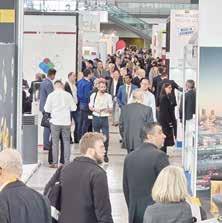


As a major manufacturing city, Germany has huge potential for its industrial and automotive industries. Market research institutions have released the latest forecast that the global market scale of industrial fasteners will reach USD 87.3 billion by 2026, while automotive fasteners will reach USD 24.2 billion in 2028, of which Germany will occupy a significant share. Against the background of high demand prospects, the world waited four years and finally witnessed the 9th edition of Fastener Fair Global returning to Messe Stuttgart for a threeday period from March 21-23, 2023, attracting global fastener exhibitors and buyers to exchange and discuss collaboration opportunities.
The organizer's booth sales agent, Fastener World brought nearly 150 Taiwanese exhibitors to the event to gain more business opportunities for the Taiwanese industry to export to the European market. Several Taiwanese fastener companies told Fastener World that the lineup of Taiwan exhibitors in the 2023 edition was a huge force that could not be underestimated. The reason why Taiwan attached great importance to the return of this show was because, for one thing, Taiwan saw the potential of this show in prompting buyers to place orders; for another, Taiwan looked to grasp a wave of orders from this show in spring to replenish order books and to begin shipping worldwide from the second half of 2023. Additionally, the newly designed Taiwan Pavilion was particularly eyecatching and stood out in the venue, attracting inquiries from many local and overseas buyers and visitors.

088 Exhibitions >> Hardware & Fastener Componentsno.58/2023
During the show, Fastener World provided visitors with matchmaking and other collaboration opportunities, and recommended many suppliers' quality products and technologies through publications. One thing of interest was that the Fastener World’s staff took a group photo with one of the visitors in exotic clothes and screw hat, creating a joyful interaction.
According to the latest data from the organizer's press release issued on March 30 (German time), the three-day show attracted around 1,000 exhibitors from 46 countries and used 23,230 square meters of venue space in total (1,000 square meters more than the previous edition) in Halls 1/3/5/7. Exhibitors were mainly from Germany, Italy, Spain, Turkey, UK, the Netherlands, Poland, France, Taiwan, China and India. This year, with the lifting of lockdown in various countries, overseas buyers are eager to start replenishing their stock in large quantities. The 2023 edition brought an inpour of both people and purchase orders. Almost 11,000 trade visitors from 83 countries visited the Fair and they were mostly distributors, manufacturers, and suppliers from Germany, Italy, UK, Poland, France, the Netherlands, Switzerland, Spain, Czech Republic, Austria, and Belgium.
Fastener Fair Global showcased a wide range of products, including raw materials (wire rods), finished/semi-finished fasteners, tooling, machines and equipment, secondary processing, surface treatment, heat treatment, electroplating and baking, warehousing, and related products and services. Every year, the show attracted numerous visitors from the construction, automotive, aerospace, marine, electronics, light and heavy engineering, energy, communication technology, metal products, furniture manufacturing, and sanitary ware industries.
The next edition of Fastener Fair Global will take place again at Messe Stuttgart on March 25-27, 2025.






Snapshots from Fastener World's stand

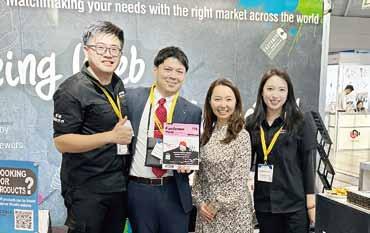





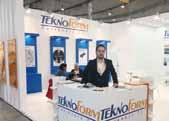






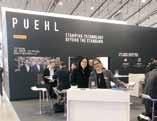




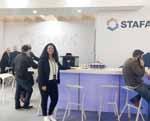
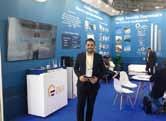


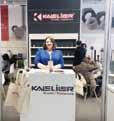




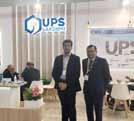


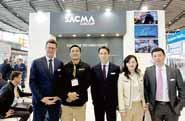





Exhibition 090 Fastener World no.200/2023
Birlik Böllhoff
Brighton-Best International
Eurobolt
Tecfi Teknoform
TITGEMEYER
Zarri
Marcopol Nitto Seiko
pgb
Precision Technology Supplies Puehl
Remaches Factory Reyher
Schlöt
SOM Fasteners STAFA
Gala Precision Hafren
Hyodong
Kaleliler KEBA Fastening
Korea Pavilion Lederer
LOBSTER
UPS Lakshmi Synergy
Fixi SACMA
Sunco
301 Express Fastbolt Achilles Seibert & Albert Pasvahl & Peter Schröder AMBROVIT
Taiwan E xhibitors

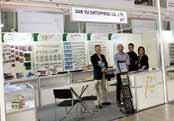



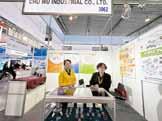


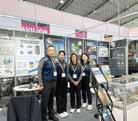

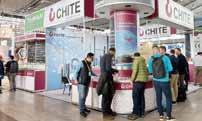





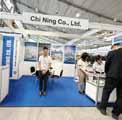






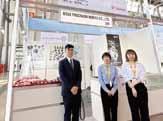
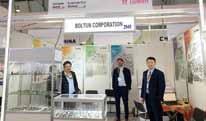

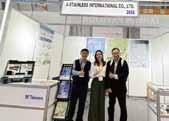







 Aimreach
Aimreach
All
Alex Screw
Gain
A-Plus &
Plan
Anchor Fasteners
Header
A-Stainless Atlas
Atotech
Amis
Ben Yuan
Bi-Mirth Boltun
Boss Precision
Brilliant Engineering
Broaden Worldwide
Canatex Chang Yi Bolt
Channg Chin Chi Ning Chian Yung
Chiao Chang Chin Lih Hsing
Chirek Chite Chong Cheng
Chu Wu Chum Yuan Chun Yu Cornwall
Co-Wealth
CPC Fasteners Da Yang
Dah-Lian Machine
Dar Yu De Hui

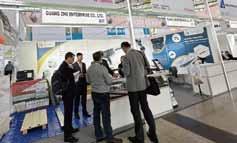




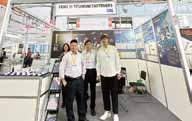

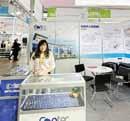
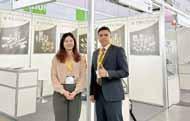





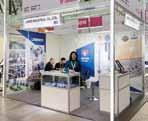
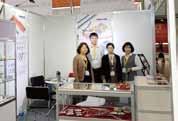


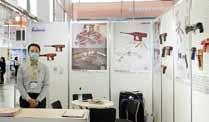



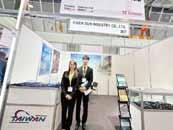
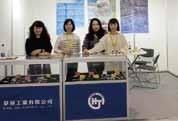


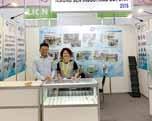








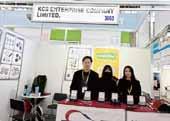


 Good Use Hardware Guang Zhe
Fu Hui Fwu Kuang Gofast
Fast Asia Feng Yi
Fong Prean
Fontec Screws Fratom Fastech
J.C. Grand Jackway
J. T Fasteners
Jau Yeou
Ji Li Deng Joker
K. Ticho
Kai Shyun
Kao Wein
Hsin Ho
Hao Mou Home Soon
Homeyu Hsien Sun
Huang Jing
Hwa Hsing
Hwally Products
Hsiung Jen
Hsin Yu
Desirable Diing Sen
Dra-Goon Dunfa Evereon Fang Sheng
Katsuhana KCS
Key-Use
KOT Uniontek Kuang Tai
Good Use Hardware Guang Zhe
Fu Hui Fwu Kuang Gofast
Fast Asia Feng Yi
Fong Prean
Fontec Screws Fratom Fastech
J.C. Grand Jackway
J. T Fasteners
Jau Yeou
Ji Li Deng Joker
K. Ticho
Kai Shyun
Kao Wein
Hsin Ho
Hao Mou Home Soon
Homeyu Hsien Sun
Huang Jing
Hwa Hsing
Hwally Products
Hsiung Jen
Hsin Yu
Desirable Diing Sen
Dra-Goon Dunfa Evereon Fang Sheng
Katsuhana KCS
Key-Use
KOT Uniontek Kuang Tai




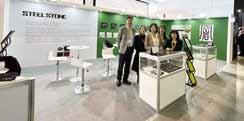



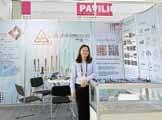










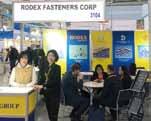
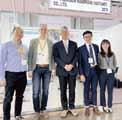





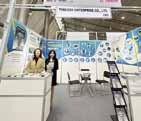














 Spec Products Special Rivets
Spring Lake Standing Industrial Steel Stone
Shen Chou Shiang Ging
Shin Chun
Shin Jaan Soon Port
S&T Fastening San Yung
Sen Chang Sheh Fung & Sheh Kai
Screwtech
Pro Power Ray Fu Rong Yih Jiang Rexlen
Rodex Riu Precision
NCG Tools Nova. Fastener OFCO
Oriental Multiple Vietnam PATTA Pingood
Master United Masterpiece Hardware Maudle
Metal Fasteners Midas
Longhwa Loyal & Birch
Luna's Light Major Industries Mao Chuan
Kwantex Kuo Hsian Leaderwing Linkwell Long I
Spec Products Special Rivets
Spring Lake Standing Industrial Steel Stone
Shen Chou Shiang Ging
Shin Chun
Shin Jaan Soon Port
S&T Fastening San Yung
Sen Chang Sheh Fung & Sheh Kai
Screwtech
Pro Power Ray Fu Rong Yih Jiang Rexlen
Rodex Riu Precision
NCG Tools Nova. Fastener OFCO
Oriental Multiple Vietnam PATTA Pingood
Master United Masterpiece Hardware Maudle
Metal Fasteners Midas
Longhwa Loyal & Birch
Luna's Light Major Industries Mao Chuan
Kwantex Kuo Hsian Leaderwing Linkwell Long I
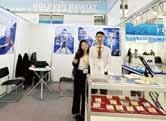

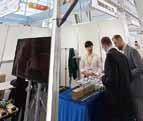
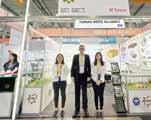














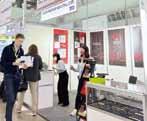

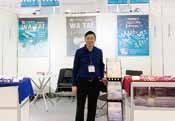




 Sun Through Super DPD
Taiwan CMC
Taiwan Metiz Alliance
Taiwan Shan Yin
Yun Chan Zi Ea Zyh Yin
Your Choice Yow Chern Yoang Ming Yiciscrew
Y Y. Cable Yang Yi Technology
Yeswin Machinery Wyser
TFTA TIFI Vertex Vertigo Forming Solutions
Wa Tai
We Power Wei In Whirlpower Wingtone Wan Iuan
Sun Through Super DPD
Taiwan CMC
Taiwan Metiz Alliance
Taiwan Shan Yin
Yun Chan Zi Ea Zyh Yin
Your Choice Yow Chern Yoang Ming Yiciscrew
Y Y. Cable Yang Yi Technology
Yeswin Machinery Wyser
TFTA TIFI Vertex Vertigo Forming Solutions
Wa Tai
We Power Wei In Whirlpower Wingtone Wan Iuan
China Exhibitors


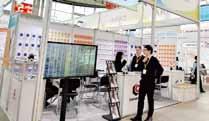






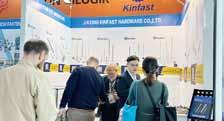

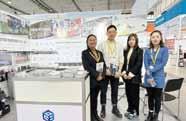
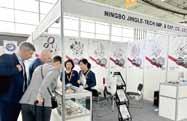









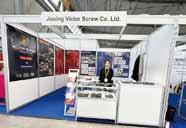




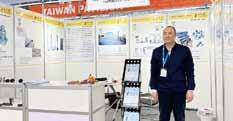
Exhibition 091 Fastener World no.200/2023
Beijing Jinzhaobo
Xuzhou Ever Grand
Zhejiang Xinchun
Tanco Consulting Wenzhou Longwan Shengjia
Jiaxing Victor Screw
Shenzhen Manju
Hebei Zhongjiu Energy Jiashan United East
Alfirste
Dahe Group
Yuyao Jingtao Zhejiang Kunhou
Sailuk Rivet
Shanghai Tone Machine
Jingle-Tech Ningbo Geobo
Jiaxing Goodway
Jiaxing Kinfast Hisener
Haiyan Weishi
Handan Xiaojun
Hebei Goodfix Haiyan Jiamei
Haiyan Gete
Chinfast Dongguan Grand Metal
Foshan City Guangqingchang

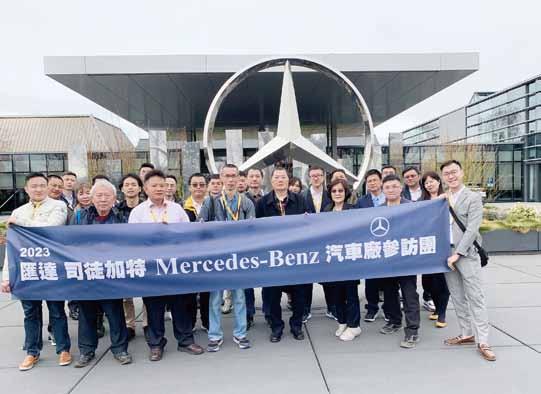


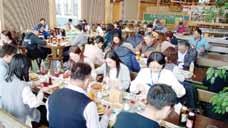
Exhibition 092 Fastener World no.200/2023

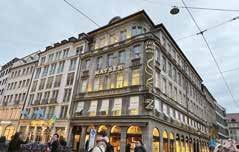

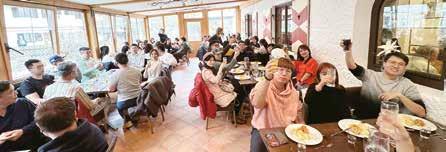










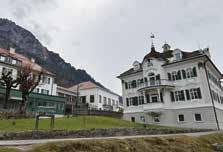

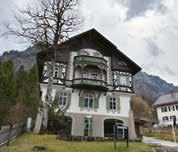
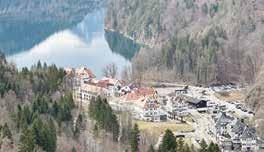









089 Exhibitions >> Hardware & Fastener Componentsno.58/2023
the Fair
Travel After
3Re Theorem Reuse, Reduce, Recycle
Preface
Readers will not find some super scientific treatise in this article. Nevertheless, it will certainly be of interest in today's difficult times when an energy, ecological or overall economic crisis threatens. There is nothing that readers do not already know from their own universal experience. Here, the author tried to recapitulate what's already known, unfortunately littlerespected rules and implement them for the specific conditions of screw joints. Are there reasons and possibilities for using the 3Re theorem, which means Reusing, Reducing, Recycling in this industry as well? The answer is – YES, there are!
Reuse
How to clean the surface of rusted bolts? For example, can a spider (Fig. 1) help with that?

But now seriously. Surface corrosion is the most common and least harmful type of corrosion, because it uniformly attacks the entire surface of the part and is visible to the naked eye. As long as it has not penetrated into depth, it can be easily be removed without losing the original mechanical properties of the carrier of this corrosion, i.e. metal bodies. Corrosion is actually a nasty parasite that robs the national income of 5 to 7%. It is primarily necessary to fight against it, but once it has arisen, it can be easily removed from the surface and thus considerable material values can be saved. The simplest method is the use of a steel brush. Suitable for series use of the vibration deburring machine known e.g. from the production of rolling bearing cages. The size and shape of the chips are at the same time very important. Another option is blasting with a suitable abraser medium or a chemical method to remove corrosion.
Paradoxically, corrosion can also play a positive role, as it prevents screws from loosening (Fig. 2). The U.S. Navy even has a patented method of accelerated corrosion of screws so that they do not freely loosen during ocean liners. Despite

everything, the most important thing is prevention!
Reducing and Recycling
Products made of homogeneous material as steel, plastics (Fig. 3) and non-ferrous metals are OK from the point of view of recycling. However, it is worse with the combination of these diverse materials. The combination of steel-plastic ( Fig. 4) or steel-rubber (Fig. 5) can serve as an example.
The separation of non-metallic parts in this combined materials would be practically very expensive, and therefore both materials are disposed together in melting furnaces at a temperature of approx. 1,600°C.

3R 定理:再利用–減量–回收 090 Technology >> Hardware & Fastener Componentsno.58/2023
Fig. 1. Spider on bolt
Fig. 2. Corrosion can also prevent loosening
Fig. 3. plastics
The plastic ring represents rather insignificant part of the nut DIN 985 weight (4.55%) but considering the production of the thousands tonnes of the nuts, it is not so insignificant a mass of the pollutants which do not belong to the melting process and they contribute to the air pollution, e.g. 1,000 pieces of DIN 985 M18 nuts = 44 kg and the part of the plastic component is ca. 2 kg. The abovementioned fasteners are only one example of using the accessories of non-metallic origin for the purpose of locking or sealing together with metal parts. The relevant EU directives on waste dictate how to dispose plastic materials (Directive EU 2019/904 of the European Parliament and of the Council of 5 June 2019 on the reduction of the impact of certain plastic products on the environment). The aim of the waste regulation policy should be the minimisation of their negative impacts on the environment. The fasteners are not excluded from it and therefore they cannot be privileged.
Phosgene (other name: carbonyl dichloride), which evolves during the smelting process is a chemical compound with the chemical formula COCl2. At low temperatures, it is a colourless liquid with the smell of stale hay or rotting leaves. Phosgene gas is a highly toxic material that was used as a chemical weapon during the First World War.
The obligation of the manufacturer or the supplier of fasteners made of heterogeneous materials should have instructions not only for use, but also for disposal at the end of its usefl life! ( Fig. 7)



It's simple, e.g. for the locking nuts in Fig. 6, in which the plastic retaining ring used is easily replaceable or replaced by an all-metal variant.

Of course, there are many other practical ideas, for example C-zero technology. This applies mainly to protective atmospheres for the heat treatment of screws and nuts. These atmospheres (hardening and cementation) contain high amounts of CO2 and flow freely into the surrounding air. The solution options are quite real. It is primarily the replacement of carbon with nitrogen or other inert gases (Argon). After all, a provocative question still remains open. Is it technically possible to use the protective atmosphere twice? But this is no longer a problem for manufacturers of fasteners, but of furnace equipment such as SAFED, EBNER, AICHELIN, etc. The author is ready to establish contact with these and similar companies again.
Conclusion
The article presents several types of how it is possible to contribute to the improvement of the environment and reduce the energy consumption of production, even in the field of mechanical joining of parts. In the context of gigantic global industrial production and consumption, this may seem insignificant, but one must keep in mind that even the connecting elements, which mostly condition the production of higher structural units, have a not insignificant impact. After all, the well-known rule applies that: The sum of small events causes namely a big event, and so is this case.
091 Technology >> Hardware & Fastener Componentsno.58/2023
Fig. 7. Assembly and disassembly instructions
Fig. 4. steel-plastic
Fig. 5. steel-rubber
/// Article
Copyright owned by Fastener World ///
Fig. 6. Nuts
by Jozef Dominik & Dominik Makuka
Hand Tools and Fasteners: Two Scenarios in a Growth Backdrop

手工具與扣件「預期成長」下的兩樣情
Although inflation and geopolitical tensions remain a threat for Taiwan and the world in 2023, there is relatively less uncertainty and volatility than during the pandemic. Taiwan hand tool and fastener industries are in general optimistic about a potential rebound and growth in the export market beginning from the second quarter of this year. While Taiwan hand tool industry is going full steam at export sales, some of the Taiwanese fastener manufacturers selling to Europe are at the crossroads of transformation and upgrade, in for a face-off with a new challenge. What the fastener industry is experiencing could serve as a reference for the hand tool industry to upgrade. The following article will provide an industry overview on each of them.
Taiwan Hand Tool Industry Poised for Rebound
The past two years was plagued by the epidemic, leaving global hand tool vendors with high inventories which impacted the order books of Taiwan suppliers. However, the situation began to alter in the fourth quarter of last year when some hand tool vendors’ inventories started to slowly decline. The inventory level of retailers and OBMs (original brand manufacturers) remain relatively high as of January 2023, but still there is market demand for construction materials do-it-yourself products and supplies which led to a rebound in the demand for professional hand tools.
Some hand tool suppliers have predicted that OBM customers will increase their orders as soon as this April, and the hand tool market is expected to see a significant recovery in the third quarter of this year. The long-established and publicly traded Taiwanese digital hand tool maker, Eclatorq Technology, stated a steady and robust growth and their anticipation for hand tool demand growth from the aerospace, automotive, high speed rail and do-it-yourself markets. The recovery
of equipment manufacturing, machinery and construction industries this year is also expected to drive the growth of hand tool demand. In addition, Basso, one of the top Taiwanese players in nail guns, said there is currently no decrease in professionalgrade nail gun demand this year and that a stronger revenue growth momentum is expected for the second half of 2023.
The geopolitical friction between the United States and China has increased this year. According to overseas press, the United States is looking to end the war between Russia and Ukraine as soon as possible. If this war ends, the hand tool demand driven by reconstruction could be considerable. Furthermore, the United States was confronted with coming waves of snow storm since around last Christmas holidays which continued up to this spring at the writing of this article. The onslaught of the weather beast prompted a surge in orders placed at automotive repair shops, which in turn boosted demand for hand tools and automotive parts, benefiting some Taiwanese suppliers.
Taiwan’s total exports of fastening tools to the world grew 4.5% from US$1.03 billion in 2021 to US$1.076 billion in 2022. From 2019 prior to the pandemic to 2022 after the pandemic, Taiwan’s fastening tool exports to the world stayed on a stable growth track in general. Globally, the world’s market for fastening power tools reached
092 Editorial >> Hardware & Fastener Componentsno.58/2023
close to US$1 billion in 2022. An industry research firm’s report predicts that this market will grow at a compound annual growth rate of 3.7% to US$1.24 billion by 2028. In summary, there is still growth momentum for the world’s (including Taiwan’s) fastening tool market in 2022. Given industry’s forecast of highly probable recovery in the second half of this year, the market size of fastening tools for 2023 is expected to grow further. The upcoming global exhibitions will provide a perfect springboard for vendors to expand sales. In addition, last year’s financial reports show that Granger, Simpson Strongtie, and other vendors tapping into both hand tools and fasteners gained significant sales growth, indicating a good prospect for these two products.

Globalization is a thing of the past. There is no return for cheap products now with the hike of raw material prices. Unlike fasteners, hand tools are mostly customized, diversified and provided at high unit prices in small quantities. They have high added value and diverse sales channels, and therefore can serve as a reference for fastener industry’s transformation towards high value. Hopes are high for innovating products through Industry 4.0 and Smart Factory, and providing products with competitive price and proper market positioning.
Taiwan Fastener Industry Strives For Carbon Reduction and Upgrade





























2023 is a critical turning point for Taiwan fastener industry. The European Union announced almost abruptly that it will implement Carbon Border Adjustment Mechanism (CBAM) on a trial basis from October 1, 2023, extending the implementation target to the fastener industry, which has aroused strong concern from the fastener industry in Taiwan. Failing to meet the carbon emission standards stipulated by the EU and provide the EU with carbon emission data verified by a third party will entail a substantial carbon tax, which will seriously impact the revenue and profitability of fastener companies in Taiwan.


Based on the current EU regulations, the transitional period (starting from October 2023) will require the importers of products to the EU to report within month after the end of each quarter the of imported products, the carbon content products, and a proof that the exporter has carbon fees. During the transition period, content of products can be reported without When the official implementation launches importers will be required to report of May the amount of imported products, of the products, the number of CBAM verification report. This means the carbon will have to be verified after the official exporters of fasteners to the EU, they have related to carbon emission, either directly or to importers (the reporting obligator).

093 Editorial >> Hardware & Fastener Componentsno.58/2023
The current regulation is not transparent and clear enough, putting pressure on Taiwan fastener suppliers. With details yet to be fully disclosed, it will involve numerous cost considerations when Taiwan fastener suppliers ponder on a plan for carbon reduction and upgrade. In Fastener World Magazine’s field trip throughout the industry, we found a supplier who still felt the urgency even after having planned years ahead and invested millions of New Taiwanese Dollars in carbon inventory and carbon footprint, and here we have only touched on suppliers now in the process of transformation and upgrade. For those that still rely on conventional manufacturing process, they will be more overwhelmed by the challenge of CBAM.
By the deadline of this article, we got wind that the EU could be releasing the details of CBAM at the end of this March. Some Taiwanese fastener companies have called on the government and domestic fastener associations to quickly coordinate with the EU to come up with compatible carbon tax measures. Besides, some of them have already run out of time waiting and started to call on all fastener companies to pool their ideas and develop carbon reduction technologies tailored to Taiwan fastener production lines through mutual assistance or cross-industry collaboration, and promote the technologies to the whole industry via the government and leading enterprises. These technologies may include heat recycling, solar power generation, producing green power, developing fasteners that can help reduce carbon emission, etc. These won’t be enough, however, and will need more new innovative technologies with higher carbon emission efficiency to accelerate Taiwan fastener industry compliance to EU carbon reduction regulations.
Taiwan fastener traders also need to take into account the government’s and EU’s carbon tax regulations and set supply criteria that fastener suppliers can follow. CBAM involves the EU, Taiwan government and Taiwan fastener industry, and the three must have a set of compatible compliance regulations. The Taiwanese government has established direct communication with European fastener associations (EFDA and EIFI) to be updated on CBAM regulations. Regardless, this is a tug-of-war between Taiwan and the clock. By making good use of Taiwan’s strong supply chain and its collaboration mechanism, the fastener industry in Taiwan still has a chance to surmount new challenges.
Lastly, as the pandemic draws to a close, international trade shows and business events are starting to flourish, which is good news for the fastening tool and fastener industries. It is expected that quantitative easing will be introduced by various countries to boost the competitiveness of companies and restore the economy to its pre-pandemic glory.
by Dean Tseng, Fastener World




094 Editorial >> Hardware & Fastener Componentsno.58/2023






















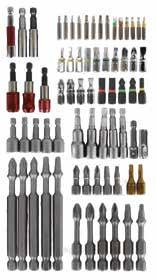




How does Japan Fastening Tools Industry React to Carbon Reduction
日本緊固工具產業如何因應減碳趨勢
Introduction













According to the Japanese government’s figures released on April 2022, the country’s greenhouse gas emissions dropped to an all-time low in the financial year ending March 2021. This drop is attributed to slower industrial activities during the pandemic and the increased adoption of renewable energy. It marks the seventh year of consecutive declines, with a 5.1% reduction in emissions from the previous year, down to 1.15 billion tonnes of carbon dioxide (CO2) from 1.21 billion tonnes. This level of emissions is the lowest since 1990-91 when Japan first started compiling data on greenhouse gas emissions.



As the world’s fifth-biggest carbon emitter, Japan raised its climate goal in April 2021, pledging to reduce emissions by 46% from 2013 levels by 2030, rather than the previous target of 26%. If achieved, emissions in 2030 will be 0.76 billion tonnes, representing an 18.4% reduction from 2013 levels. Despite the seven-year decline, Masayuki Koiwa, a director at the environment ministry, stated that Japan still has a long way to go to achieve carbon neutrality and cannot be too optimistic. He emphasized the need to maximize the use of renewable energy, particularly solar power, to achieve the 2030 target.














Japan’s greenhouse gas emissions had surged following the 2011 nuclear disaster at Fukushima, which led to the closure of nuclear power plants and an increased reliance on fossil fuels. However, Japan’s emissions have turned lower since reaching a peak of 1.41 billion tonnes in the 2013-14 year. Although ten reactors have been restarted, which is the most since the Fukushima incident, only five are currently operational. The government aims to promote renewable energy to make up for the nuclear power deficit, and in the financial year 2020-21, renewable energy accounted for 19.8% of electric power generation of one trillion kilowatt-hours, up 1.6% from the previous year. In contrast, nuclear energy fell 2.3 percentage points to 3.9%, while thermal power made up 76.3%, up 0.7 percentage points.
It is difficult to estimate how much of Japan’s industrial emissions come specifically from the fastening tools industry, as there are many different types of industrial processes and products that contribute to emissions. However, the fastening tools industry is likely a relatively small contributor to Japan’s overall industrial emissions, as it is a specialized sector within the broader manufacturing industry.
Fastening Tools Industry Reacts to Carbon Reduction












































The fastening tools industry, like many other industries, has likely faced increasing pressure to reduce its carbon emissions in response to the growing concerns over climate change. In Japan, the government has set ambitious targets for reducing carbon emissions, and many companies in the country have been taking steps to reduce their carbon footprints.
One response is the development of more environmentally friendly products. To achieve this, companies use materials with a lower carbon footprint, such as recycled or sustainably sourced materials, or develop tools that require less energy to produce or use. For example, some companies are developing electric or battery-powered tools that emit lower levels of emissions than traditional tools that run on old generation of batteries.
096 Industry Focus >> Hardware & Fastener Componentsno.58/2023







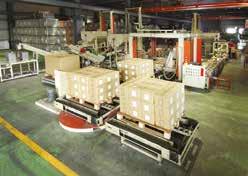
Hardware & Fastener Components no.58/2023 097
• Japanese companies have shifted from using older generation batteries based on nickel-cadmium or nickel-metal hydride technologies in their fastening tools, to newer generation lithium-ion batteries. The newer batteries have higher energy density, longer lifespan, and do not suffer from memory effect, making them more efficient. They are also considered more environmentally friendly, as they do not contain toxic materials and can be recycled. Some companies are also exploring the use of solid-state batteries, which offer even higher energy density and faster charging times, but are still in development.
• Another example, some companies are experimenting with new materials and technologies, such as 3D printing or nanotechnology, to reduce the amount of waste generated in the manufacturing process and improve energy efficiency. Some potential areas where nanotechnology is applied in the fastening tools industry in Japan include the development of stronger and lighter materials, coatings that improve resistance to wear and corrosion.
Additionally, companies are investing in more sustainable production processes, such as using renewable energy sources or improving their supply chain management. The
fastening tools industry in Japan is responding to the carbon reduction trend and making strides towards a more sustainable future.
• The fastening tools industry in Japan is also exploring the use of renewable energy sources to power its production processes. Some companies are investing in solar panels to generate their own electricity and reduce their reliance on fossil fuels.
• Additionally, to further reduce their carbon footprint, some fastening tools producers are engaging in carbon offsetting initiatives, such as reforestation or the use of carbon capture and storage technologies. Additionally, circular economy principles are being adopted by some companies, which involve designing products and processes with reuse and recycling in mind. Through these efforts, the fastening tools industry in Japan is striving to become more sustainable and contribute to a cleaner, greener future.
• The adoption of renewable energy in the fastening tools industry in Japan is part of a broader trend in the country towards sustainable production practices and reducing carbon emissions.
Conclusion
Overall, the fastening tools industry in Japan, like many other industries, is likely to take a multifaceted approach to responding to the carbon reduction trend. This involves developing more sustainable products, investing in sustainable production processes, and engaging in carbon offsetting or other initiatives to reduce their carbon footprints. As the urgency of the climate crisis continues to grow, it is likely that companies in this industry and others will face increasing pressure to take meaningful action to reduce their environmental impact.
Article by Behrooz Lotfian
Copyright owned by Fastener World

098 Industry Focus >> Hardware & Fastener Componentsno.58/2023
Carbon Reduction Challenges for South Korean Fastening Tools Suppliers
Introduction
South Korea, one of the world’s most fossil-fuel reliant economies, has sought to reach carbon neutrality by 2050. However, the government of South Korea has recently reduced the 2030 industrial carbon reduction target from the previous 14.5 percent set in 2021 to 11.4 percent , while maintaining the previous administration’s nationally determined contribution (NDC) goal. Korea’s NDC goal is reducing carbon dioxide emissions by 40 percent, what it called a reasonable adjustment, to 436.6 million tons from the country’s peak of 727.6 million tons in 2018. Although the industry appreciated the target adjustment, the private sector believes that the 11.4 percent goal is still ambitious considering Korea’s manufacturing-centered industry structure.
The government plans to decrease carbon emissions by speeding up the energy transition from fossil fuels to nuclear energy and renewables. The plan is to use less carbon intensive energy sources to reduce emissions by 45.9% from 2018 levels by 2030, up from the existing target of 44.4%.
Korea has eased industrial reduction targets, which was claimed to be in light of realistic domestic conditions including raw material supply and technology prospects. In the energy sector, the target was boosted to reduce greenhouse gases through a balanced energy mix between nuclear power and renewables, and by expediting the move to clean energy such as solar and hydrogen. To do so, South Korea plans to increase nuclear energy to 32.4% of total power production by 2030, up from 27.4% in 2021, and renewables to at least 21.6% of power output from 7.5%, the commission said.
South Korea supplies more than 40% of its electricity from coal and has promised to reduce the portion by 2030, but environmental groups have said the goals are too low and criticised Korea’s plans to build more coal-fired plants.
Manufacturing Sector
The manufacturing sector has been recognized as a key contributor to global carbon emission. The future product demands are coupled with the manufacturing and consumption of goods and services which allow sustainable development and reduction of carbon footprint. While some manufacturing organizations have come to terms with the reality of carbon emission, a large proportion of organizations are still searching for how to reduce carbon emissions.
Undoubtedly, bring down the industry’s dependency on fossil fuels, recycling components and embracing more environmental design practices will be critical, as it will be requiring on a better way of working across the value chain.
Korean manufacturers must accept their huge responsibility for emissions of greenhouse gases. Extensive shifts need to be made across every aspect of manufacturing in this country by transforming operations and products. Overproduction, waste and too many dependencies on fossil fuels have historically been significant contributors to emissions in this industry, but manufacturers now should take major steps to overturn this trend.
Fastener and Tooling Industry
As stated earlier, Korea heavily relies on fossil fuels for its energy needs, particularly coal and oil. This is one of the key challenges for this country to reduce carbon emissions since these fuels are major sources of greenhouse gas emissions. Additionally, demand for the energy is growing rapidly in Korea due to its fast-paced economic growth and industrialization. This makes it even more challenging to reduce carbon emissions.
While Korea has made significant progress in developing renewable energy sources, they still only account for a small portion of the country’s total energy mix. This limits the potential for carbon emission reductions through renewable energy and it is more
099 Industry Focus >> Hardware & Fastener Componentsno.58/2023
南韓緊固工具廠商的減碳挑戰
challenging when it comes to industries like machinery, fastener, and tooling.



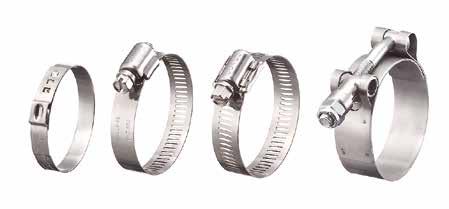
Relatively small land area and compactly populated cities make it challenging, and significantly costly, for fastening tools suppliers to build large-scale renewable energy infrastructure such as wind farms and solar power plants.
Korea’s economy is immensely dependent on exports, particularly in the technology and manufacturing sectors. This makes it challenging to apply carbon emission reduction policies that could impact the competitiveness of industries like fastening tools, to compare with other exporters such as Taiwan, China and Japan.
In Korea, the fastening tools industry is characterized by many small and medium-sized enterprises (SMEs) that specialize in the design and production of tools and other fastener related products. These companies have a strong focus on innovation and quality and have gained a reputation for producing high-quality fastening tools that meet international standards. In order to bring this sector to net zero, there is a need for utilizing clean electricity and production processes. Additionally, it is required to scale up existing technologies that capture and store carbon so that it doesn’t enter the atmosphere.
Wider adoption of new technologies, processes driven by artificial
go a long way to reducing the environmental impact of our manufacturing, processes and services.

The world is changing, and the potential is there for all fastening tools manufacturers to use this digital transformation to do things better. Fastening tools suppliers can’t only look at their own internal process but must look beyond that towards all other parties along the supply chain.



Finally, policy will be critical to achieving decarbonization in fastening tools industry in Korea, since it will require large capital investments, not something that most suppliers will be able to do on their own. The Korean government has also recognized the importance of the fastening tools industry and has implemented various policies to support its growth. These include funding for research and development, tax incentives for companies that invest in new technologies, and support for overseas marketing and sales activities.
Governments can assist with the investment cost, provide demand pull for low-carbon products, and use trade policy to protect domestic low-carbon industries from cheaper but higher-carbon products from abroad. These policies use different forces to encourage action, and the industry may need all of them to make such extensive changes.
Sources:
From remanufacturing to recycling, by World Economic Forum. The challenge of decarbonizing heavy industry, by Brookings
100 Industry Focus >> Hardware & Fastener Componentsno.58/2023
Shervin Shahidi Hamedani / Copyright owned by Fastener World
Net Zero and the Topic in Focus for Auto Parts Industry

淨零碳排與汽車零組件產業關注議題
Net Zero and the Automotive Industry
The concept of ACES (Autonomous, Connected, Electrified, Share & Service) was first proposed by Daimler, and has gradually become a common goal for all major automakers, not only driving the automotive industry toward high-tech development, but also creating a different business model. Toyota has announced that it will no longer manufacture and equip cars with gasoline engines after 2050, and the collaboration between Honda and GM will be expanded to a wide range of technologies. Leading Japanese automakers, including Nissan, are actively laying out and setting goals for the development of Hybrid EVs, fuel cell vehicles, selfdriving vehicles, and Internet of vehicles, actively looking toward the future.
In 2030, the number of newly registered vehicles in Europe may increase by one-third to 24 million per year. In the U.S., the sales volume of new vehicles will increase by 20% to 22 million in 2030, while the sales volume in China is expected to increase by 30% to 35 million. This huge growth will necessitate additional investment in new production and development capabilities by automakers and component manufacturers, i.e., new, highly specialized vehicles at lower prices. Automotive companies and their component makers will have to make big decisions in the coming years, facing the pressure of decreased profit margins while investing significantly in new plants, electric vehicles and other megatrends.
Major Countries Push for Carbon Neutral Policies
In recent years, key words such as “climate change,” “climate crisis,” “carbon neutrality,” “carbon emissions,” and “carbon footprint” have become issues of increasing concern to global governments, international corporations, environmental organizations, and the general public. The environmental and climate issues involved are not only a risk that companies and governments must be aware of, but also a key to sustainable
development, and addressing the climate crisis and carbon neutrality is becoming increasingly important. “Carbon neutral” or “net-zero carbon” means that carbon emissions and carbon reduction offset each other to achieve net-zero carbon emission. There are two ways to do so: (1) using carbon compensation to absorb the released carbon, for example, by planting more trees (2) reducing the release of carbon at source, etc., which may be a strong and powerful way to counteract the problem.
Carbon emissions come from various human activities, mainly from burning fossil fuels, which account for 70% of the greenhouse gases in the atmosphere and continue to have a profound impact on global warming. Therefore, carbon neutrality is crucial to addressing the climate crisis, with the goal of slowing down, adjusting, or even reversing the challenges of civilization’s survival under the climate crisis. To keep the global temperature rise below 1.5°C, the world must become carbon neutral by 2050 or earlier. In recent years, governments, businesses and investors around the world have been increasingly concerned with “net zero” emissions policies, seeking to accelerate decarbonization of economic entities, not only in power generation, but also in transportation, vehicles, buildings, manufacturing, and everyday life.
Several countries and regions have announced plans to achieve carbon neutrality by midcentury, including China’s announcement to achieve carbon neutrality by 2060. The EU, Canada, South Africa, Japan, South Korea, and Hong Kong have pledged to achieve carbon neutrality by 2050. The U.S. is committed to achieving carbon
101 Industry Focus >> Hardware & Fastener Componentsno.58/2023
neutrality by 2050, and its power generation will be carbon neutral by 2035. New Zealand, Chile, Denmark, France, Hungary, and UK have further incorporated the 2050 target into law. Some countries have set more aggressive targets, such as Austria and Iceland by 2040 and Finland by 2035. With current commitments, about two-thirds of global carbon emissions and 75 percent of GDP are expected to be fully decarbonized by mid-century. Table 1 shows the carbon neutrality policies of major countries.
Table 1: Carbon Neutral Policies of Major Countries
UK British Standards Institute (BSI) Carbon Neutral Standard National credit deduction quality certification
Australia Greenhouse Friendly Label (2001-2010) 2010/07:NCOS Carbon Neutrality Program
Japan
China
National-level activities to reduce emissions and achieve carbon neutrality.
60% reduction in emissions by 2050
Reduce to 20% of 2000's emissions by 2020
60~80% emission reduction by 2050
Establish domestic emissions trading system, trial runs of domestic credit system
The Eleventh Five-Year Plan sets target of 20% reduction in energy consumption per GDP
Before the Copenhagen Conference, it was proposed to reduce emissions by 40-45% per dollar of national income by 2020. The proposed targets for the 12th Five-Year Plan are to achieve a 72% combined utilization rate of industrial solid waste and a 15% increase in resource yield.
The "Carbon Pollution Reduction Plans" trading system will be in place to control total emissions after the Kyoto Protocol.
National "Low Carbon Action Plan" , developing environment-related policies and technologies 2009: Draft of national carbon footprint standard
Establishment of Clean Development Mechanism Committee to embark on CDM program.
The National Forestry Administration (NFA) established the Green Carbon Fund, which provides investors with the opportunity to purchase carbon sink for acquiring credits.
U.S.
Norway
Corporate "Climate Leaders" to provide guidance on reduction and carbon neutrality.
Set up carbon neutral projects to purchase deductible credits and invest in the development of various reduction projects in developing countries.
Various emission reduction and energy conservation assistance bills
More than 80% carbon reduction by 2050. 20% of electricity generation from renewable energy.
Local government agencies, universities and colleges voluntarily set carbon neutrality targets.
Sectoral emission reduction bills (e.g. residential) to achieve 30%~40% carbon reduction by 2020. Add energy tax.
Source: Industrial Technology International Strategy Development Institute, ITRI (Mar. 2023)
Carbon Efficiency and Resource Efficiency at the Core of Net-Zero Carbon Emission Implementation in the Automotive Industry
The Circular Car Initiative (CCI), launched by the World Economic Forum, brings together 40 companies and research institutes to develop the concept of “circular car”, which focuses on increasing value and efficiency, using less energy and resources to meet the mobility needs of more people. By systematically introducing new technologies, material innovations, efficient vehicle use and whole-life management, the entire automotive value chain will be rebuilt. The ultimate goal of the “circular car” is to reduce vehicle lifecycle emissions and maximize the carbon efficiency and resource efficiency of each vehicle. It is estimated that carbon efficiency and resource efficiency will be improved by 75% and 80% respectively by 2030.
Carbon efficiency is to reduce the emissions of the whole life cycle of the vehicle, and it is necessary to start from every aspect, including lightweight design, introduction of renewable energy into assembly lines, extended life of the vehicle, recycling and reuse, etc. Resource efficiency is to reduce the number of materials that cannot be recycled,
Carbon Neutral Policies Carbon Reduction
Item
Policies Other Policies
102 Industry Focus >> Hardware & Fastener Componentsno.58/2023
and to increase the proportion of renewable materials, parts remanufacturing and materials reuse.
Net Zero and Circular Cars
The automobile industry is one of the heavy industries with high emissions. The manufacturing and use of automobiles account for about 10% of global greenhouse gas emissions and use a large amount of steel, aluminum, plastics and other high-emitting materials. With the increase of population and the middle class, it is estimated that the global transportation demand will grow by 70% in 2030. If we continue to follow the linear economy, namely the mass production and mass sale operation model, the number of vehicles and carbon emissions will grow by 70%, which is contrary to net zero.
However, by adopting the circular economy model, through sharing and recycling of parts and components, the number of vehicles will be reduced by 30% and carbon emissions will be reduced by 50%. In fact, driven by regulatory requirements and changing consumer demand, the automotive industry is embarking on a wave of circular economy transformation, prompting manufacturers to develop new operating models toward the goal of zero waste and zero emissions. The international automotive industry is using resource recycling strategies to create a net-zero blueprint, not only to reduce carbon, but also to create new business opportunities, which is also a trend that the automotive industry chain needs to grasp.
National regulations are becoming more stringent on the carbon emissions of automobiles, and the global automobile industry has been aggressively pursuing electrification. While electric vehicles reduce carbon emissions during the use phase of the vehicle, batteries increase carbon emissions during the manufacturing and end-processing phases. With the development of electrification and low-carbon energy, the recycling of vehicle materials and components is the key to achieving net-zero for vehicles. A complete assessment of a manufacturing plant’s greenhouse gas emissions requires consideration of every link in the value chain,
from upstream material extraction and processing, emissions from the plant’s own operation process, to downstream processing after products sold, use and recycling of products sold, and other stages of emission sources that need collection and disclosure of data. In general, more than 80% of the total emissions from manufacturing plants come from the upstream and downstream value chains.
The manufacturing industry must examine the sources of emissions from the overall value chain to fully respond to carbon reduction measures, among which grasping the changing trend at the market end is an important leverage point to replan the low-carbon value chain. The needs and habits of car users are changing, favoring affordable, comfortable and convenient mobility solutions that are environmentally friendly, electrified and smart. Automotive manufacturers need to design supply network plans that take into account user preferences, regulations and technology development trends. If manufacturers fail to grasp the market demand and misjudge the situation to allocate R&D and focus of operation to the wrong places, they will not only lose the opportunity to create value, but also face the risk of being eliminated.
Four Transformation Paths of the “Circular Vehicle Initiative”
The four transformation paths of the “Circular Vehicle Initiative” will enable the automotive industry to shift its operational focus from production and sales to the development of mobility services. The mobility service model will provide more opportunities to offer diversified services to users because of the increased frequency of vehicle use, which may lead to frequent component replacement and software and hardware upgrades. This will enable the automotive industry to develop services as a source of revenue and fundamentally replace the linear model of mass production and mass sales. The automotive industry needs the cooperation of the whole value chain, including R&D designers, original equipment manufacturers, material and component suppliers, mobility service providers, and recycling processors, to promote the “circular car” transformation, devoting in the four transformation paths. Figure 1 shows the circular car and net-zero carbon emission implementation approach.
Figure
Design Material processing Parts manufacturing Assembly Logistics Use Collect Disassemble Recycle Material development Repair Overhaul / Re-manufacture Repair Energy decarbonization Extend life of use Improved Efficiency of Use Material Cycling End-of-life Vehicle Light materials Material Recycling (degrading for reuse) Thermal plastic composite materials EV, fuel-cell (hydrogen) cars Renewable/solar energy Smart recharging Car electrification Modular design of automotive parts Parts re-manufacture and reuse All-in-one system Mobility as a Service Increased vehicle use Mobility on demand 103 Industry Focus >> Hardware & Fastener Componentsno.58/2023
Source: Industrial Technology International Strategy Development Institute, ITRI (Mar. 2023)
1. Circular car and net-zero carbon emission
implementation approach
a. Energy Decarbonization
The energy decarbonization path is led by vehicle manufacturers, with suppliers and recycling processors investing in low-carbon technologies, and energy suppliers and governments increasing renewable energy supply and promoting energy transition in infrastructure. Material suppliers develop new technologies to decarbonize high-emitting materials such as steel from the manufacturing process. Material suppliers and recycling processors incorporate energy efficiency measures and expand the use of renewable energy in processes and material recycling.
Component suppliers are expanding low-carbon production solutions and renewable energy use in component manufacturing and assembly processes, replacing internal combustion engine power systems with electric and hydrogen energy to reduce carbon emissions. Energy suppliers, vehicle manufacturers and mobility service providers are working together to develop renewable energy and charging facilities.
b. Material Cycling
Material cycling needs to be led by R&D and design companies, re-designing products in modules, working with vehicle manufacturers and suppliers, prioritizing the selection of monolithic materials, using secondary or renewable materials, and reusing parts or materials from end-of-life products, and in the manufacturing process, reducing material waste and achieving complete material recycling in the value chain. Materials are recycled to eliminate the need for raw material extraction and processing emissions. The process of resource cycling, such as component remanufacturing, as well as steel, aluminum and other materials recycling, will bring new opportunities for profit.
In the use phase, vehicle repair stations give priority to remanufacturing parts. At the end of the product’s service life, vehicle manufacturers, suppliers and recycling processors will work together to establish a recycling system for products and components, and improve processing technology to link with the resource cycle of the value chain and reduce resources that cannot be recycled. Initially, we can start with specific materials and let processors develop technologies to improve the quality of recycled materials.
To improve cost efficiency, upstream and downstream companies in the automotive value chain are working together to expand the scale of reverse logistics. For example, Renault has transformed its Flins factory, where new cars were originally manufactured, into a Re-Factory, inviting reverse logistics companies to move in and create a “circular ecosystem” that focuses on restoring used cars and remanufacturing parts. By matching supply and demand, parts and materials can be returned to the production line or aftermarket for reuse. For instance, BMW and recycling processors jointly established Encory Remanufacturing to focus on the logistics and recycling process of aftermarket automotive parts and components, so that remanufactured parts can be returned to BMW. Both Renault and BMW are concerned that in order to expand the scale of reuse and remanufacturing, used parts and components must be returned to the remanufacturing center, processed, and then matched with manufacturers and the use needs of service station.
c. Extending the Life of Vehicles
Extending the life of vehicles, components and materials requires close collaboration between vehicle manufacturers and after-sales service providers to implement modular design, and establish resource recycling centers to expand reuse and remanufacturing scale. With the mobility service business model, manufacturers have more incentives to extend the life of vehicles. Component manufacturing requires vehicle manufacturers and component manufacturers to integrate experience and feedback from the use, repair, and recycling of the vehicle, based on a durable, modular design that makes the vehicle easy to repair and disassemble and allows components to be refurbished or remanufactured. Automotive service stations use data analysis to predict when vehicles and components will need repair to optimize service life, and they prioritize the use of remanufactured components. Finally, at the end of product life cycle,
recycling processors improve the efficiency of collection, triage, and disassembly, and return components and materials to professional processors to restore function and value.
d. Increase Utilization Rate
Mobility-as-a-Service allows each vehicle to be used to its fullest potential, increasing the mileage and average ridership over the life of the vehicle. Led by mobility service providers and supported by car manufacturers and other data service providers, car rental, subscription, and sharing models allow users to select the type of vehicle and length of rental time that meet their needs. Mobility on Demand such as cabs, Uber, Yoxi, Grab, etc., and Ride Sharing (Ride Pooling), where manufacturers design vehicles according to the purpose of use, significantly increases the utilization rate of cars.
Conclusion
In response to the 2050 net zero target, the National Development Council of Taiwan has released four pillar strategies and two pillar foundations, including the transportation sector’s goal to fully electrify new vehicles sold in 2040. The Council will provide subsidies to accelerate the development and production of domestic electric vehicle products, together with process improvement and energy transformation in the manufacturing sector. Automotive OEMs and component manufacturers can use the relevant policies and learn from the practices of international leaders to plan for the transformation of electrification and devote themselves to the four transformation paths (decarbonization of energy, material cycling, extension of service life, and increase of utilization rate), so as to connect with the international community and expand business opportunities.
Article by : James Hsiao
Copyright owned by Fastener World
104 Industry Focus >> Hardware & Fastener Componentsno.58/2023

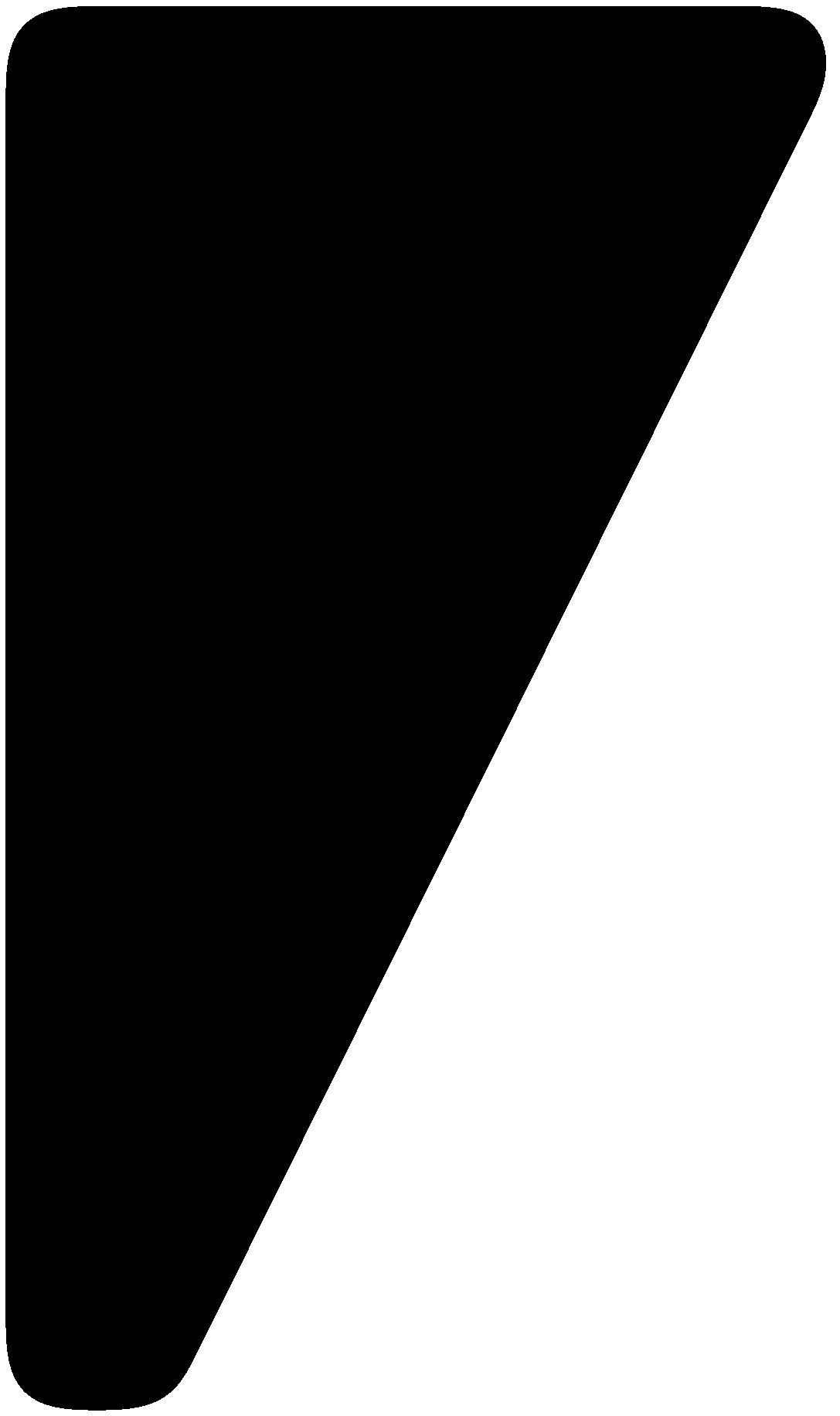
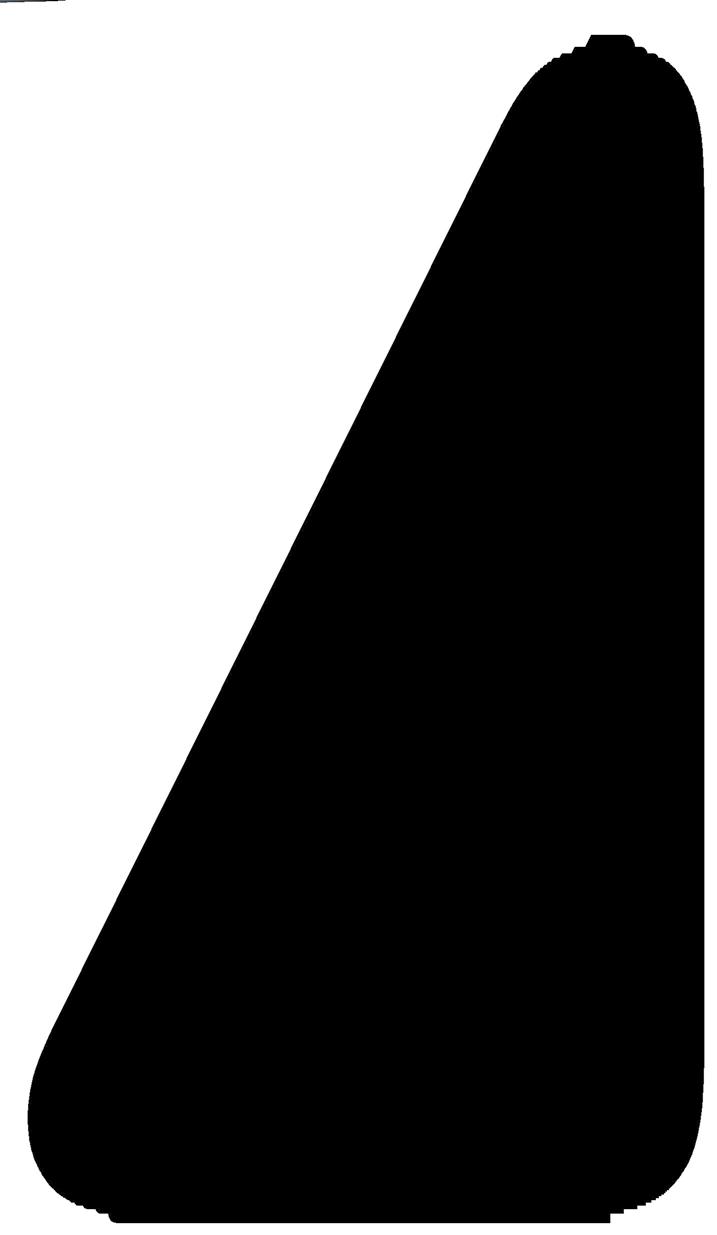
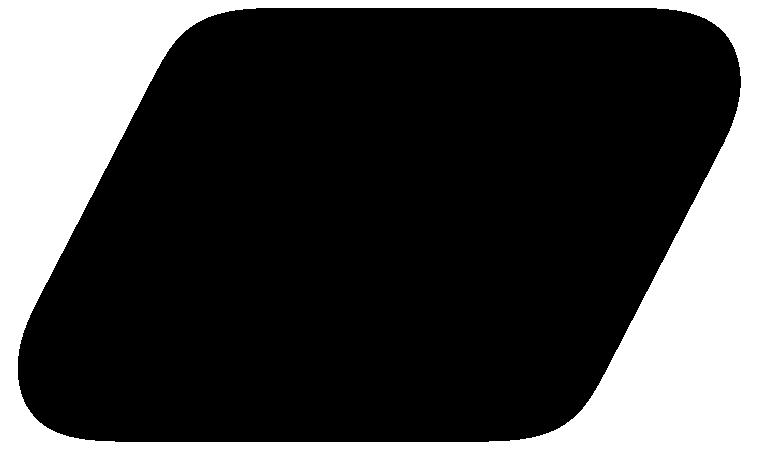






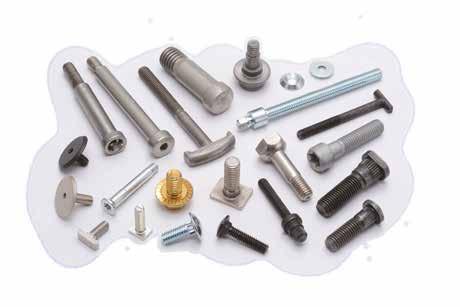



Hardware & Fastener Components no.58/2023 105






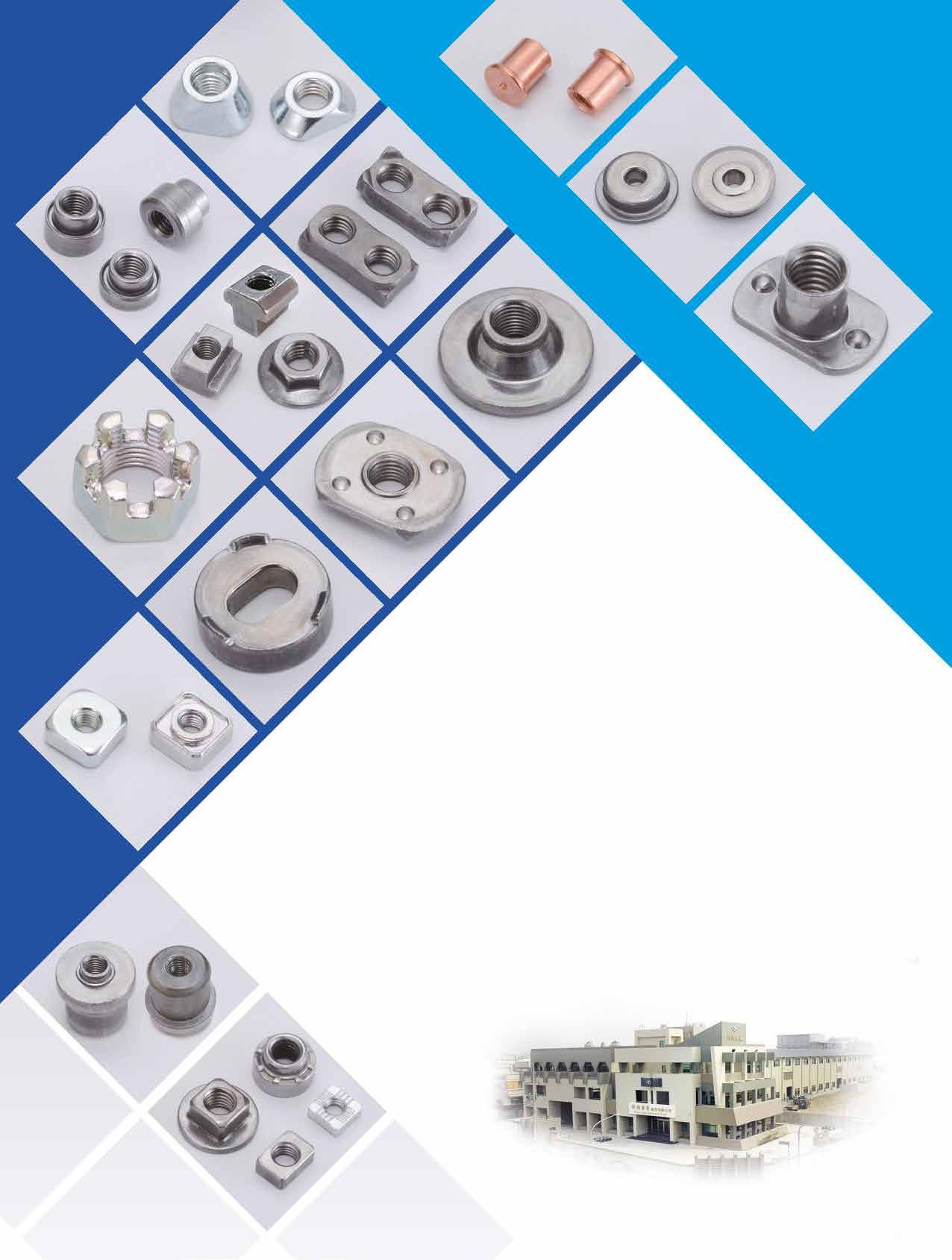






Hardware & Fastener Components no.58/2023 107






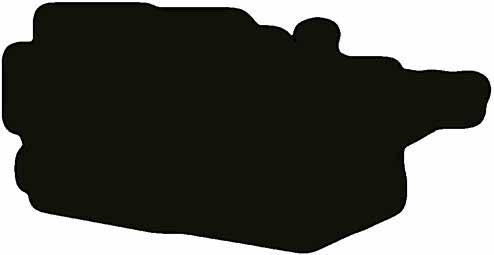






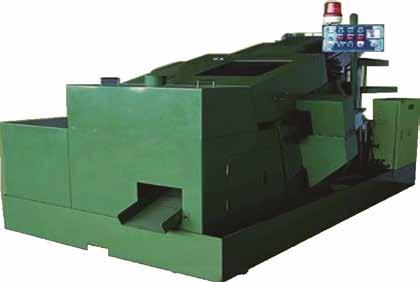






110 Hardware & Fastener Components no.58/2023



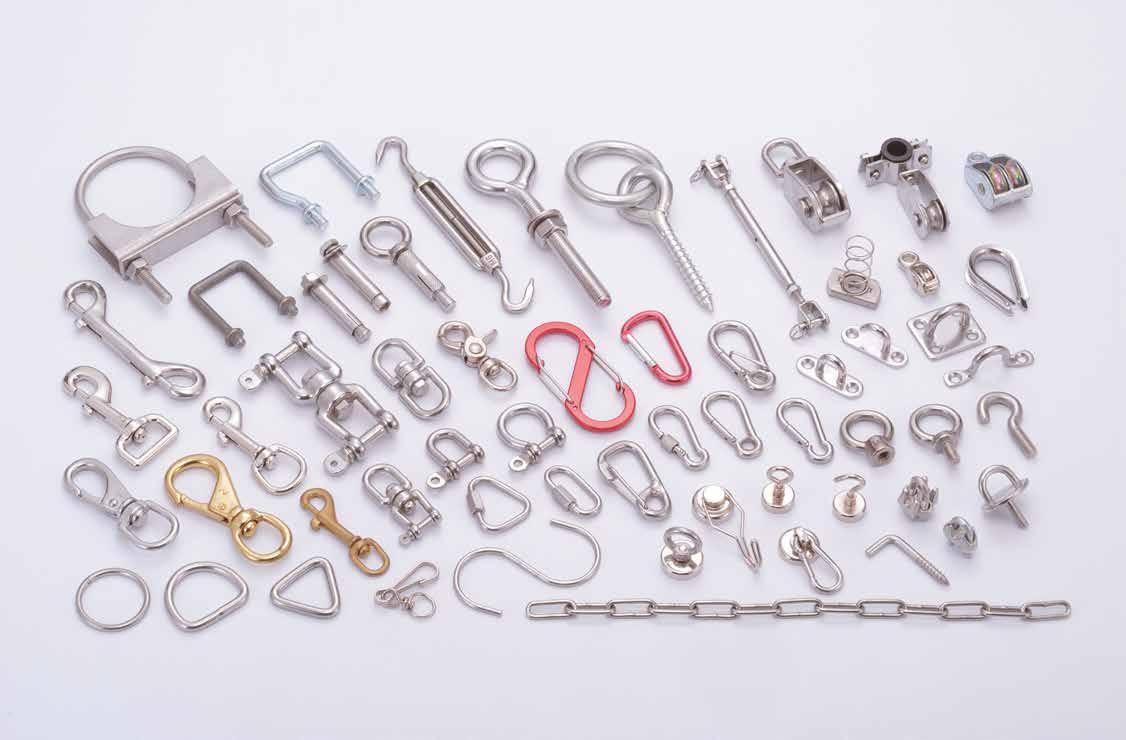
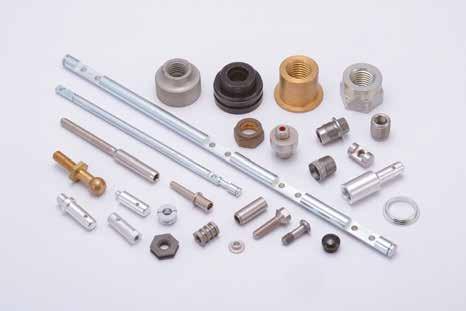









112 Hardware & Fastener Components no.58/2023



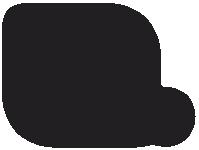


Hardware & Fastener Components no.58/2023 113

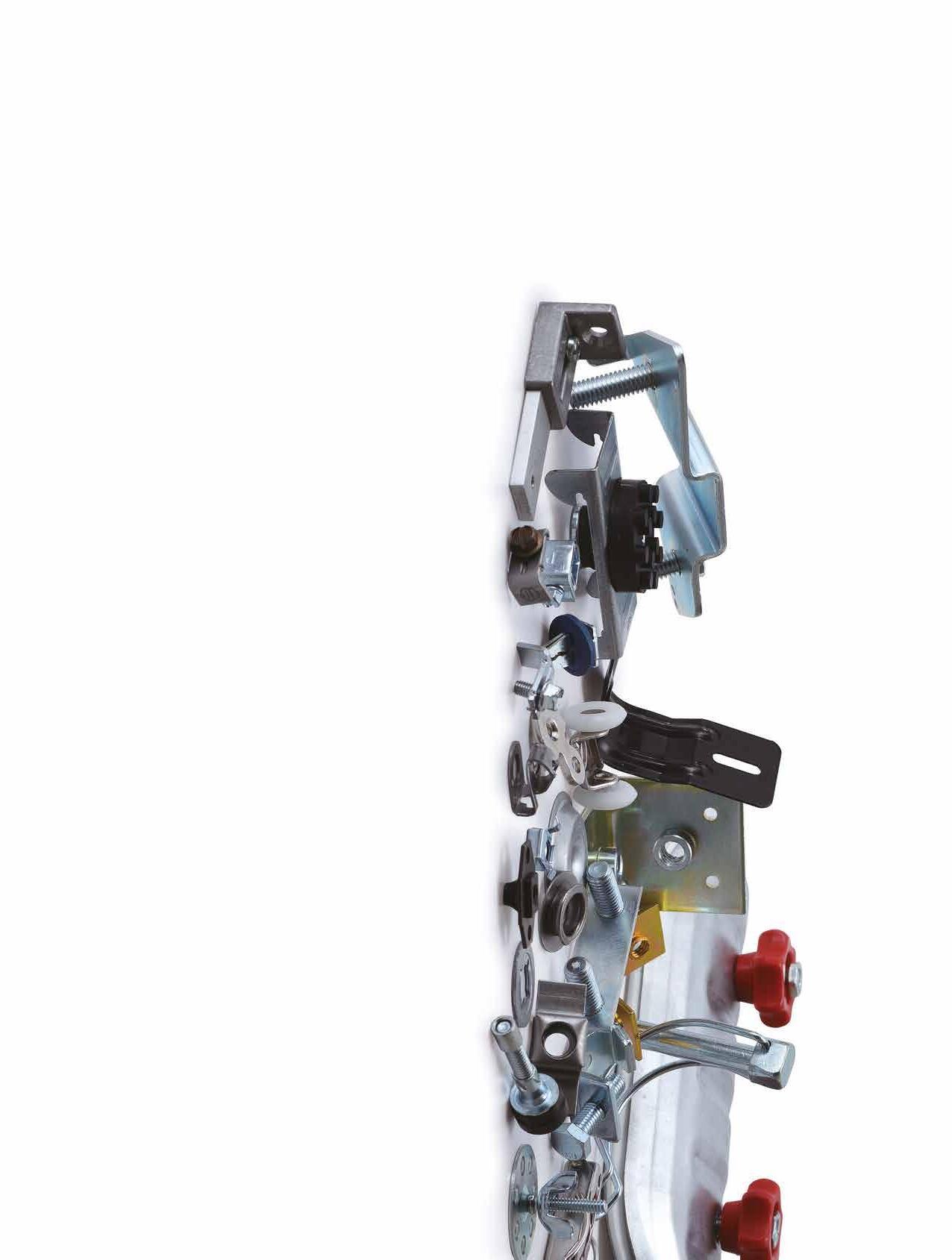




































































































 by Dean Tseng, Fastener World
by Dean Tseng, Fastener World





































































































































































































































































































 Aimreach
Aimreach







































 Good Use Hardware Guang Zhe
Fu Hui Fwu Kuang Gofast
Fast Asia Feng Yi
Fong Prean
Fontec Screws Fratom Fastech
J.C. Grand Jackway
J. T Fasteners
Jau Yeou
Ji Li Deng Joker
K. Ticho
Kai Shyun
Kao Wein
Hsin Ho
Hao Mou Home Soon
Homeyu Hsien Sun
Huang Jing
Hwa Hsing
Hwally Products
Hsiung Jen
Hsin Yu
Desirable Diing Sen
Dra-Goon Dunfa Evereon Fang Sheng
Katsuhana KCS
Key-Use
KOT Uniontek Kuang Tai
Good Use Hardware Guang Zhe
Fu Hui Fwu Kuang Gofast
Fast Asia Feng Yi
Fong Prean
Fontec Screws Fratom Fastech
J.C. Grand Jackway
J. T Fasteners
Jau Yeou
Ji Li Deng Joker
K. Ticho
Kai Shyun
Kao Wein
Hsin Ho
Hao Mou Home Soon
Homeyu Hsien Sun
Huang Jing
Hwa Hsing
Hwally Products
Hsiung Jen
Hsin Yu
Desirable Diing Sen
Dra-Goon Dunfa Evereon Fang Sheng
Katsuhana KCS
Key-Use
KOT Uniontek Kuang Tai









































 Spec Products Special Rivets
Spring Lake Standing Industrial Steel Stone
Shen Chou Shiang Ging
Shin Chun
Shin Jaan Soon Port
S&T Fastening San Yung
Sen Chang Sheh Fung & Sheh Kai
Screwtech
Pro Power Ray Fu Rong Yih Jiang Rexlen
Rodex Riu Precision
NCG Tools Nova. Fastener OFCO
Oriental Multiple Vietnam PATTA Pingood
Master United Masterpiece Hardware Maudle
Metal Fasteners Midas
Longhwa Loyal & Birch
Luna's Light Major Industries Mao Chuan
Kwantex Kuo Hsian Leaderwing Linkwell Long I
Spec Products Special Rivets
Spring Lake Standing Industrial Steel Stone
Shen Chou Shiang Ging
Shin Chun
Shin Jaan Soon Port
S&T Fastening San Yung
Sen Chang Sheh Fung & Sheh Kai
Screwtech
Pro Power Ray Fu Rong Yih Jiang Rexlen
Rodex Riu Precision
NCG Tools Nova. Fastener OFCO
Oriental Multiple Vietnam PATTA Pingood
Master United Masterpiece Hardware Maudle
Metal Fasteners Midas
Longhwa Loyal & Birch
Luna's Light Major Industries Mao Chuan
Kwantex Kuo Hsian Leaderwing Linkwell Long I

























 Sun Through Super DPD
Taiwan CMC
Taiwan Metiz Alliance
Taiwan Shan Yin
Yun Chan Zi Ea Zyh Yin
Your Choice Yow Chern Yoang Ming Yiciscrew
Y Y. Cable Yang Yi Technology
Yeswin Machinery Wyser
TFTA TIFI Vertex Vertigo Forming Solutions
Wa Tai
We Power Wei In Whirlpower Wingtone Wan Iuan
Sun Through Super DPD
Taiwan CMC
Taiwan Metiz Alliance
Taiwan Shan Yin
Yun Chan Zi Ea Zyh Yin
Your Choice Yow Chern Yoang Ming Yiciscrew
Y Y. Cable Yang Yi Technology
Yeswin Machinery Wyser
TFTA TIFI Vertex Vertigo Forming Solutions
Wa Tai
We Power Wei In Whirlpower Wingtone Wan Iuan
























































































































































































































